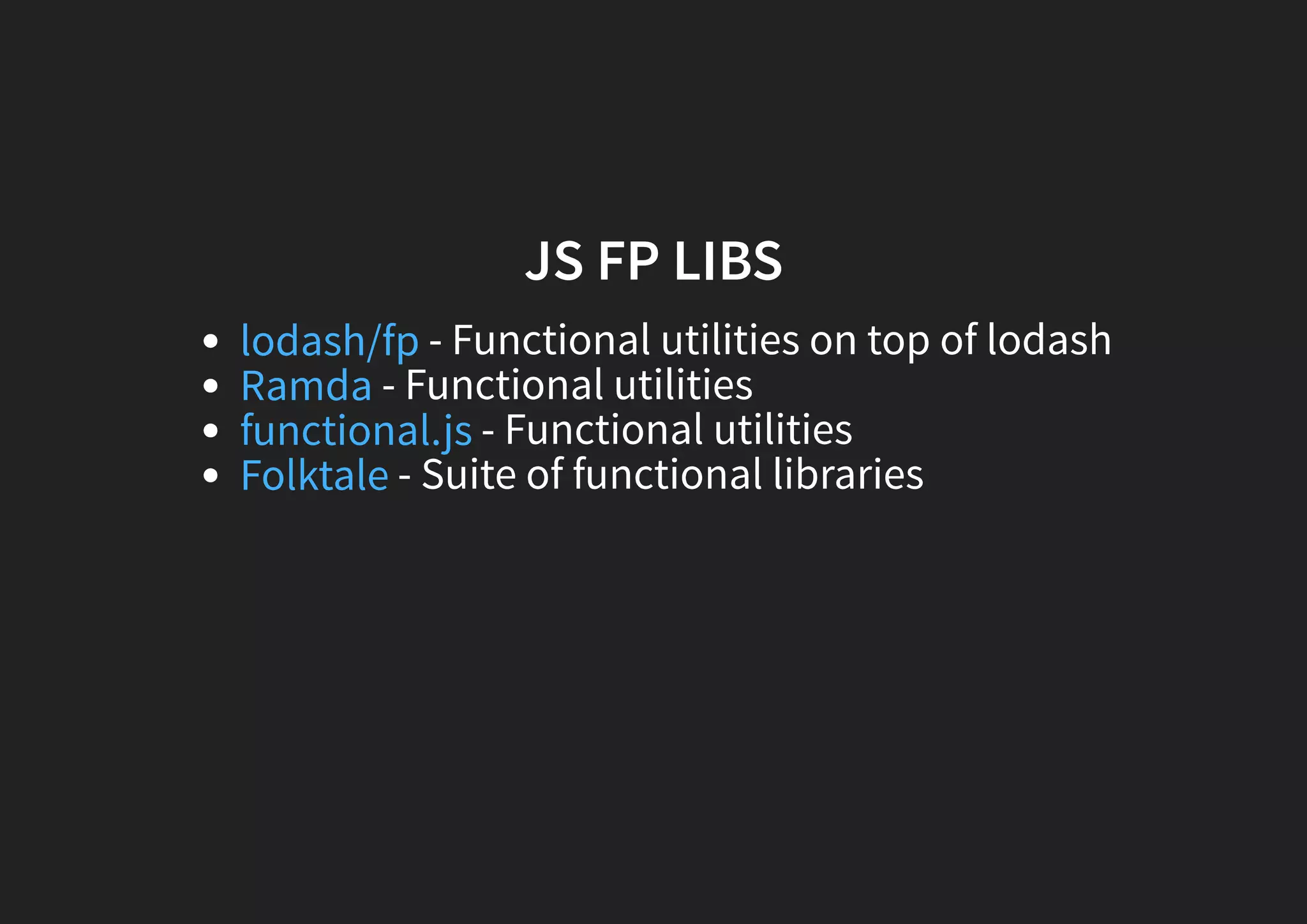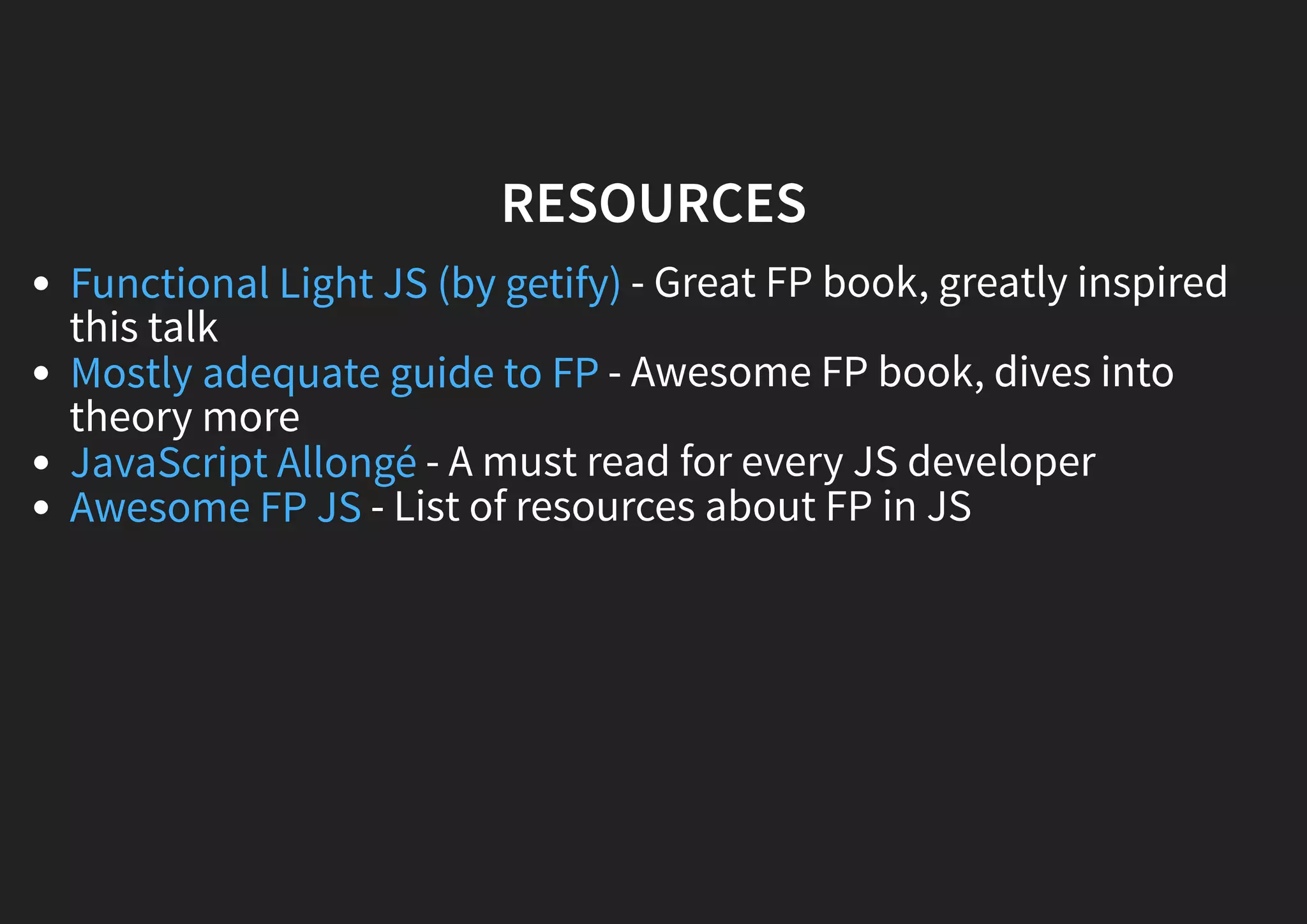The document introduces functional programming (FP) concepts in JavaScript, emphasizing why FP is preferred for writing elegant, readable, and maintainable code. Key topics include first-class functions, higher-order functions, function purity, immutability, and function composition, along with practical examples of these concepts in action. It concludes that adopting FP leads to more reliable and testable applications while addressing common challenges in function management.
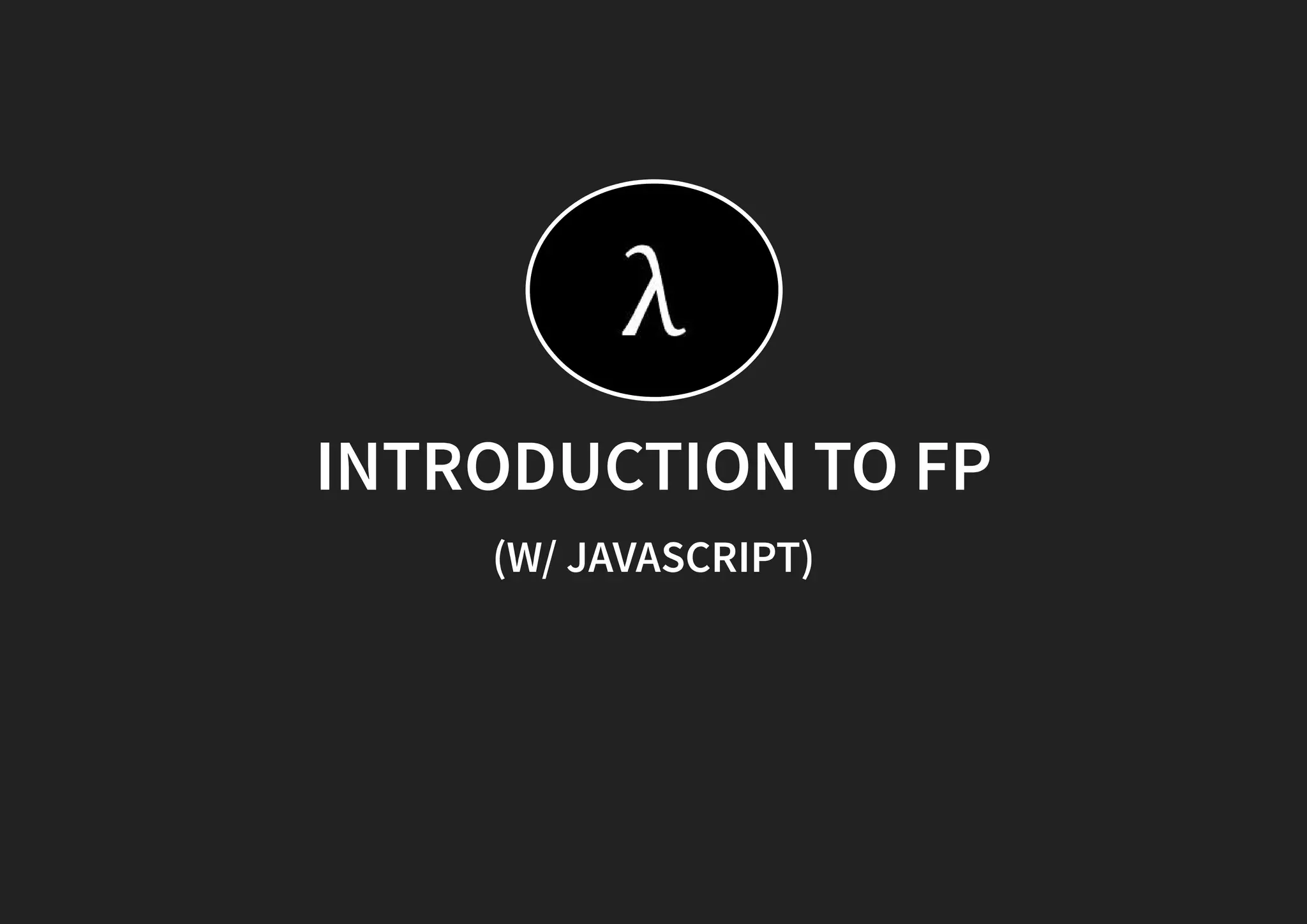

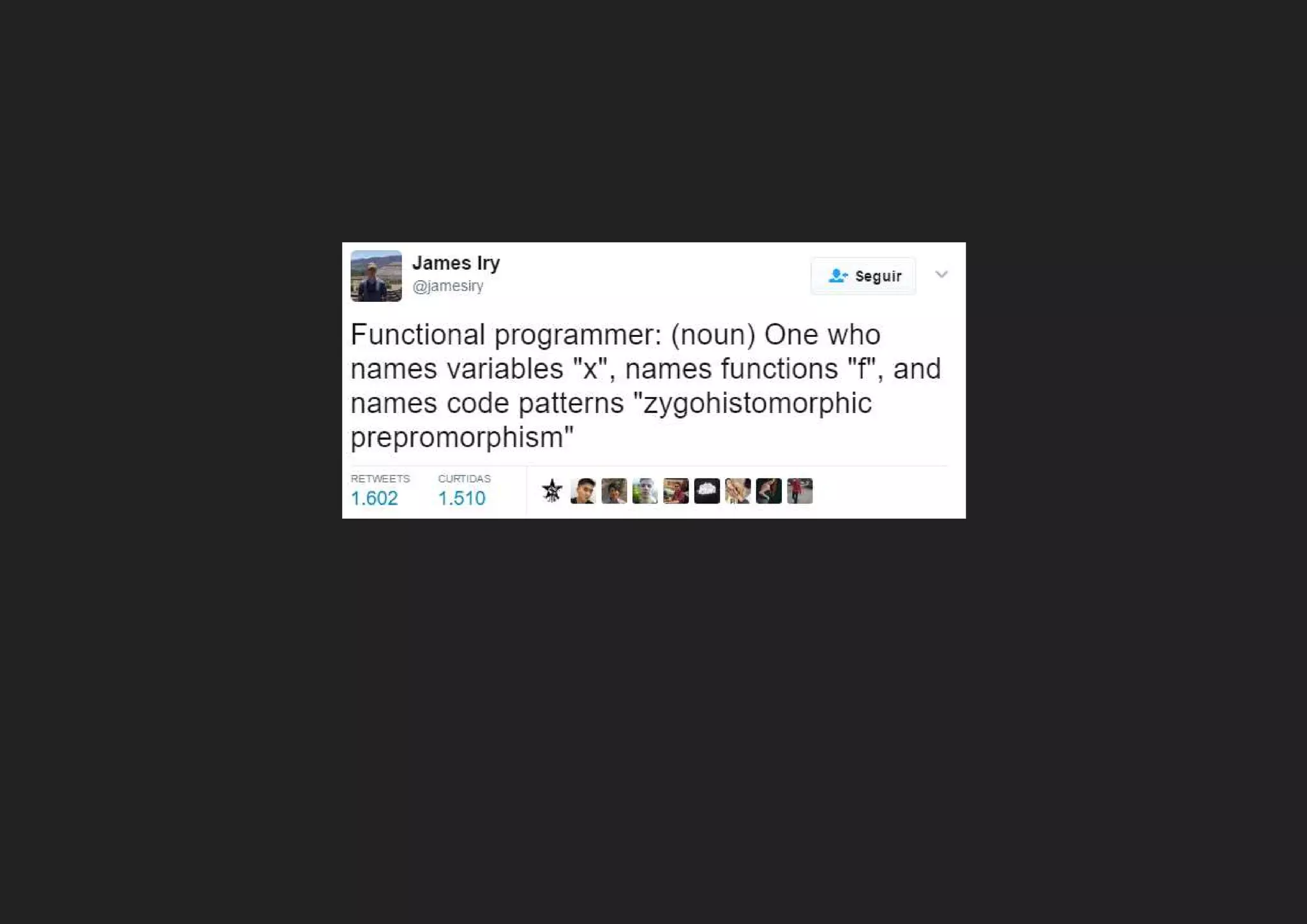

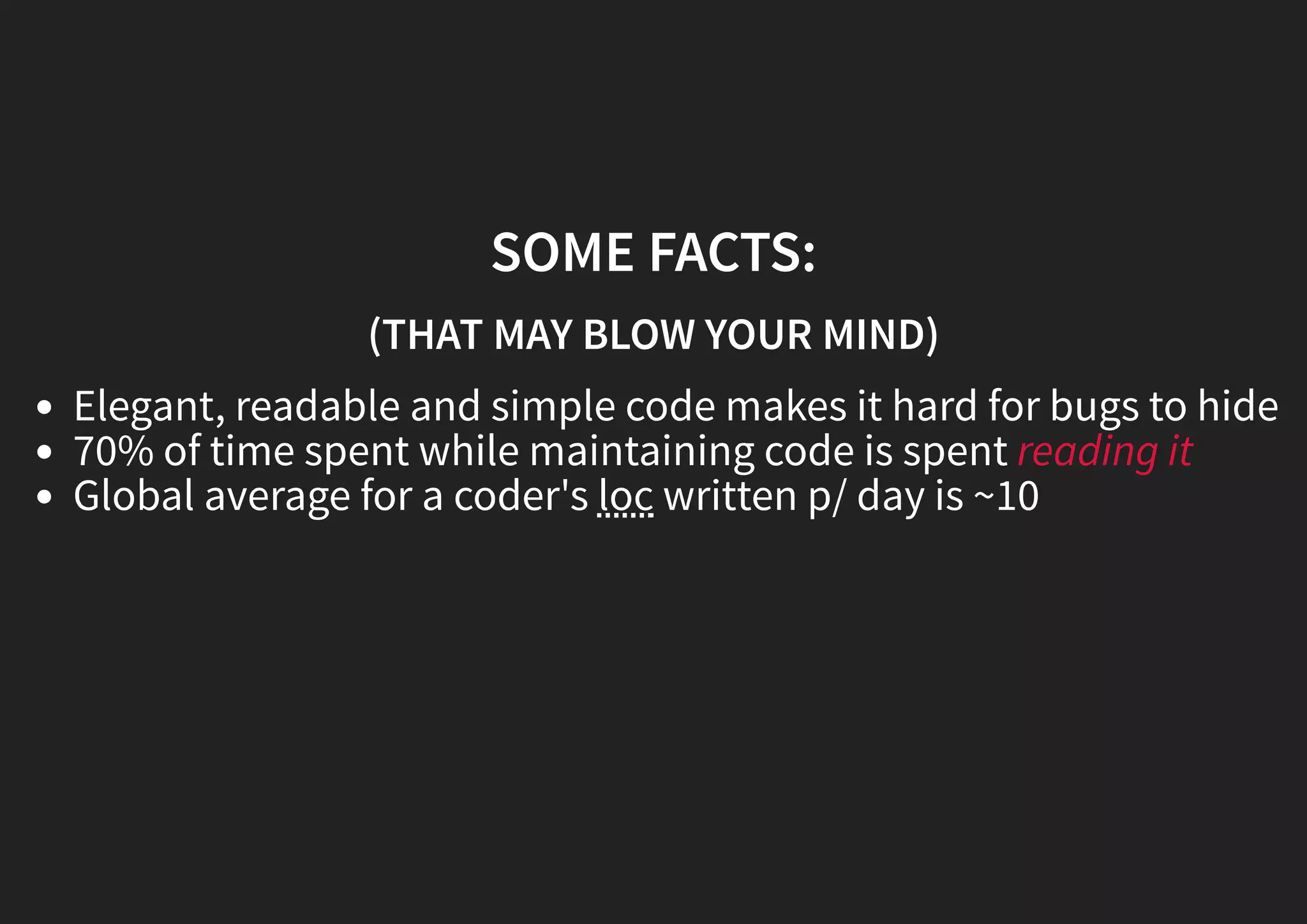

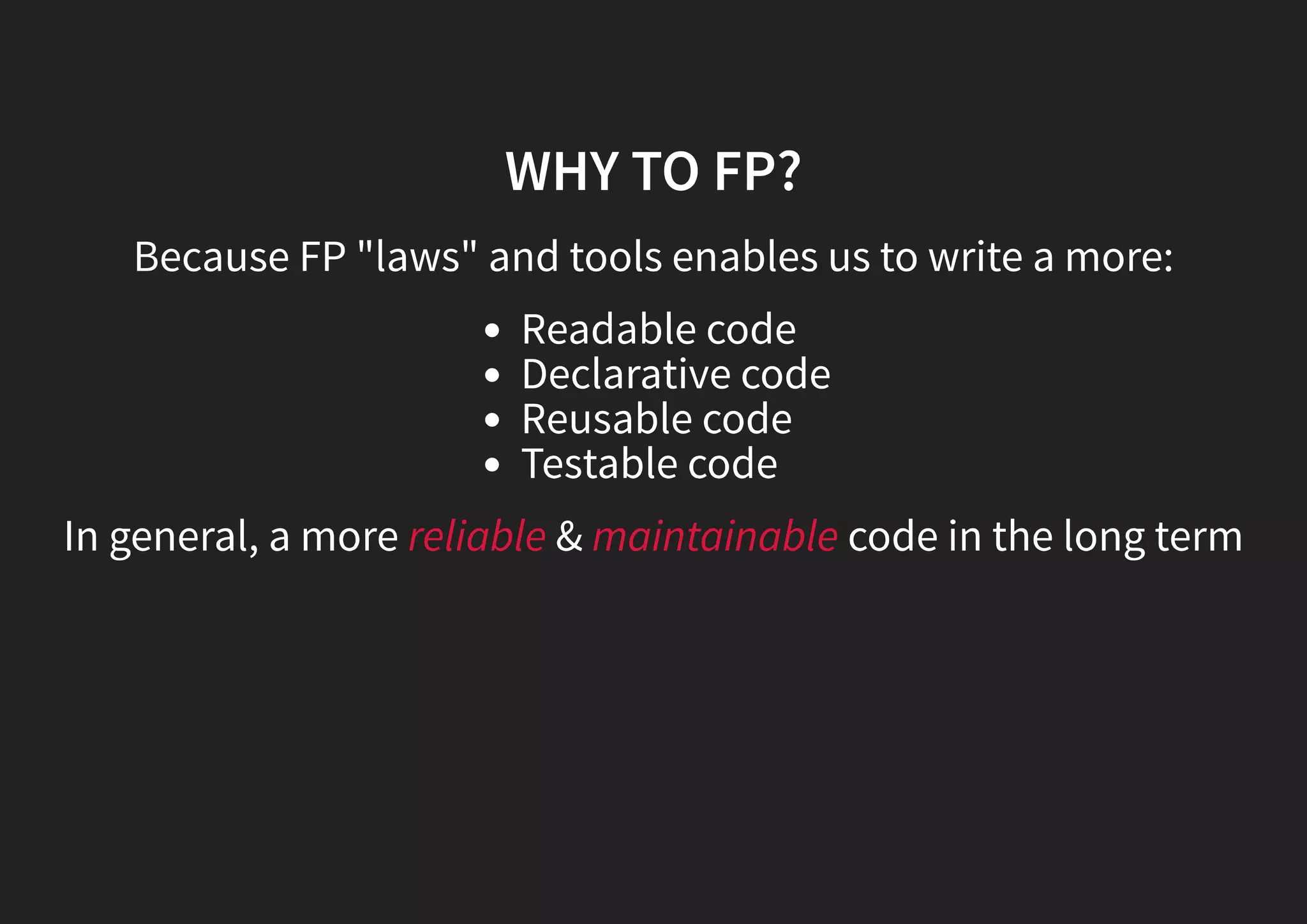
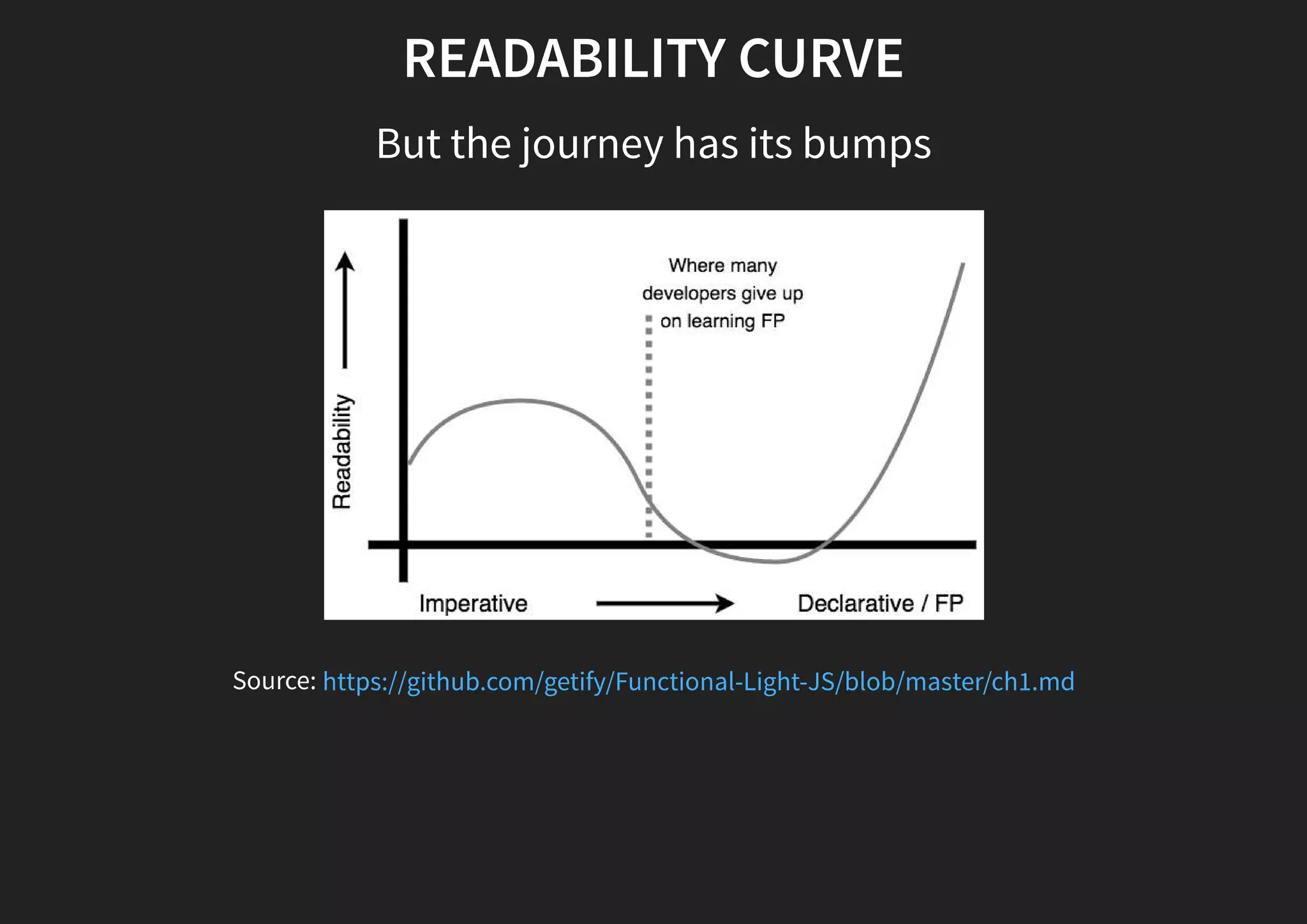
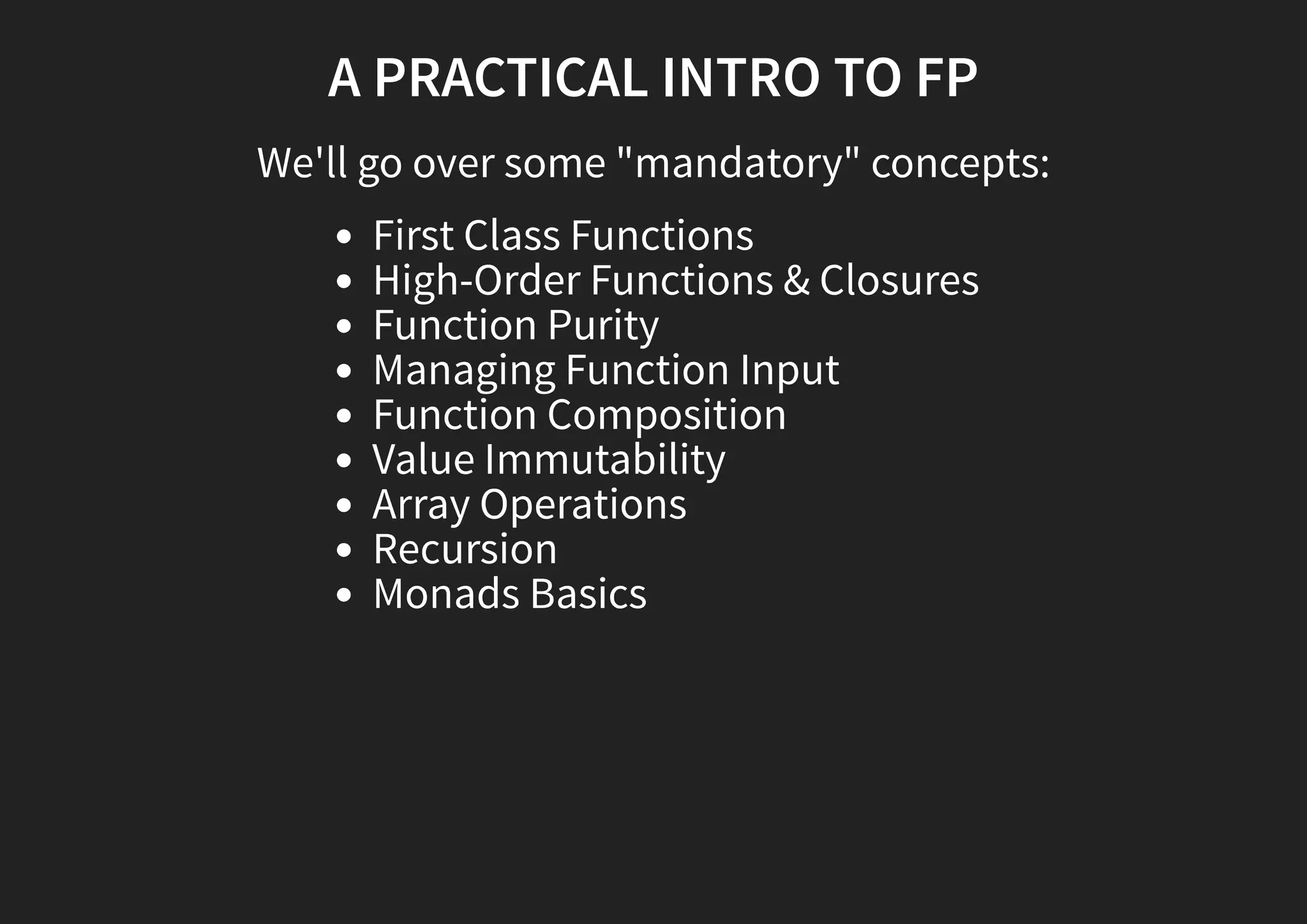
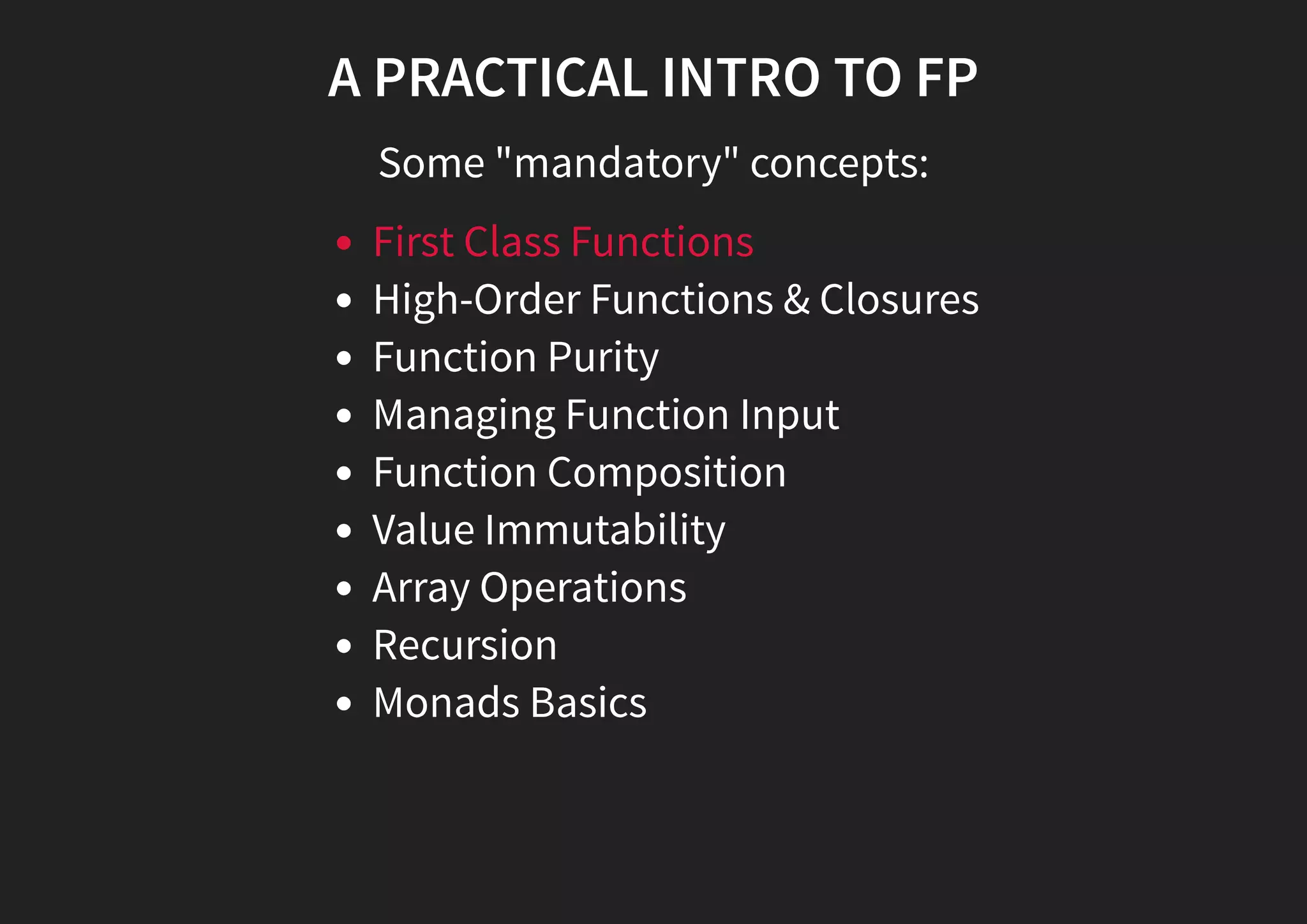
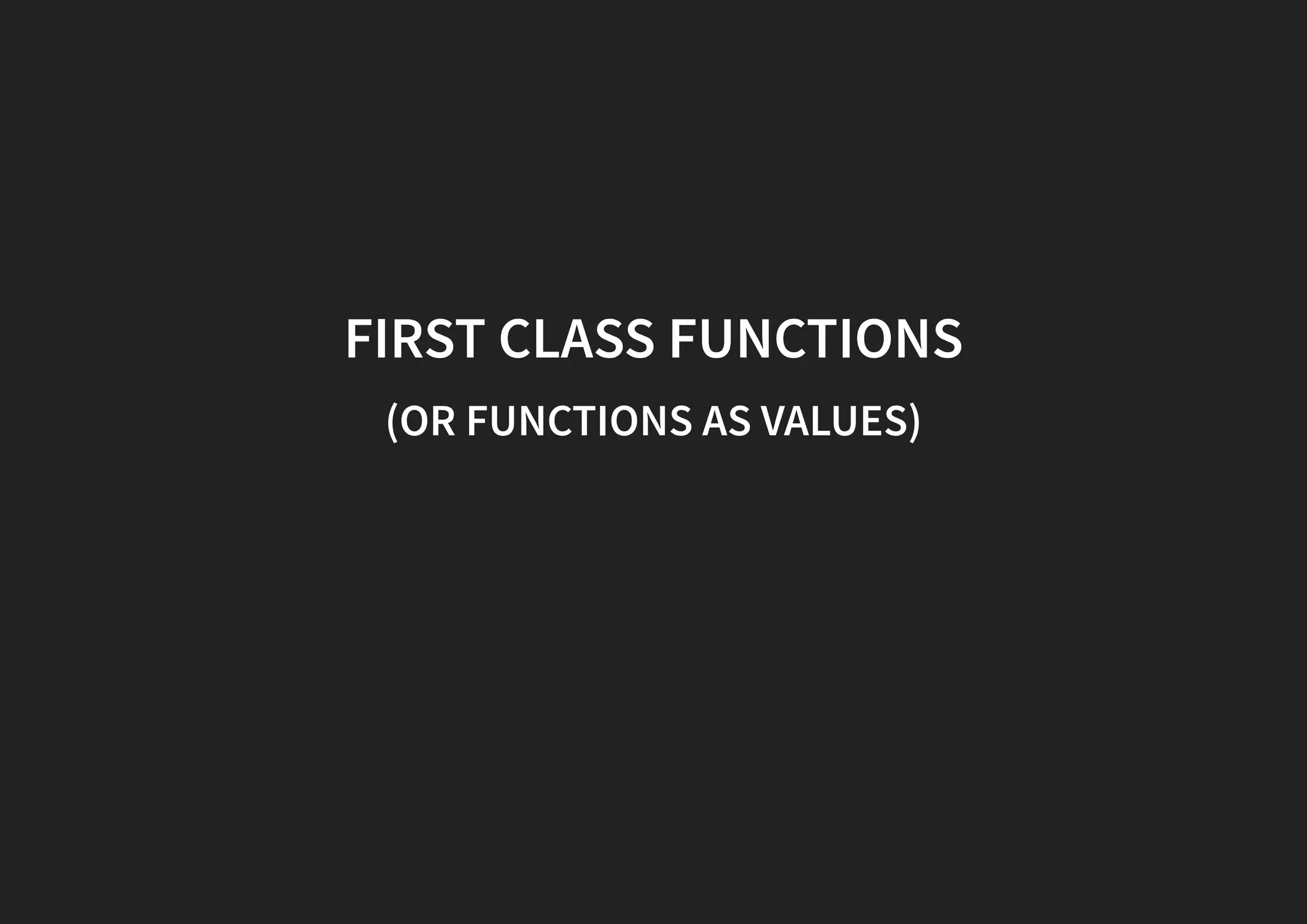
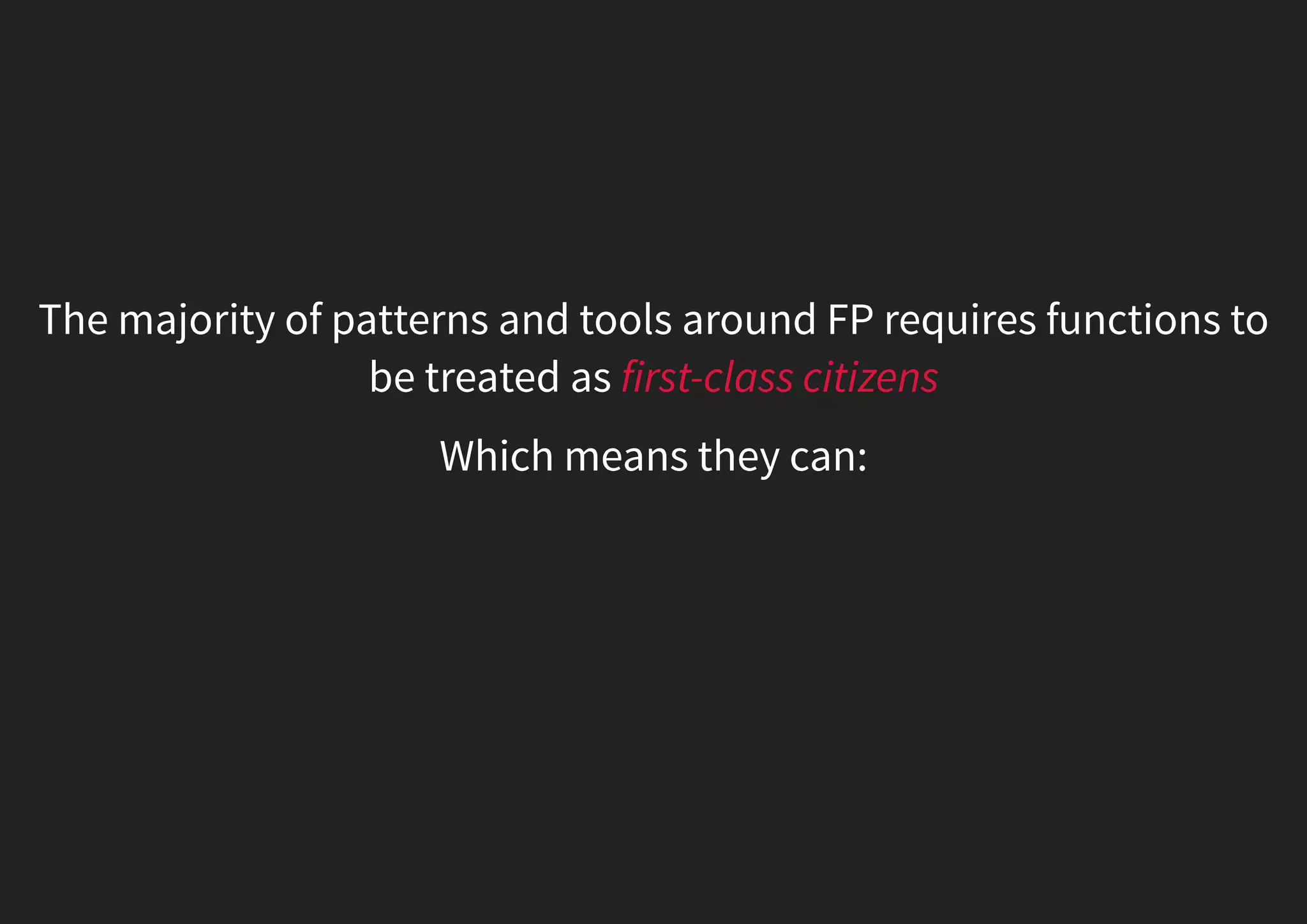
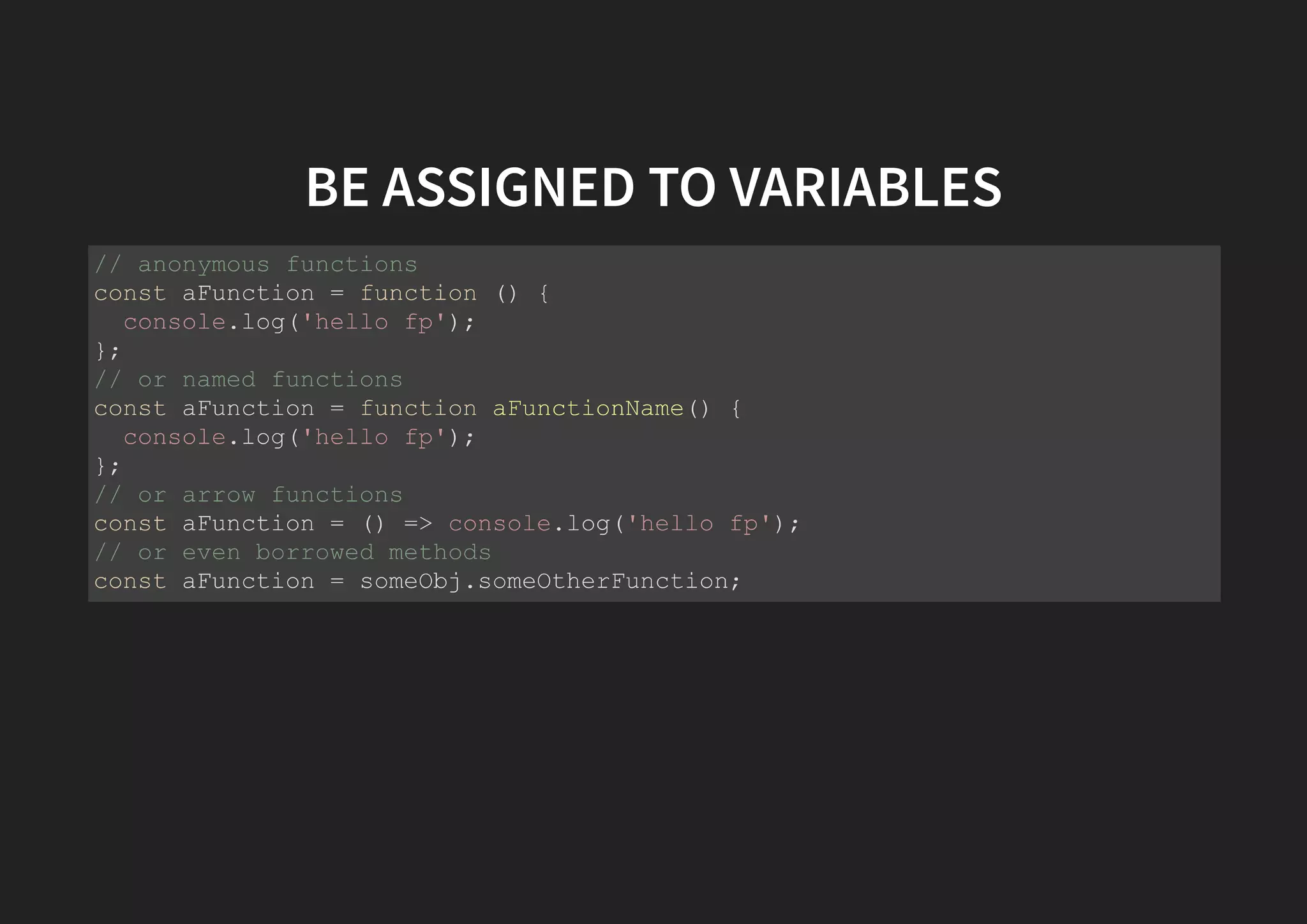
![BE ASSIGNED TO DATA STRUCTURES // With objects const obj = { methodAnon: function() { }, methodNamed: function aFunctionName() { }, methodArrow: () => { }, methodBorrowed: otherObj.someOtherFunction; }; // Or with arrays const arr = [ function() { }, function aFunctionName() { }, () => { }, otherObj.someOtherFunction ];](https://image.slidesharecdn.com/fp-intro-presentation-170524023111/75/Introduction-to-Functional-Programming-w-JS-14-2048.jpg)
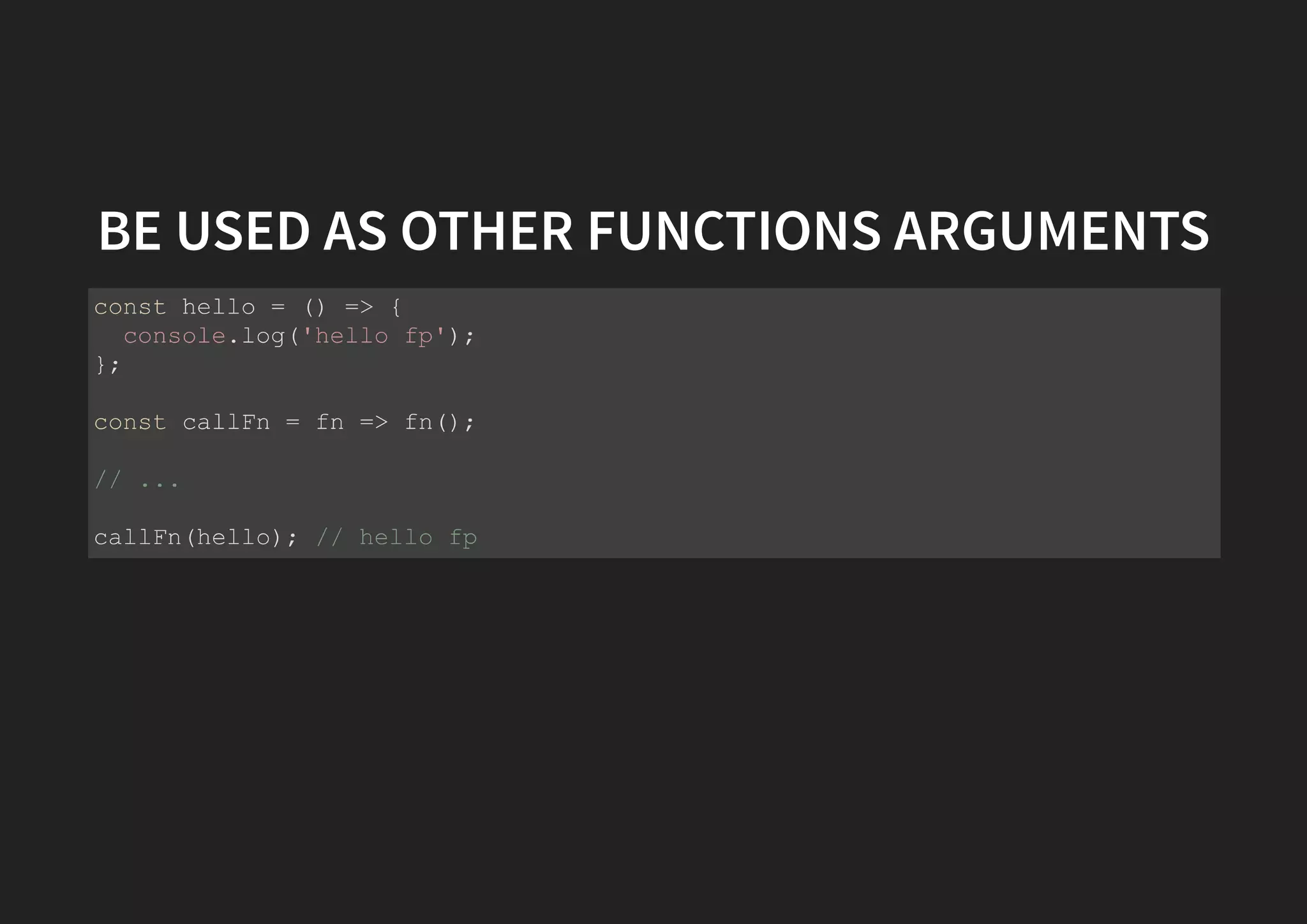
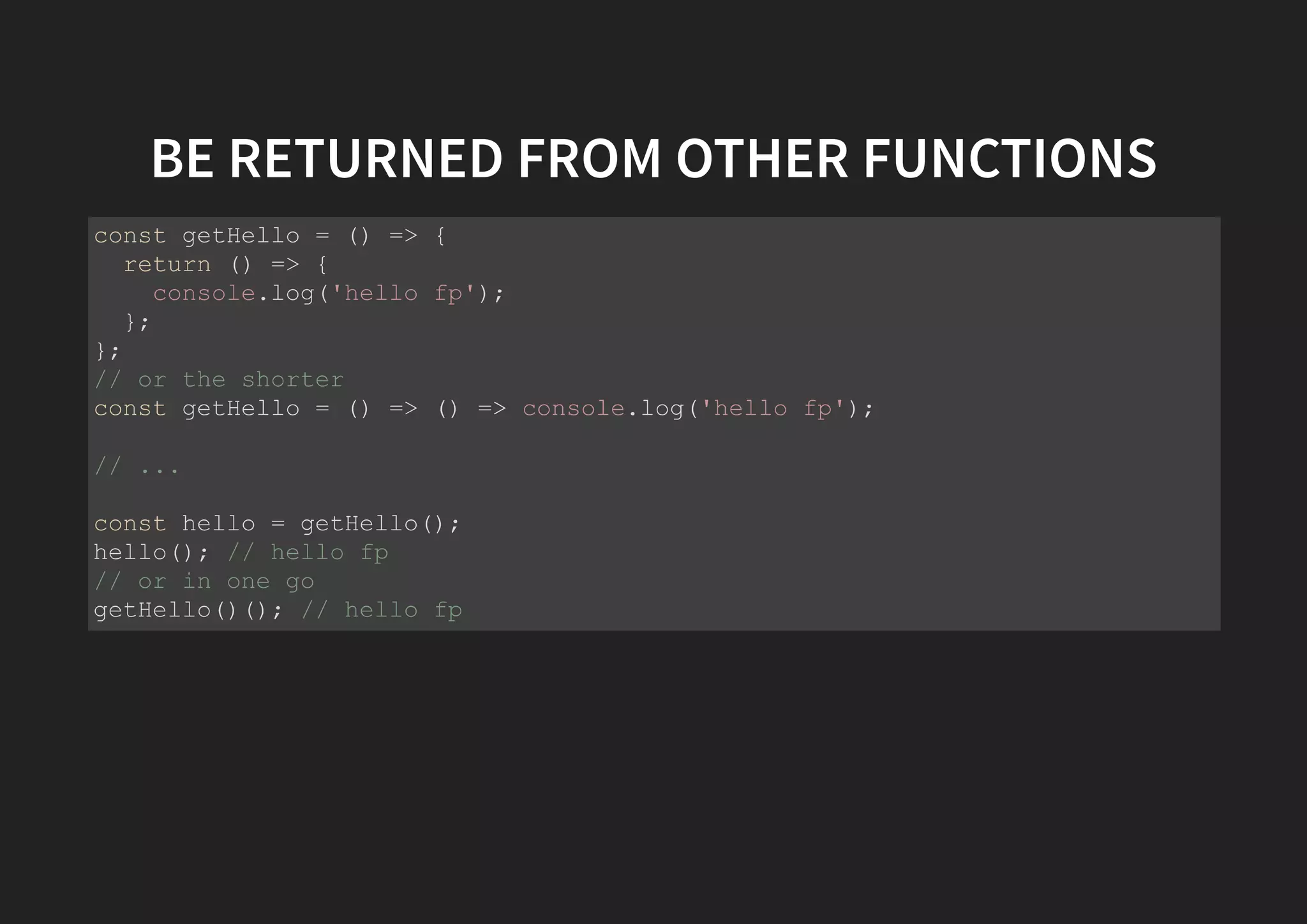
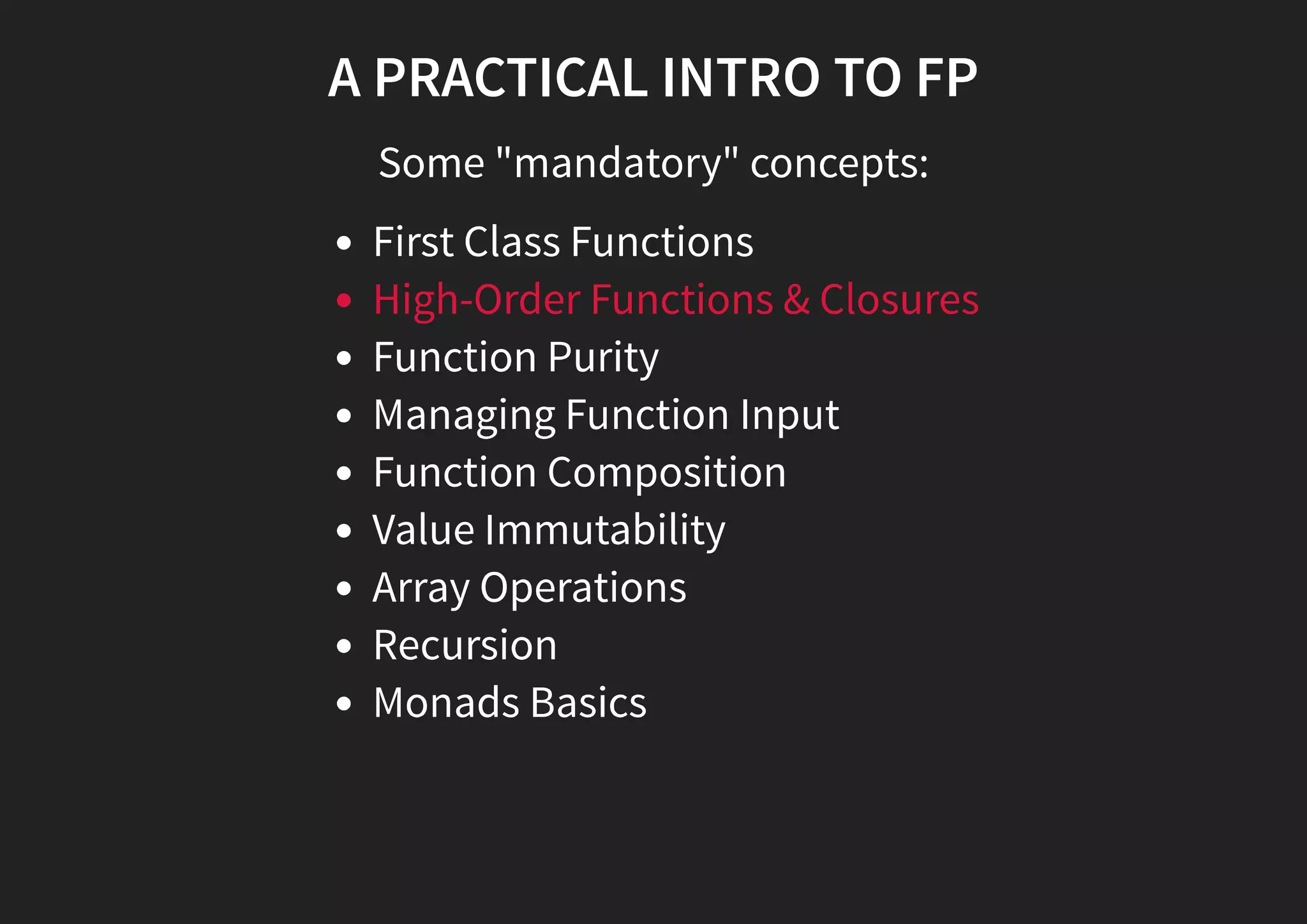
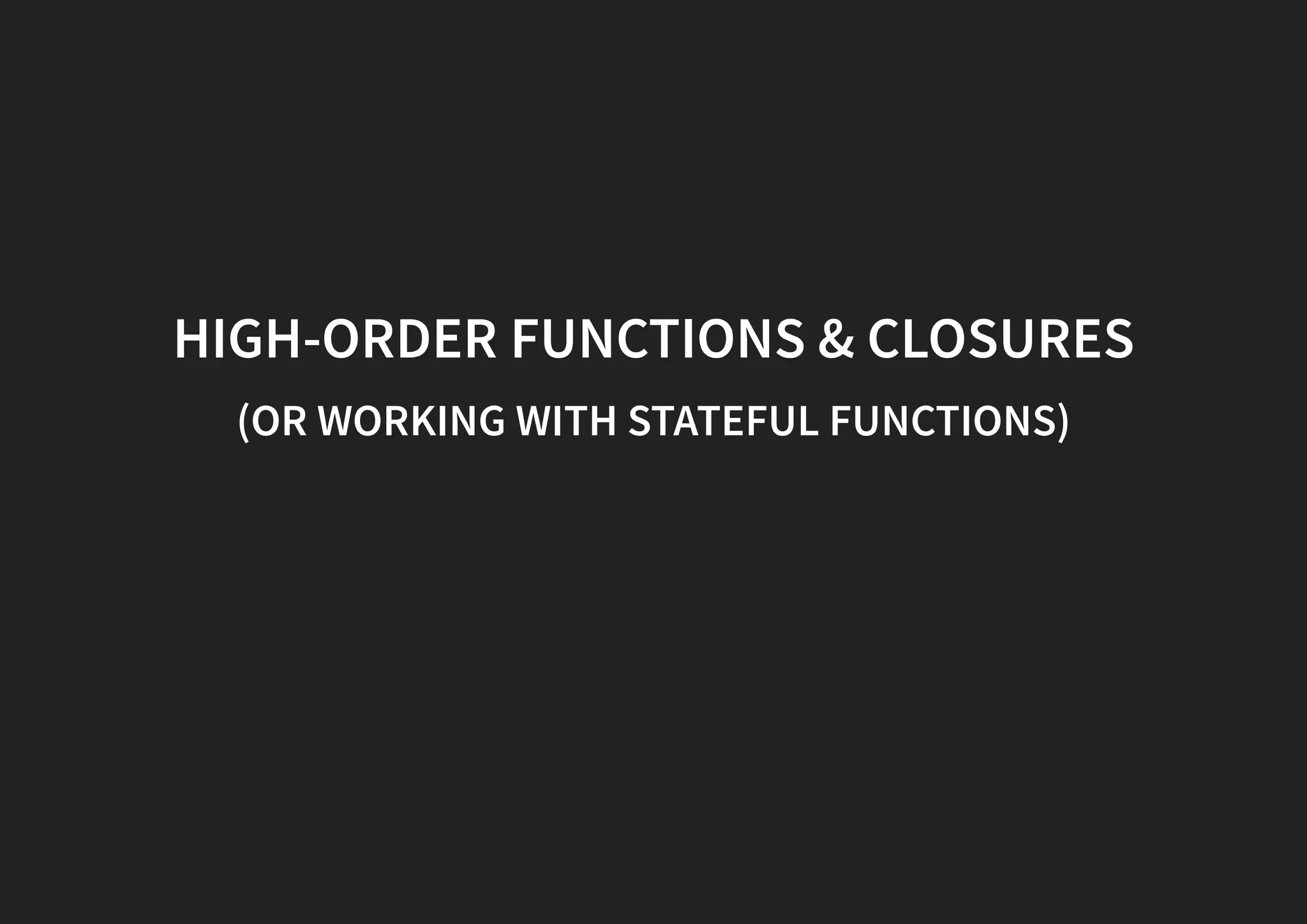
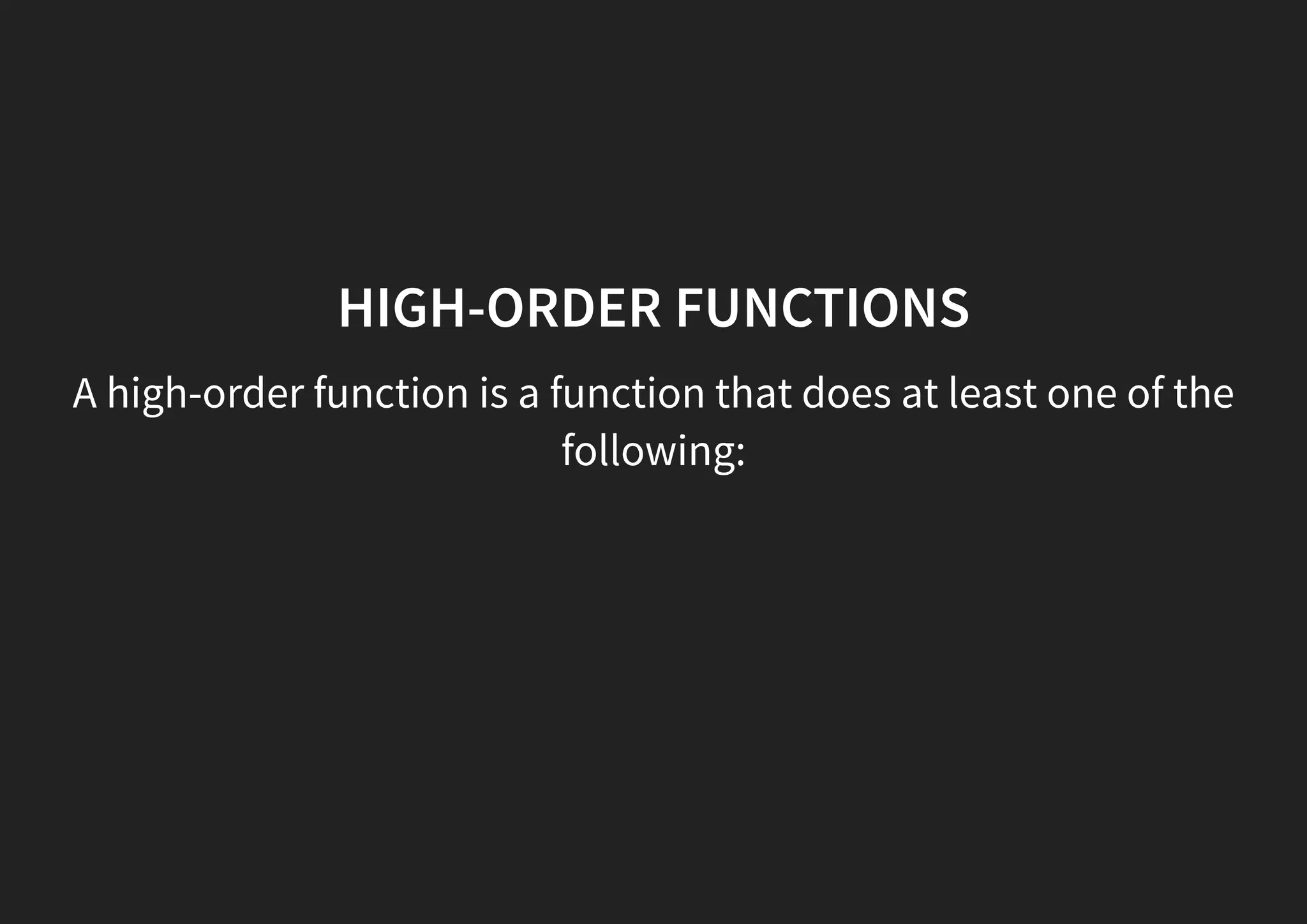
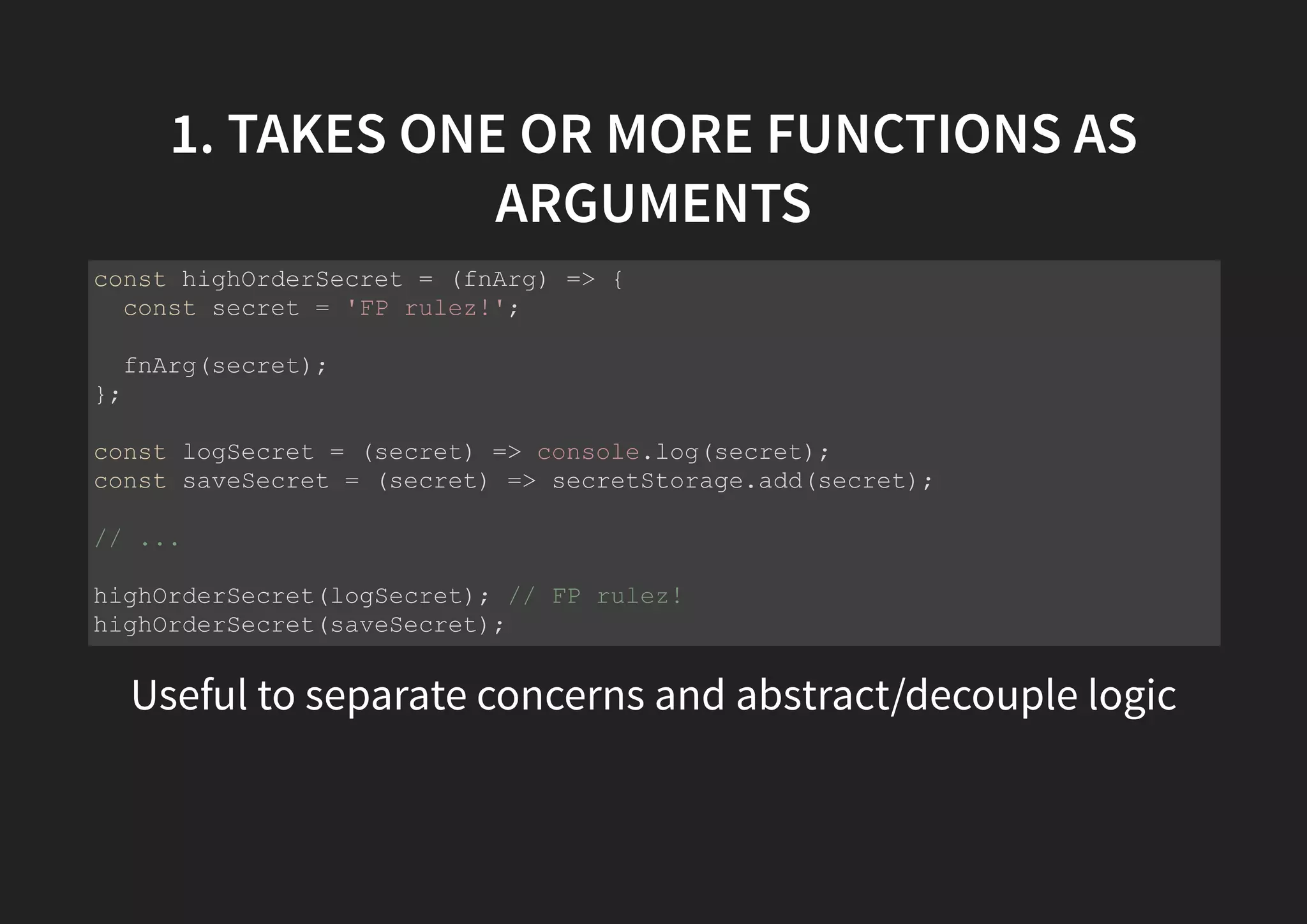
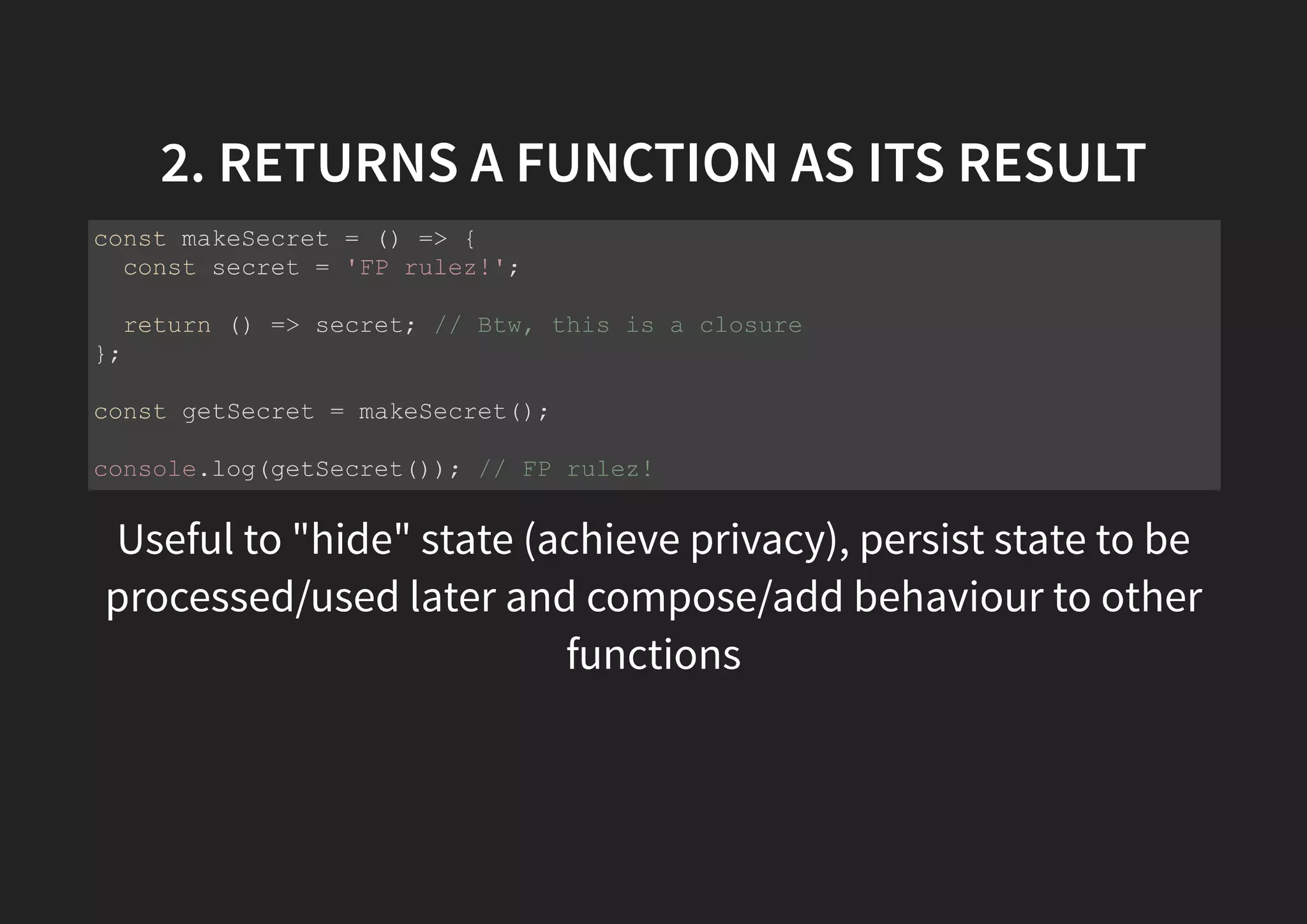
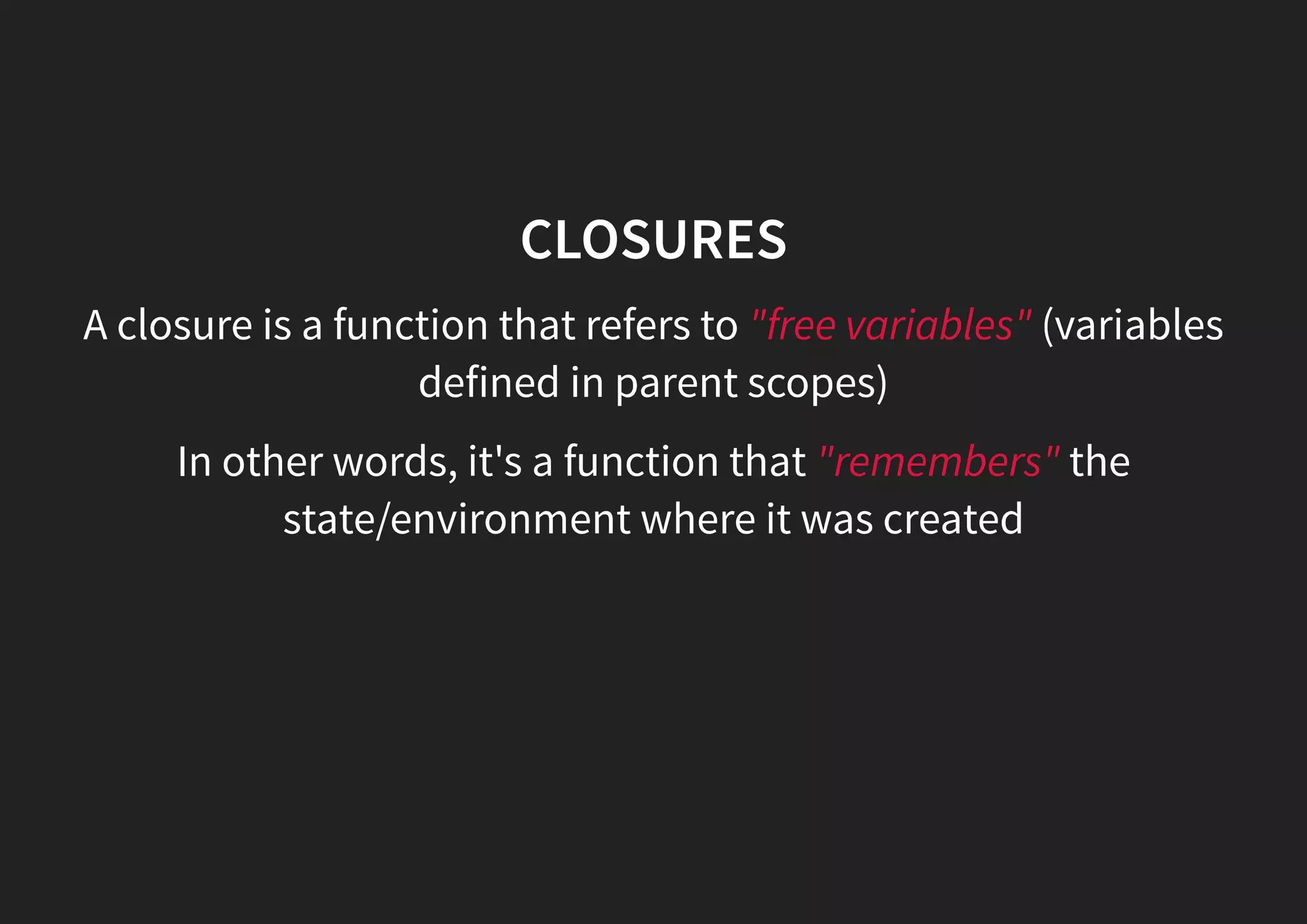
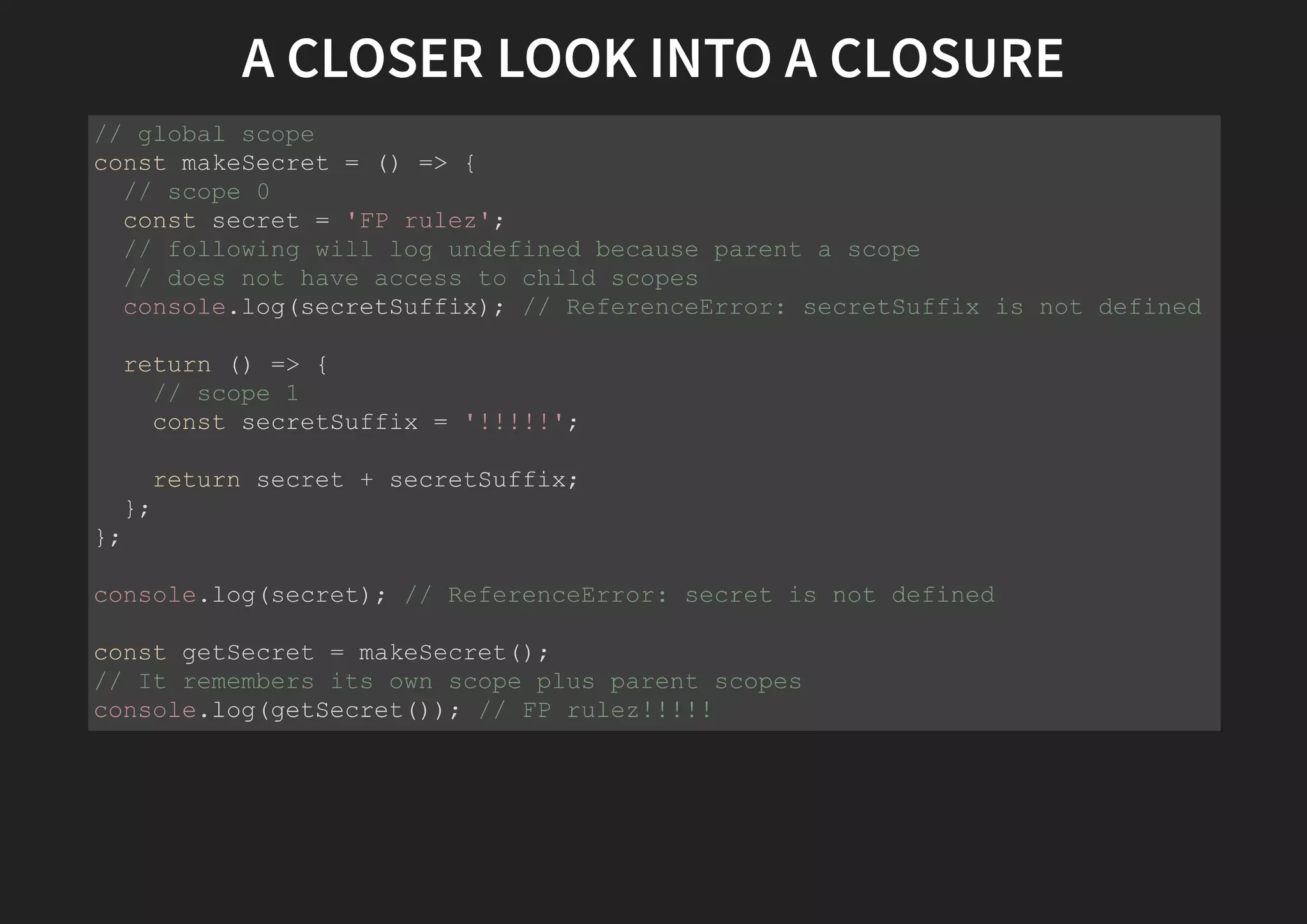
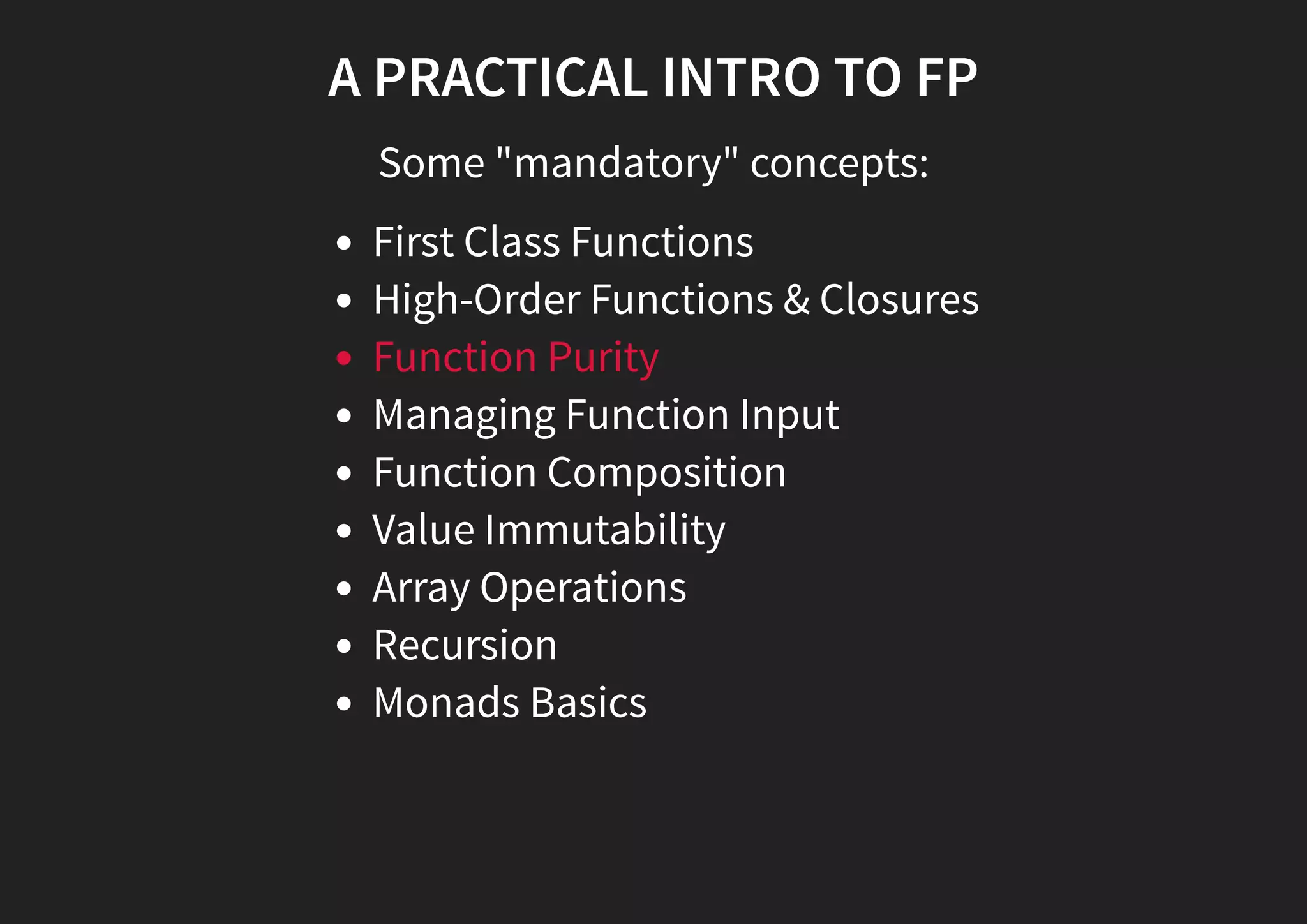

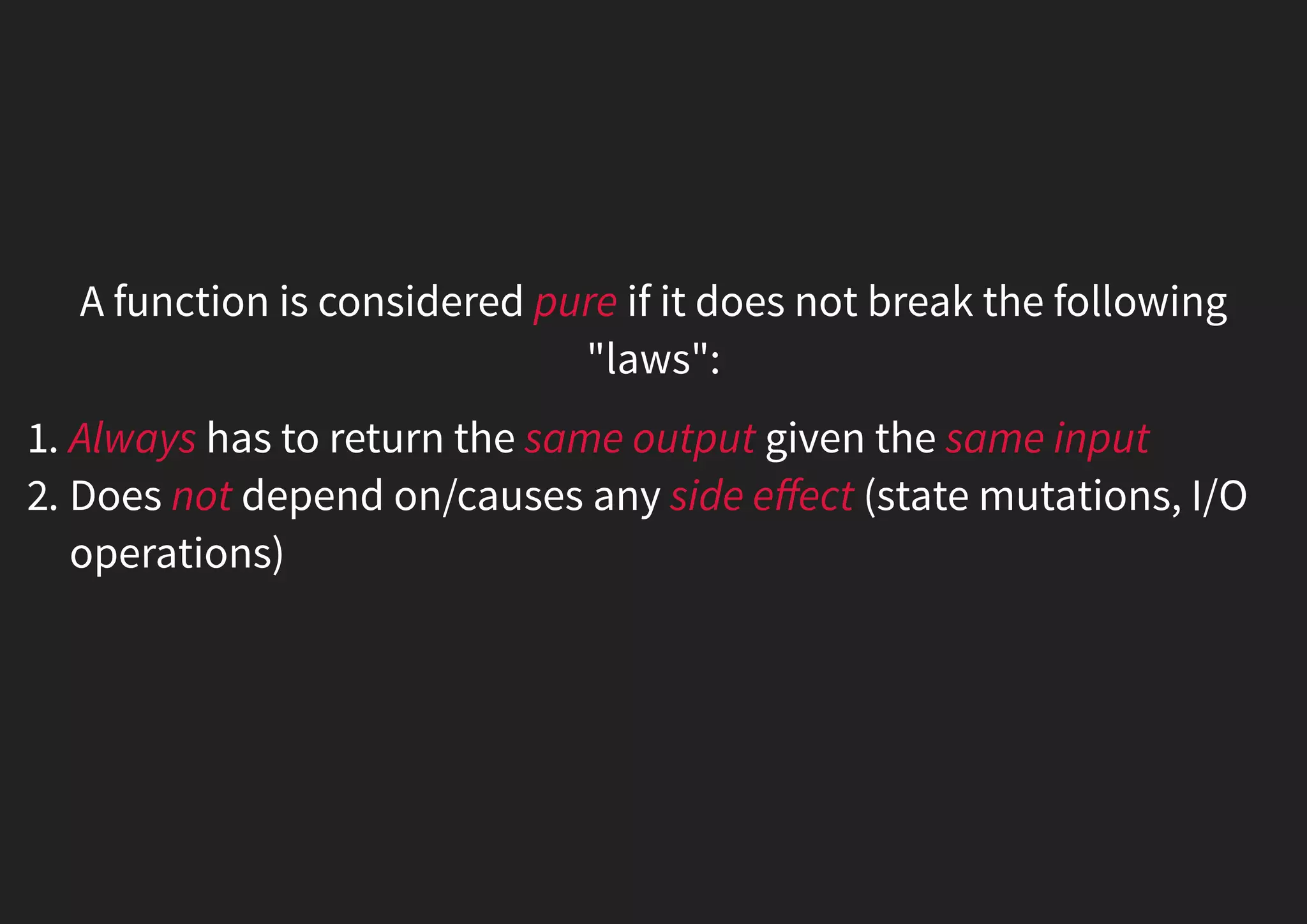
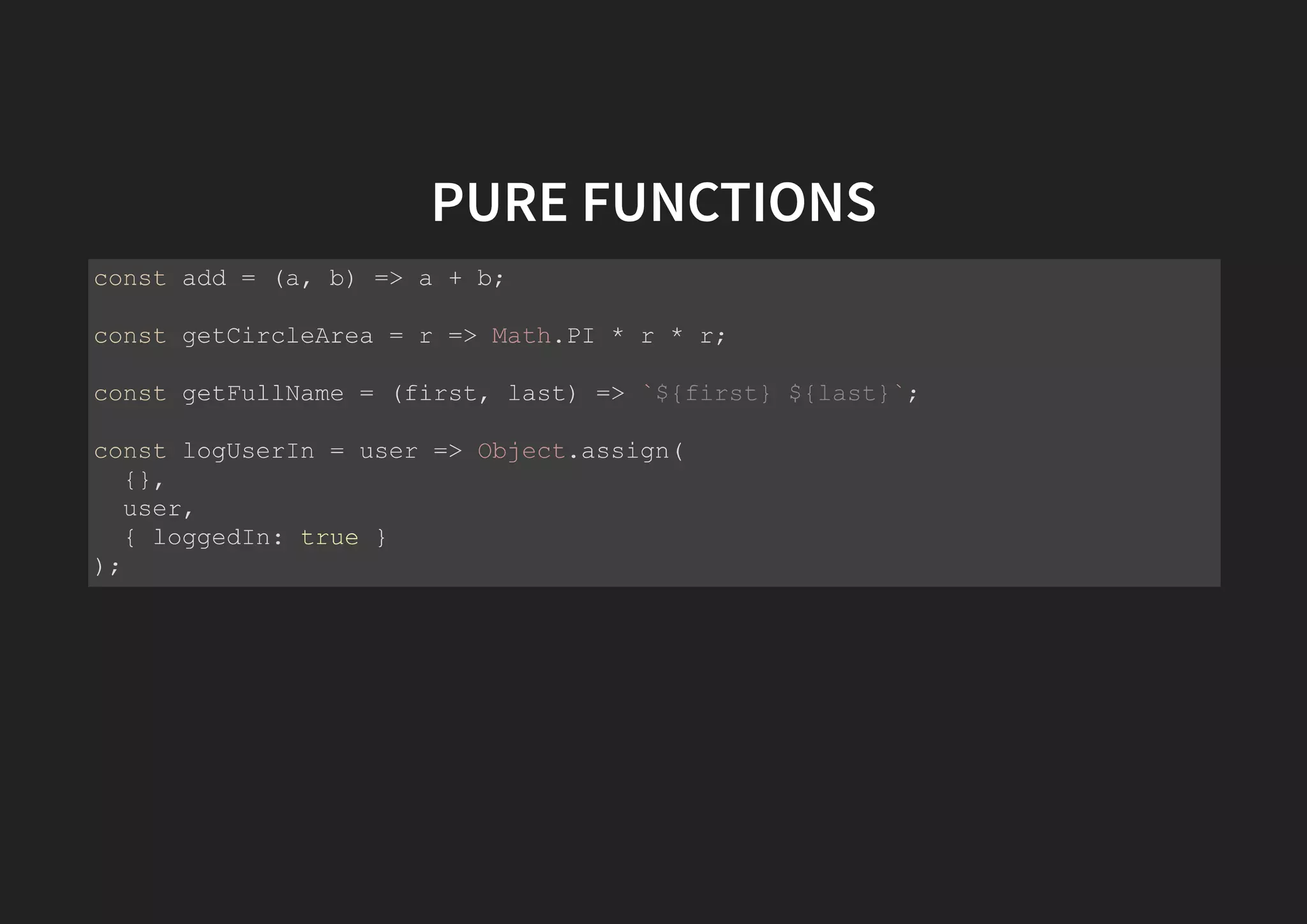
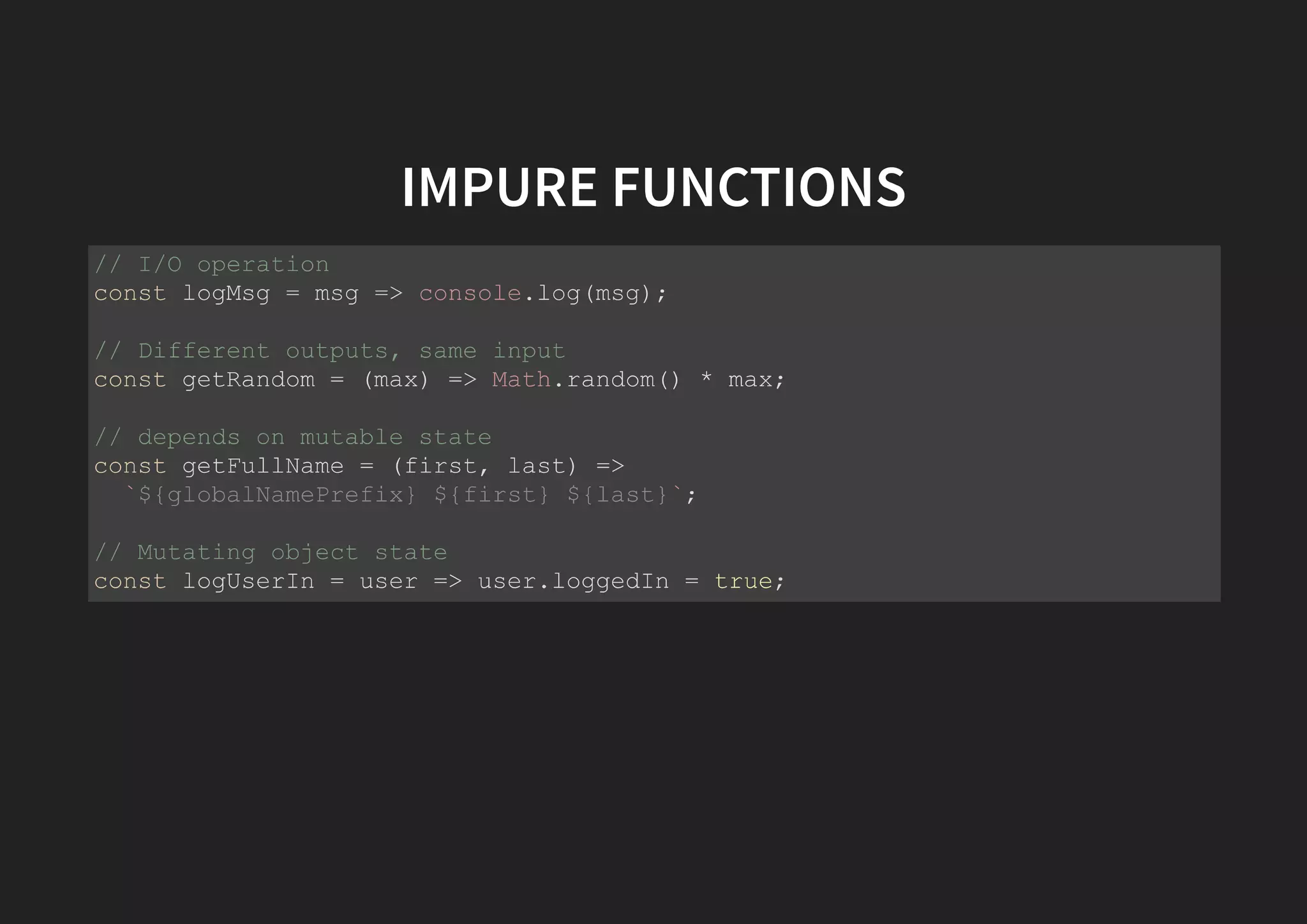
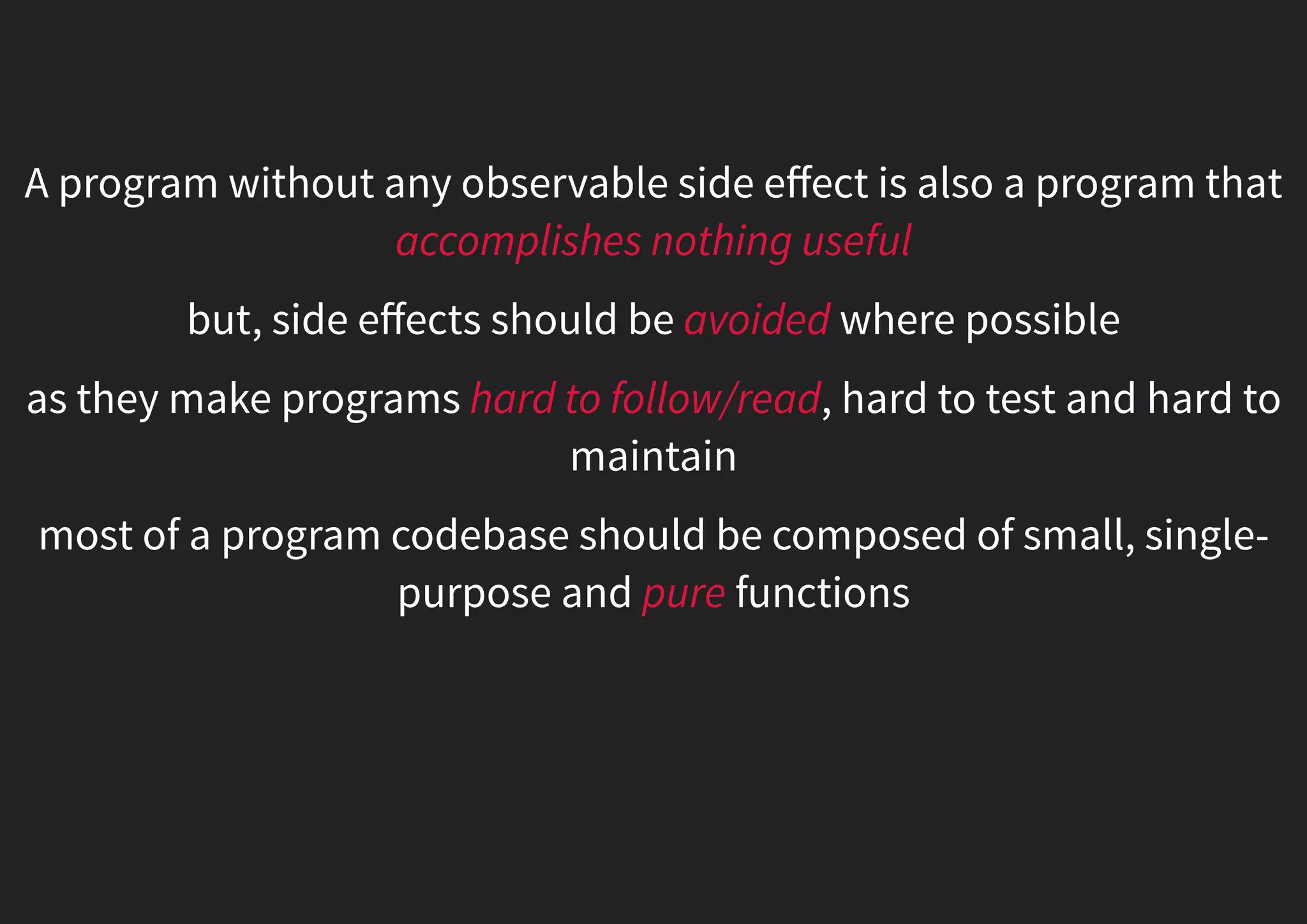
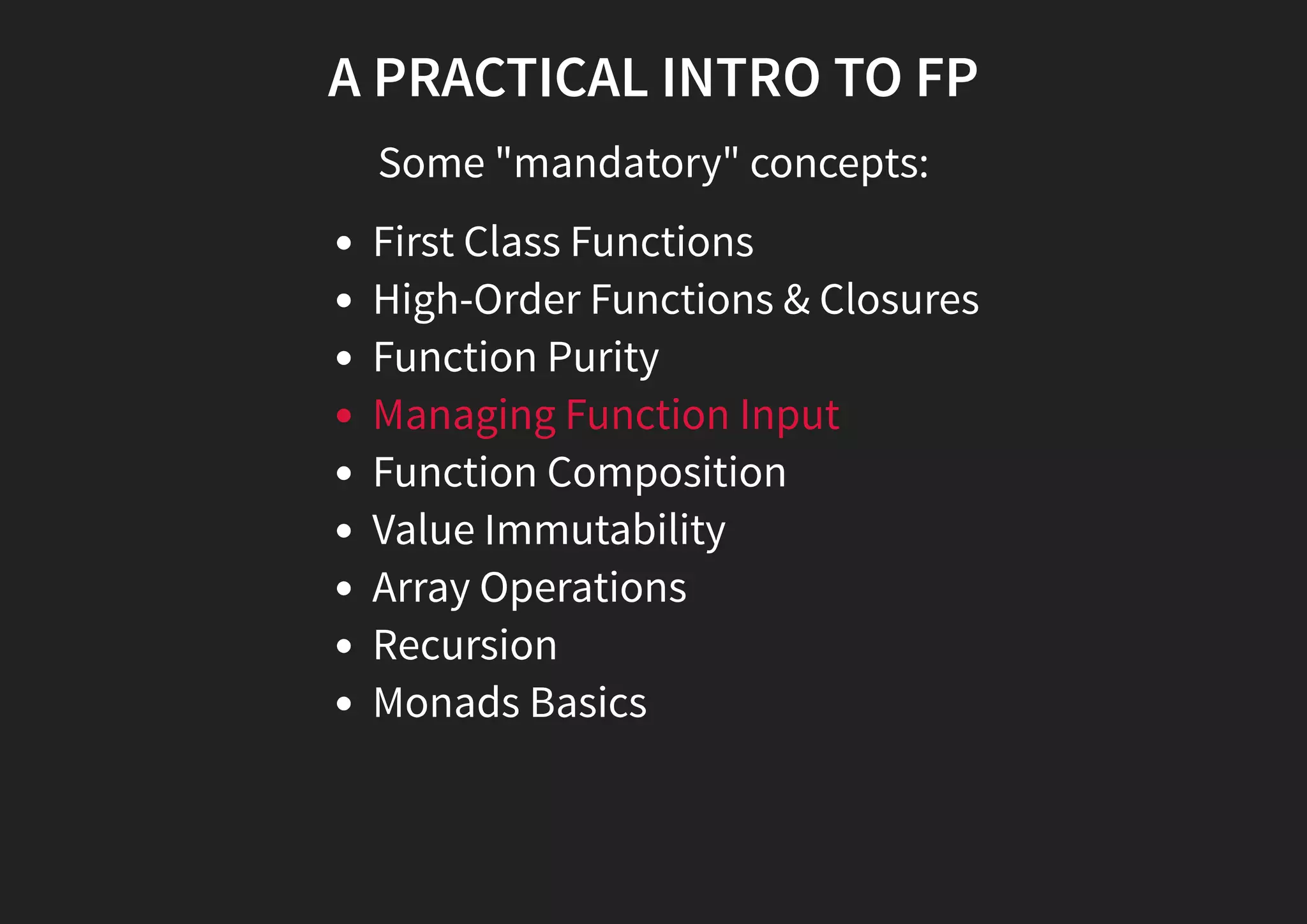

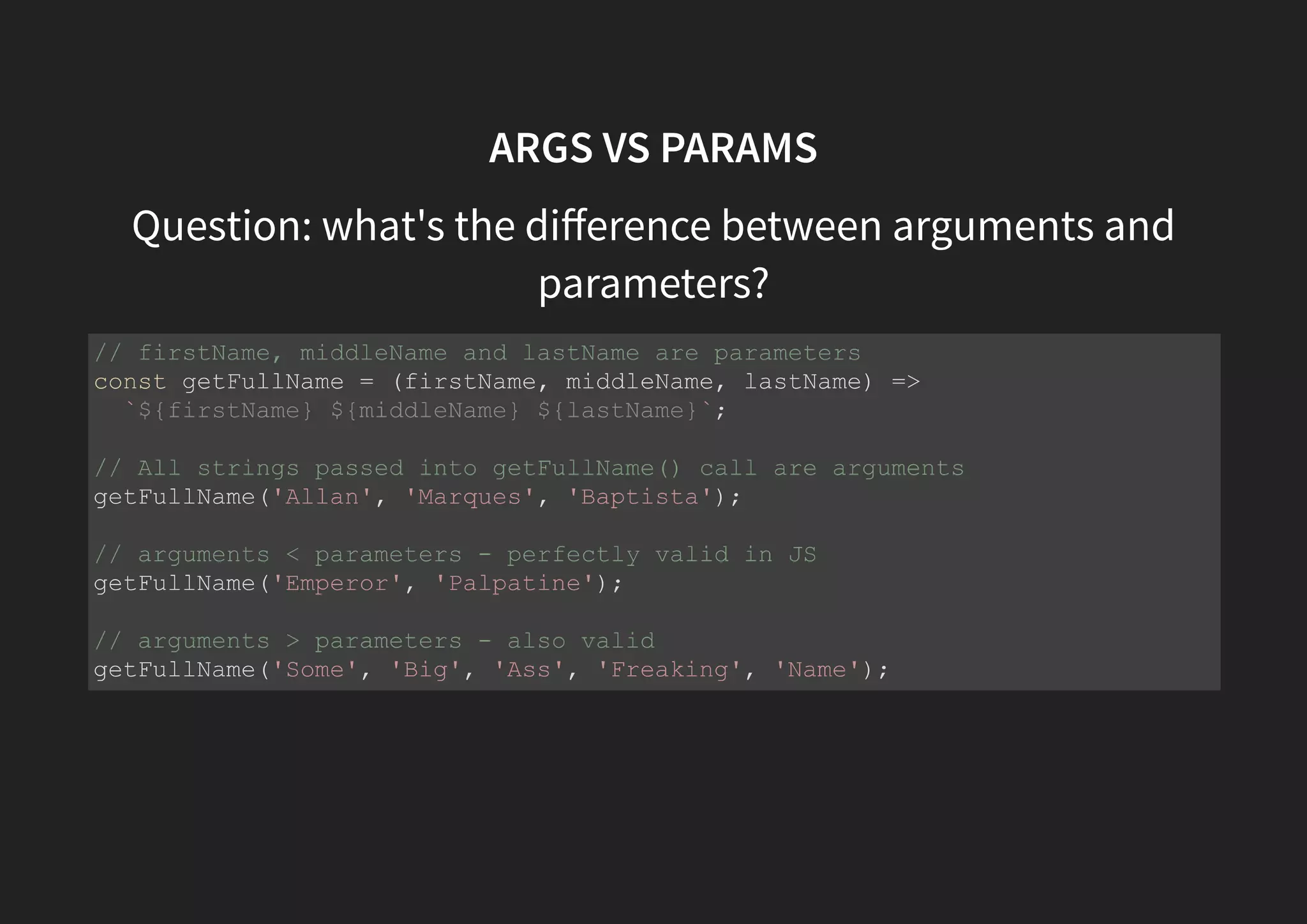
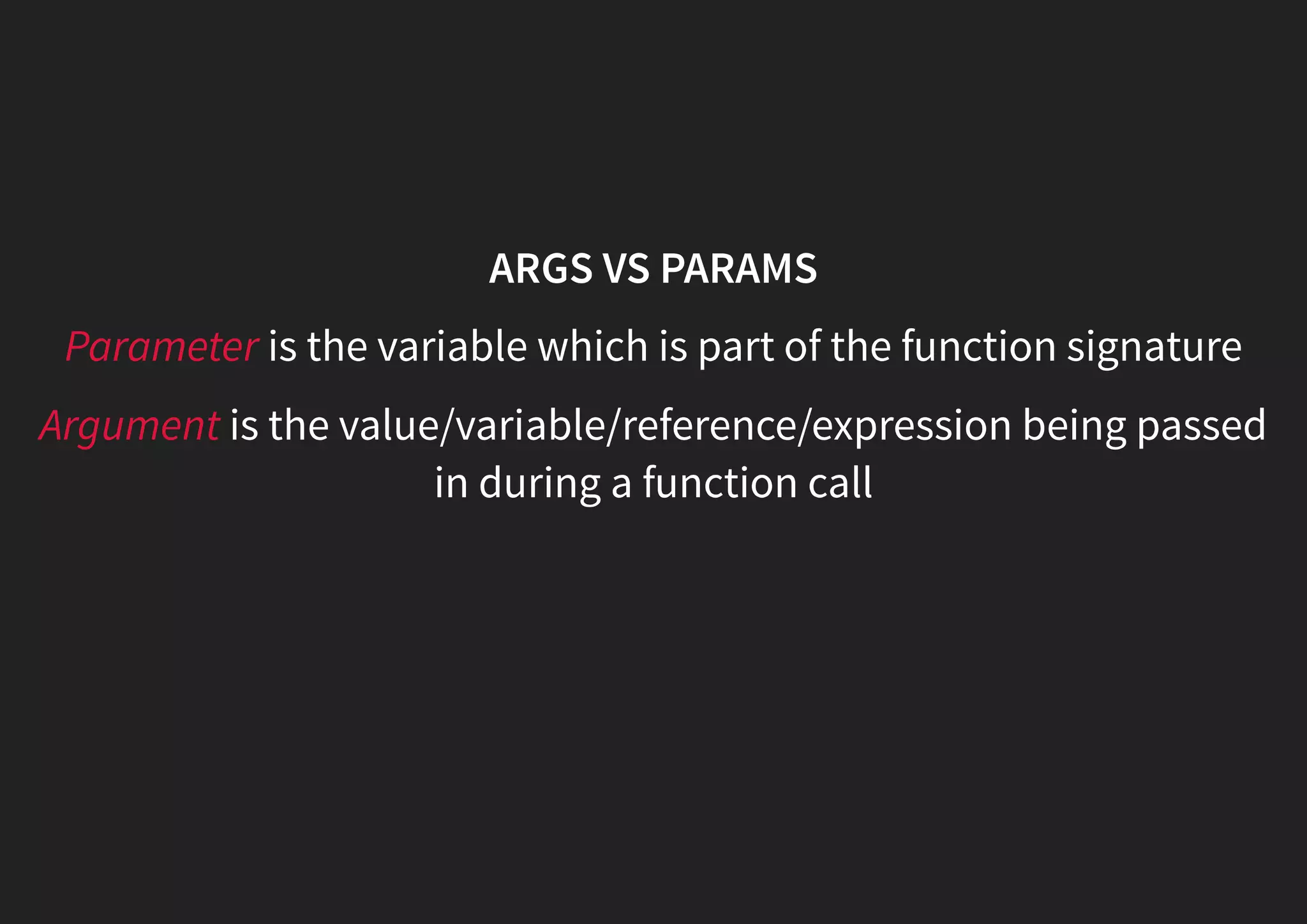
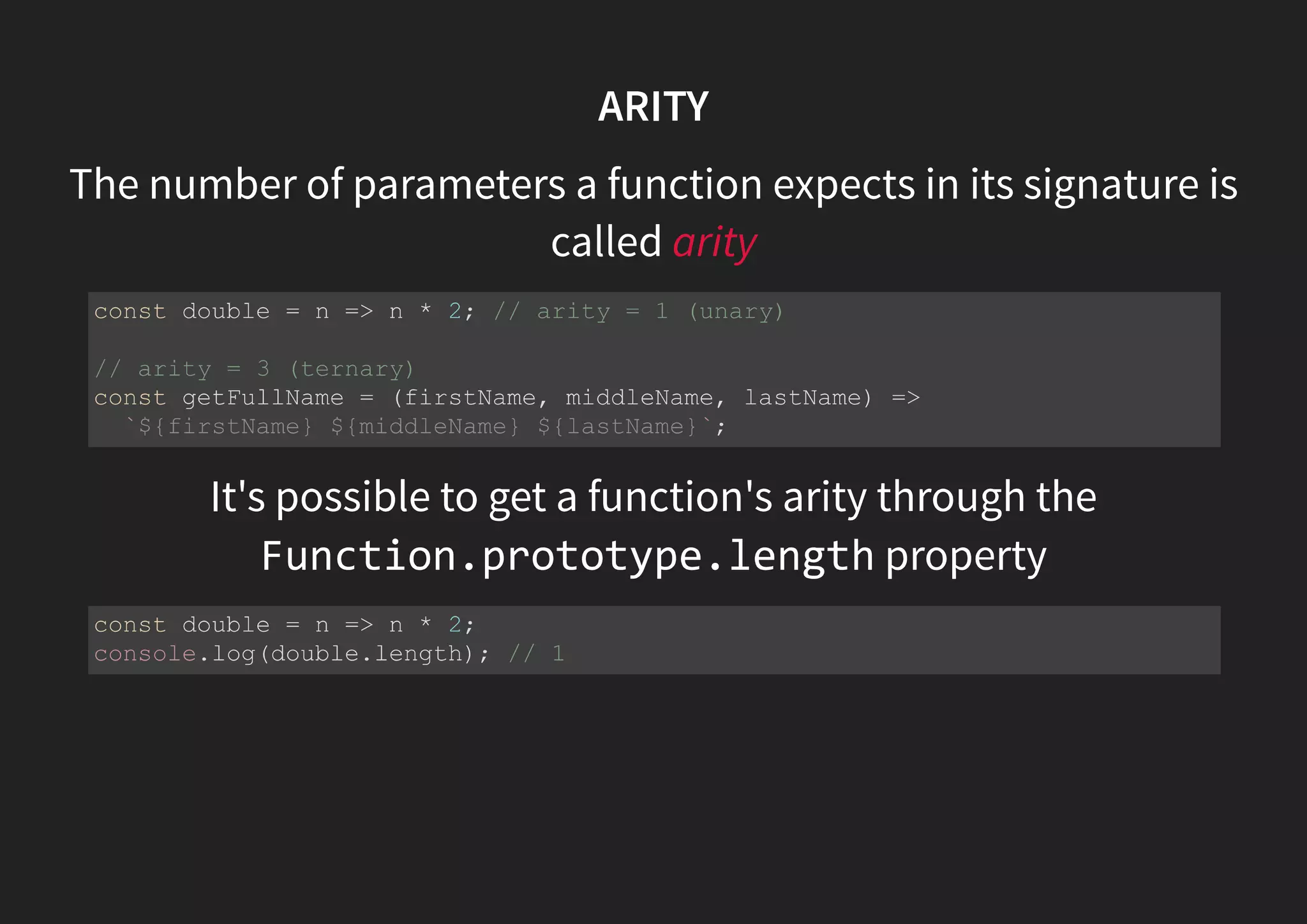

![FORCING UNARY FUNCTIONS Sometimes we need to ensure a function that expects more than one parameter to receive only one argument That happens because parseInt's signature is: parseInt(str [, radix]) And Array.prototype.map calls any function passed in with the arguments: fn(item, index, arr) const strArr = ['1', '2', '3', '4', '5']; const mumArr = strArr.map(parseInt); console.log(numArr); // [1, NaN, NaN, NaN, NaN]](https://image.slidesharecdn.com/fp-intro-presentation-170524023111/75/Introduction-to-Functional-Programming-w-JS-36-2048.jpg)
![FORCING UNARY FUNCTIONS We can fix that with a utility HoF usually called unary That can be implemented in JS like so: And used like this: const unary = fn => param => fn(param); const strArr = ['1', '2', '3', '4', '5']; const mumArr = strArr.map(unary(parseInt)); console.log(numArr); // [1, 2, 3, 4, 5]](https://image.slidesharecdn.com/fp-intro-presentation-170524023111/75/Introduction-to-Functional-Programming-w-JS-37-2048.jpg)
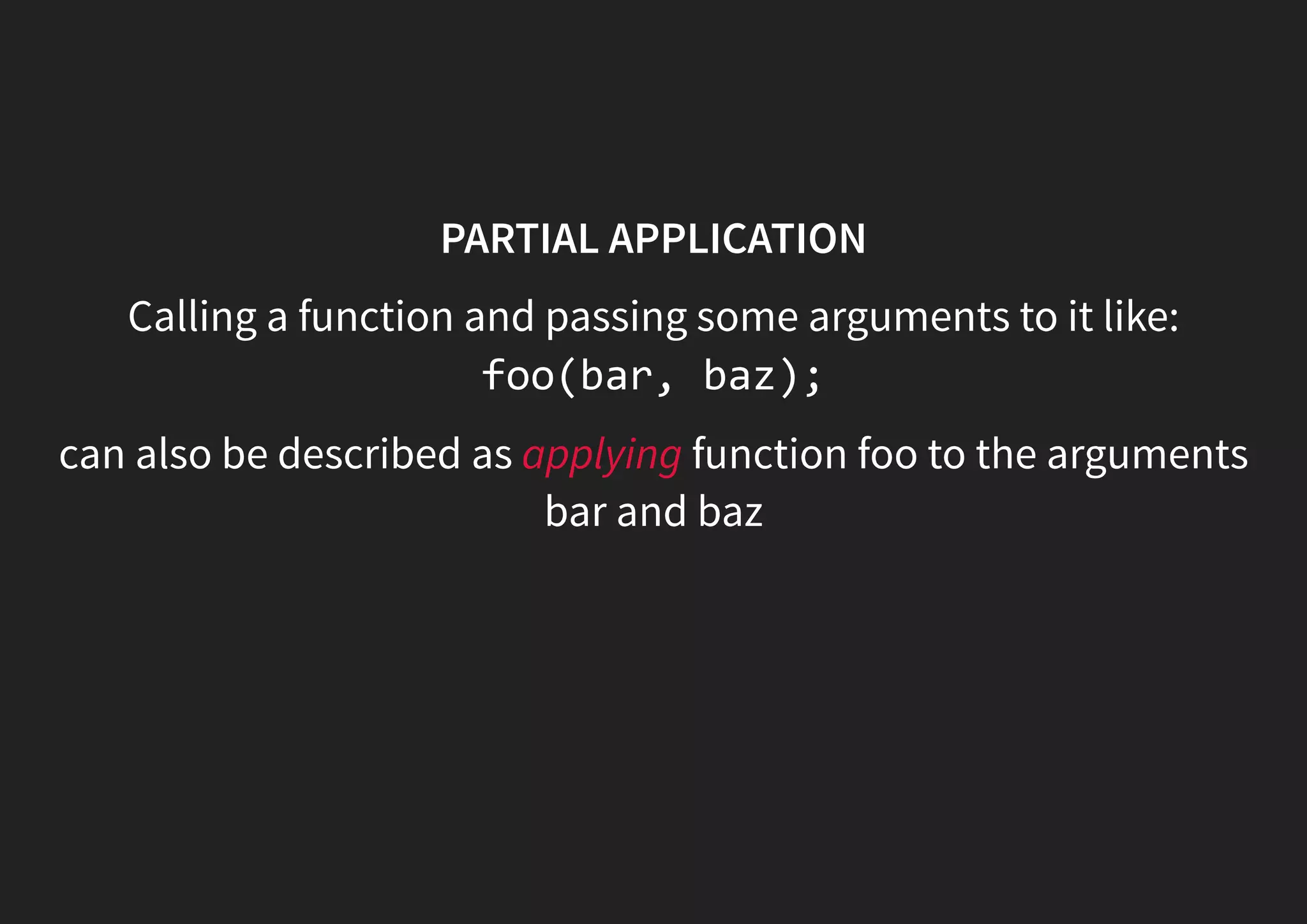
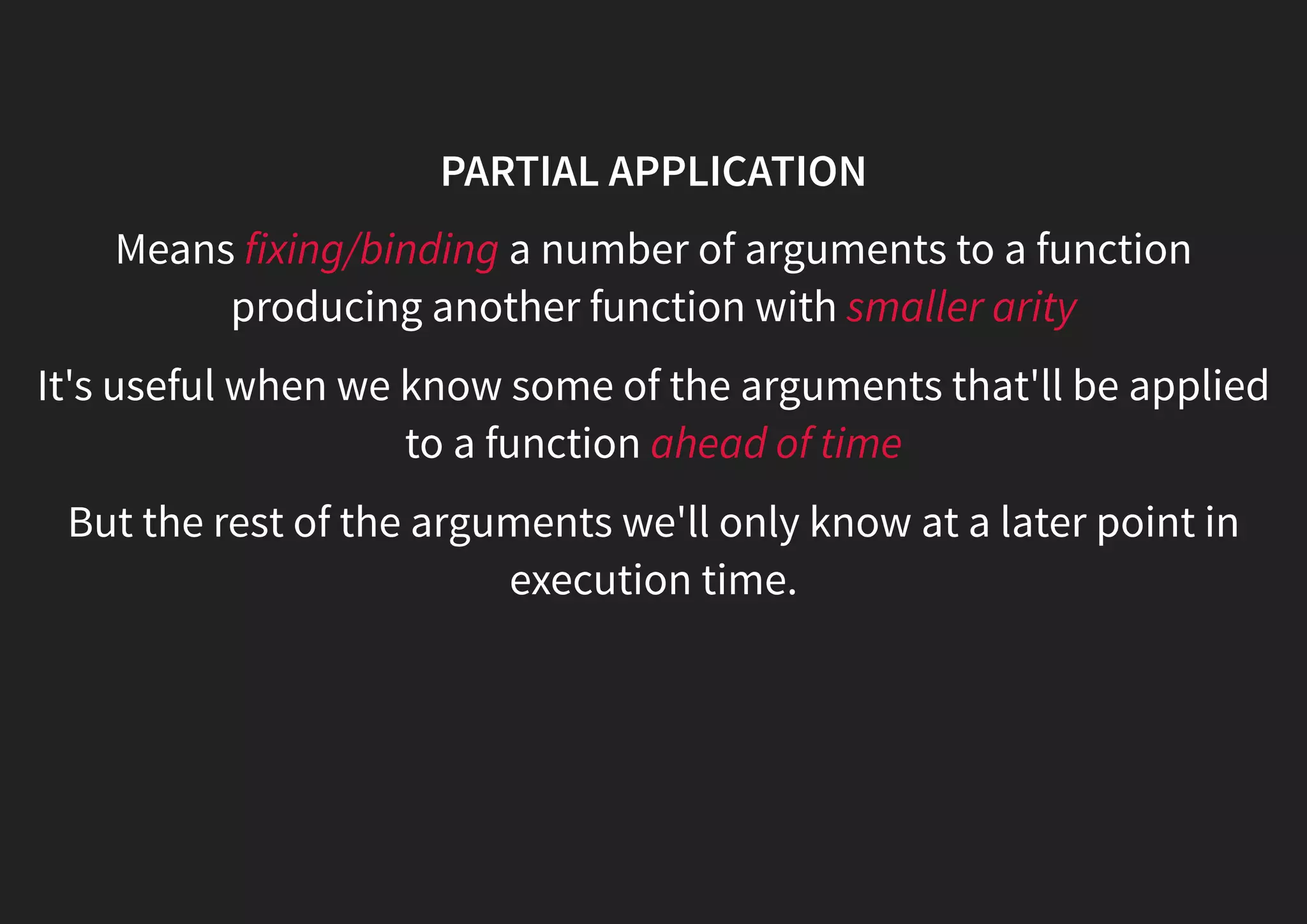
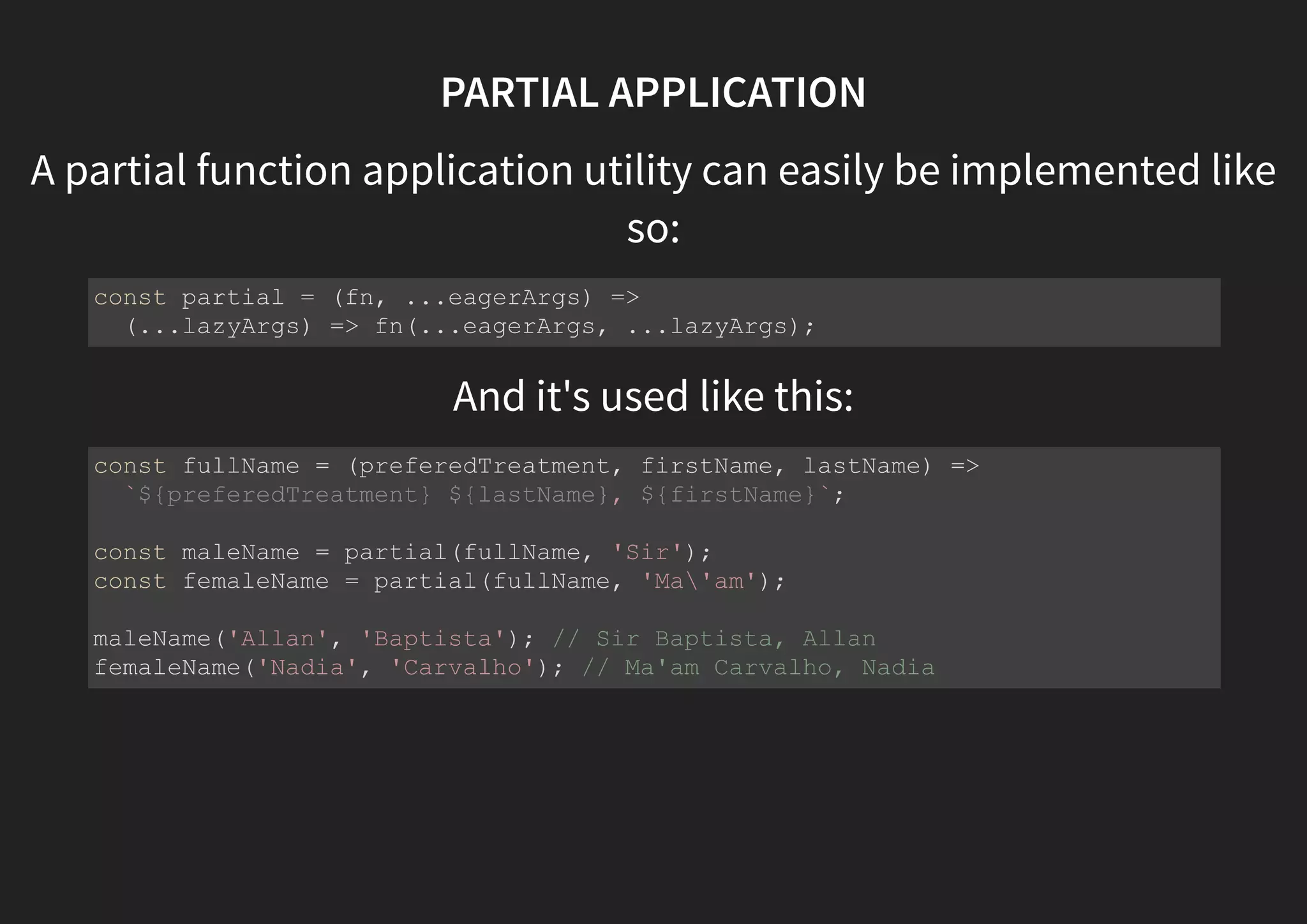
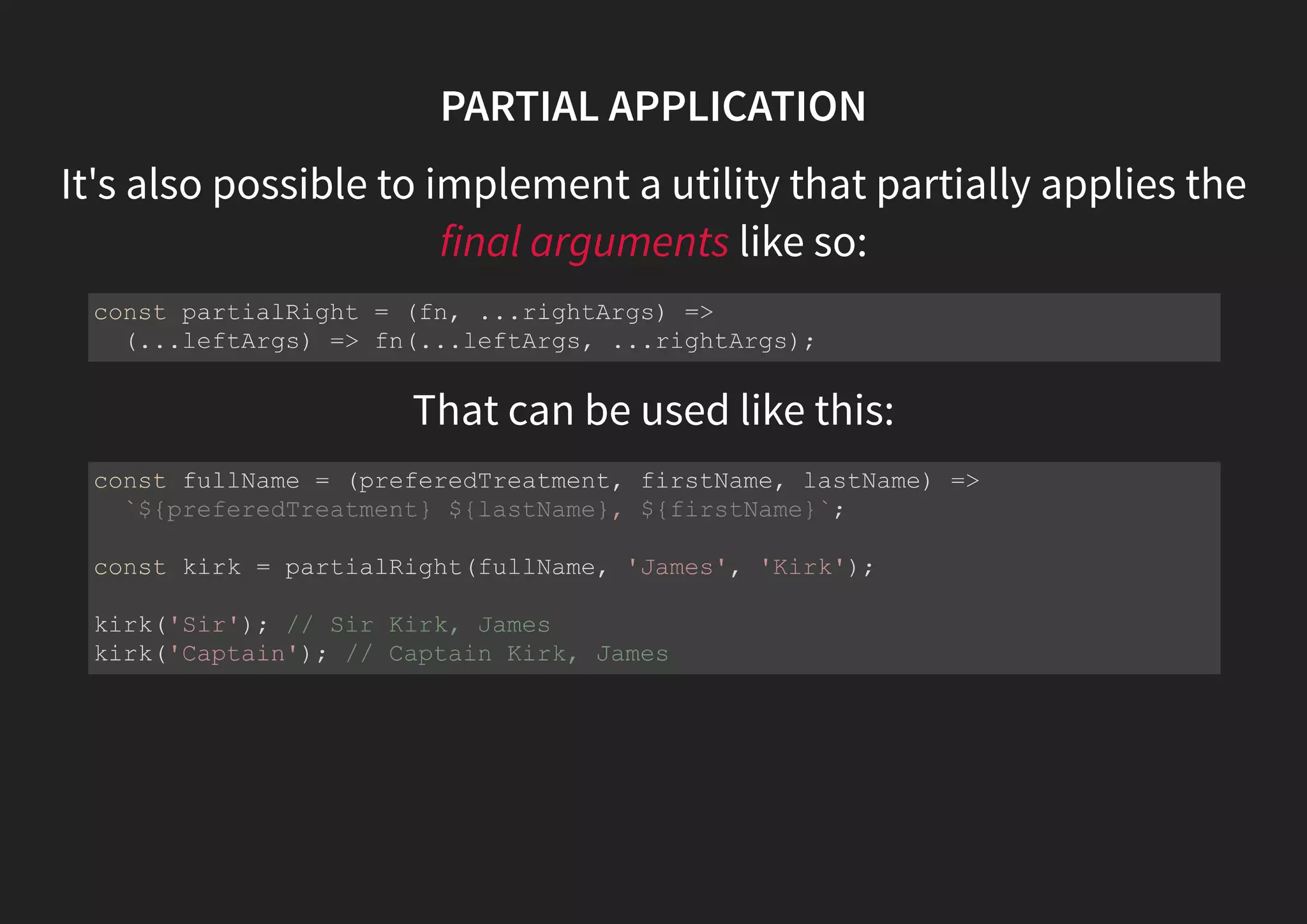
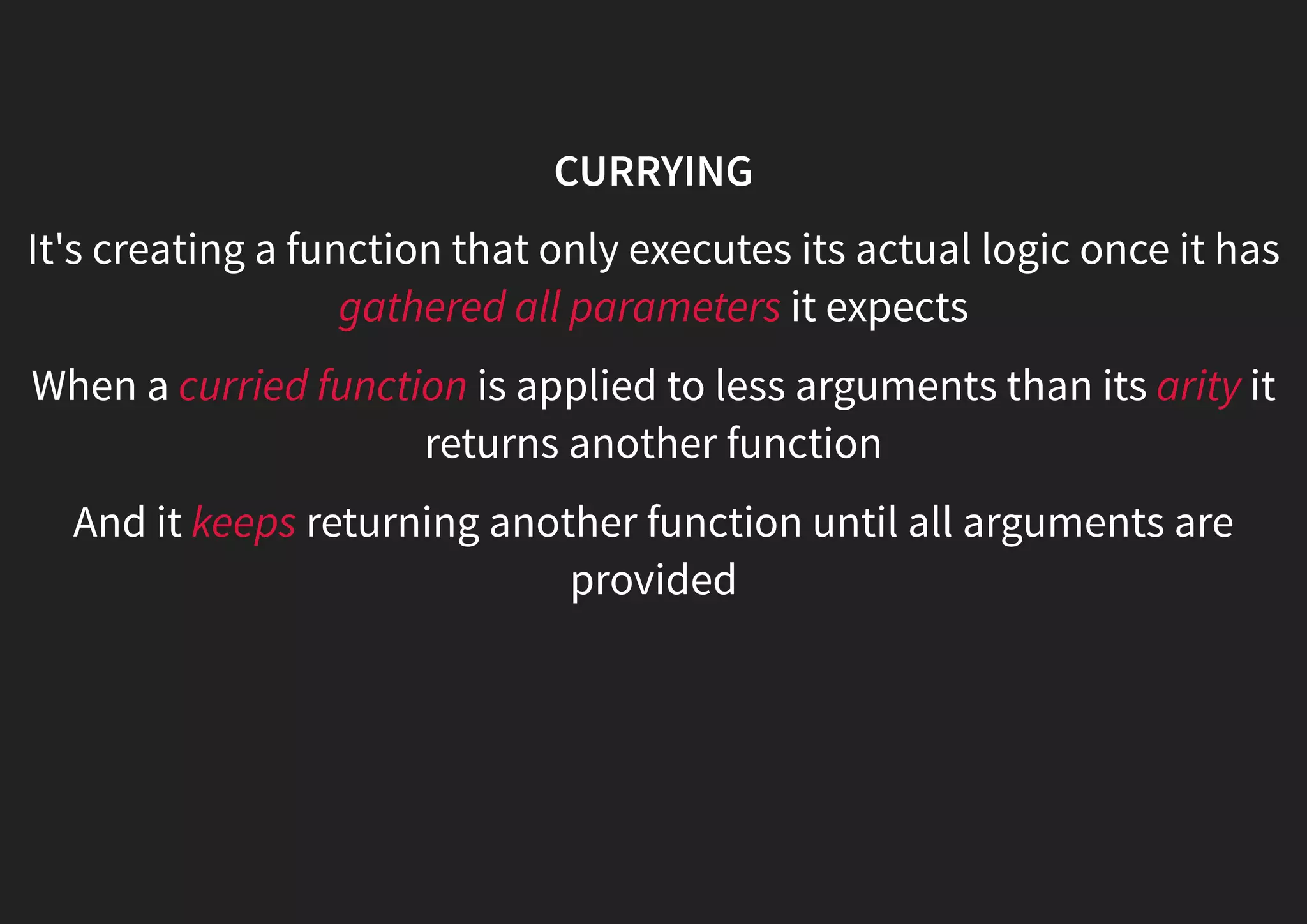
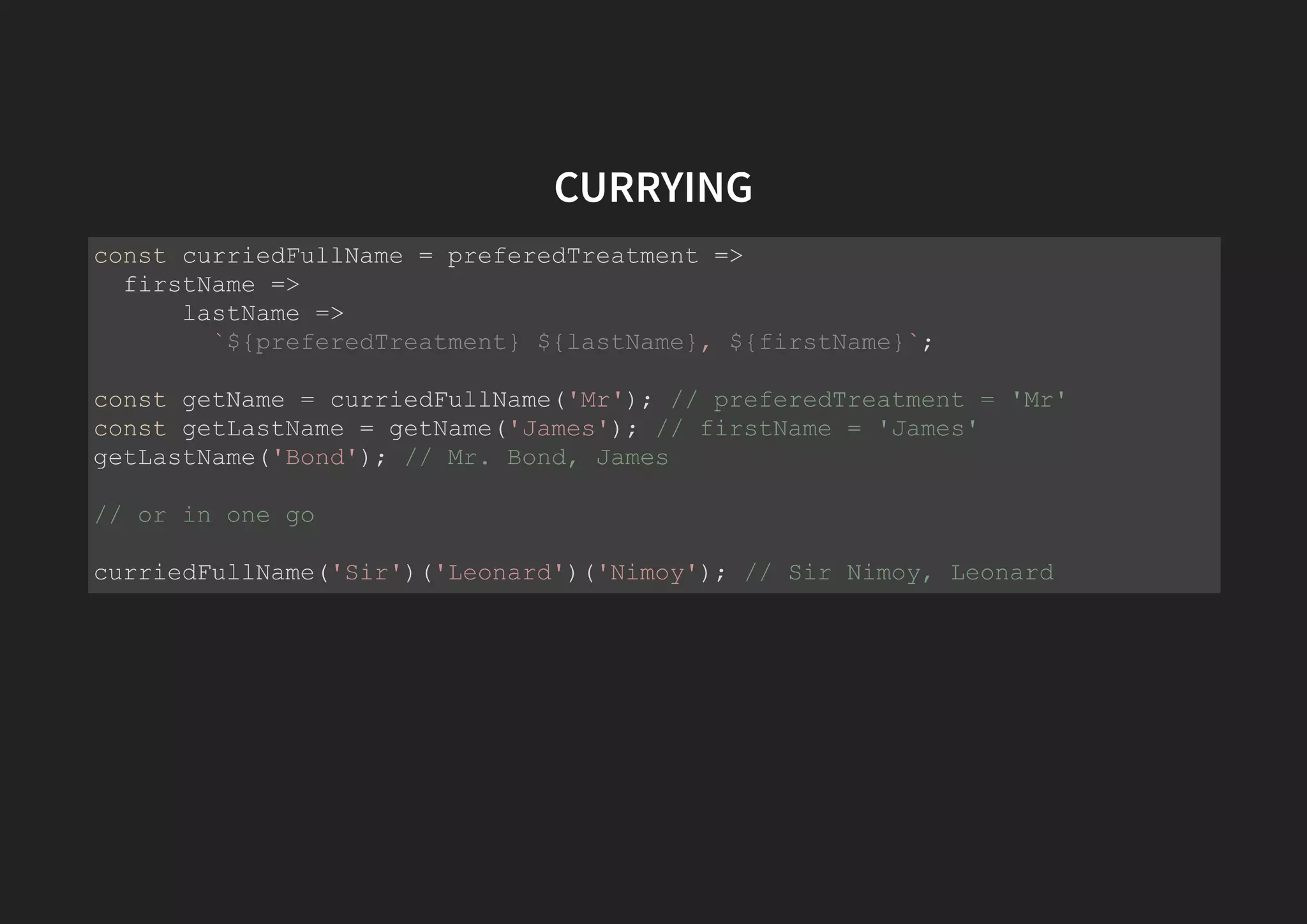
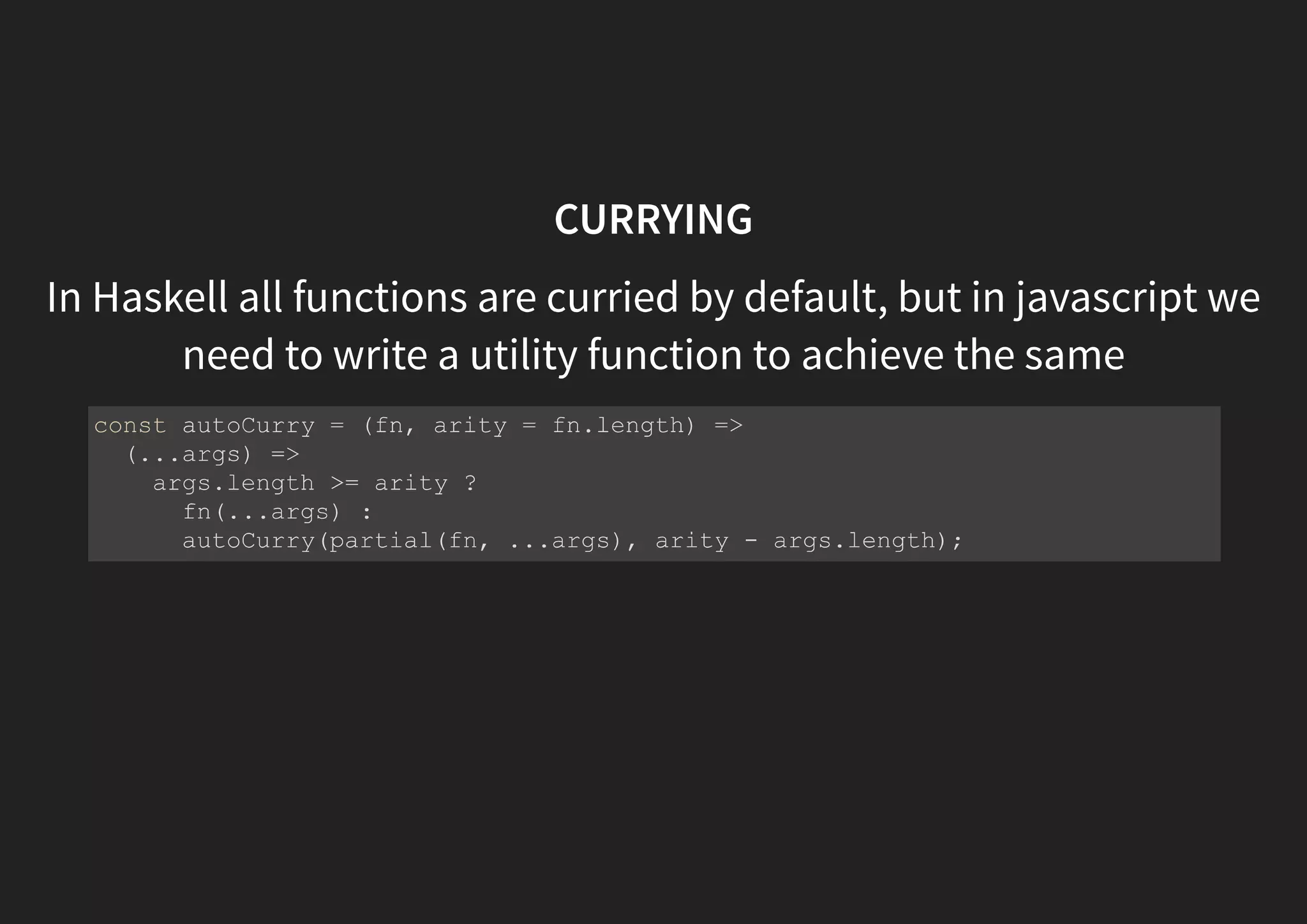
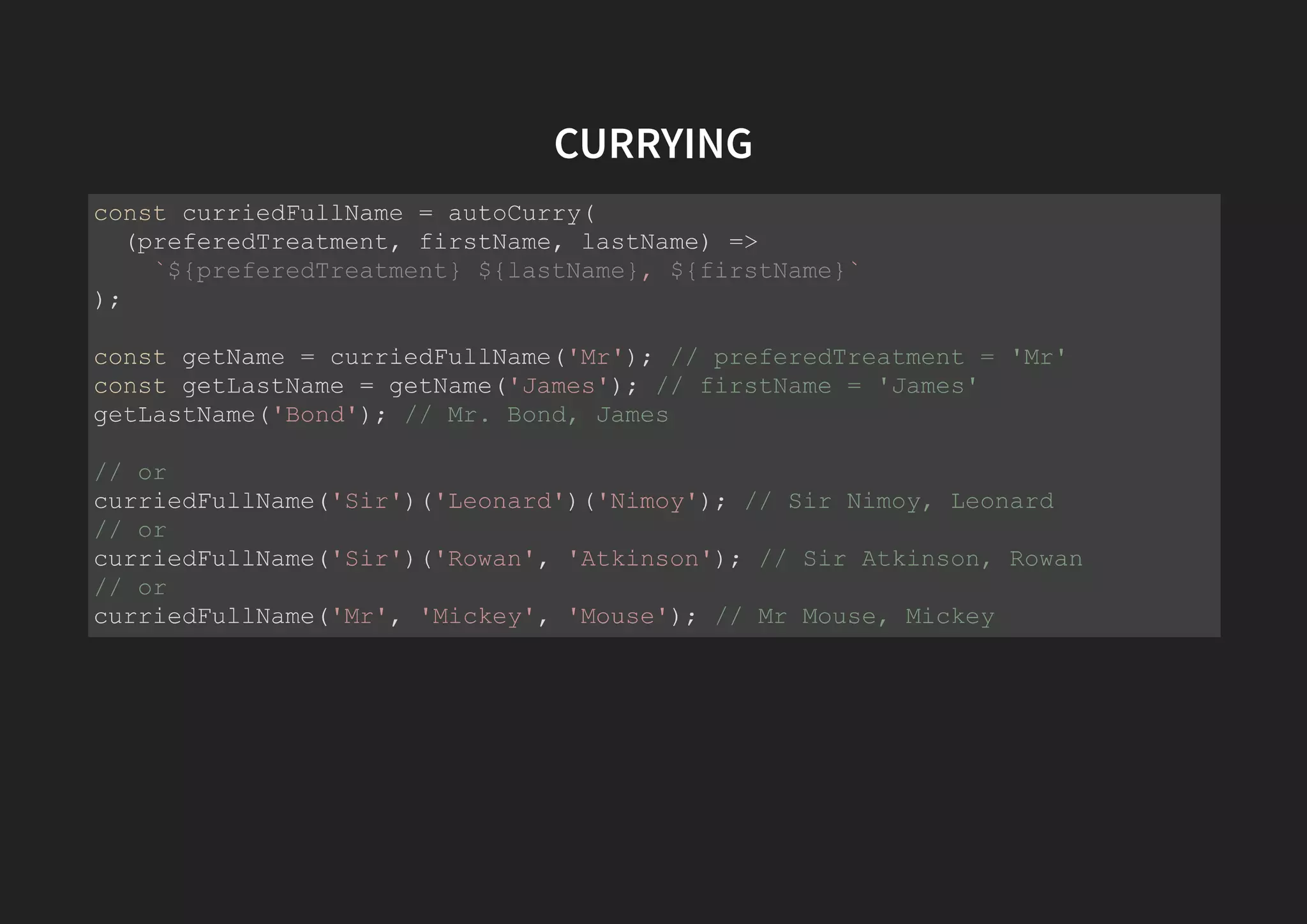
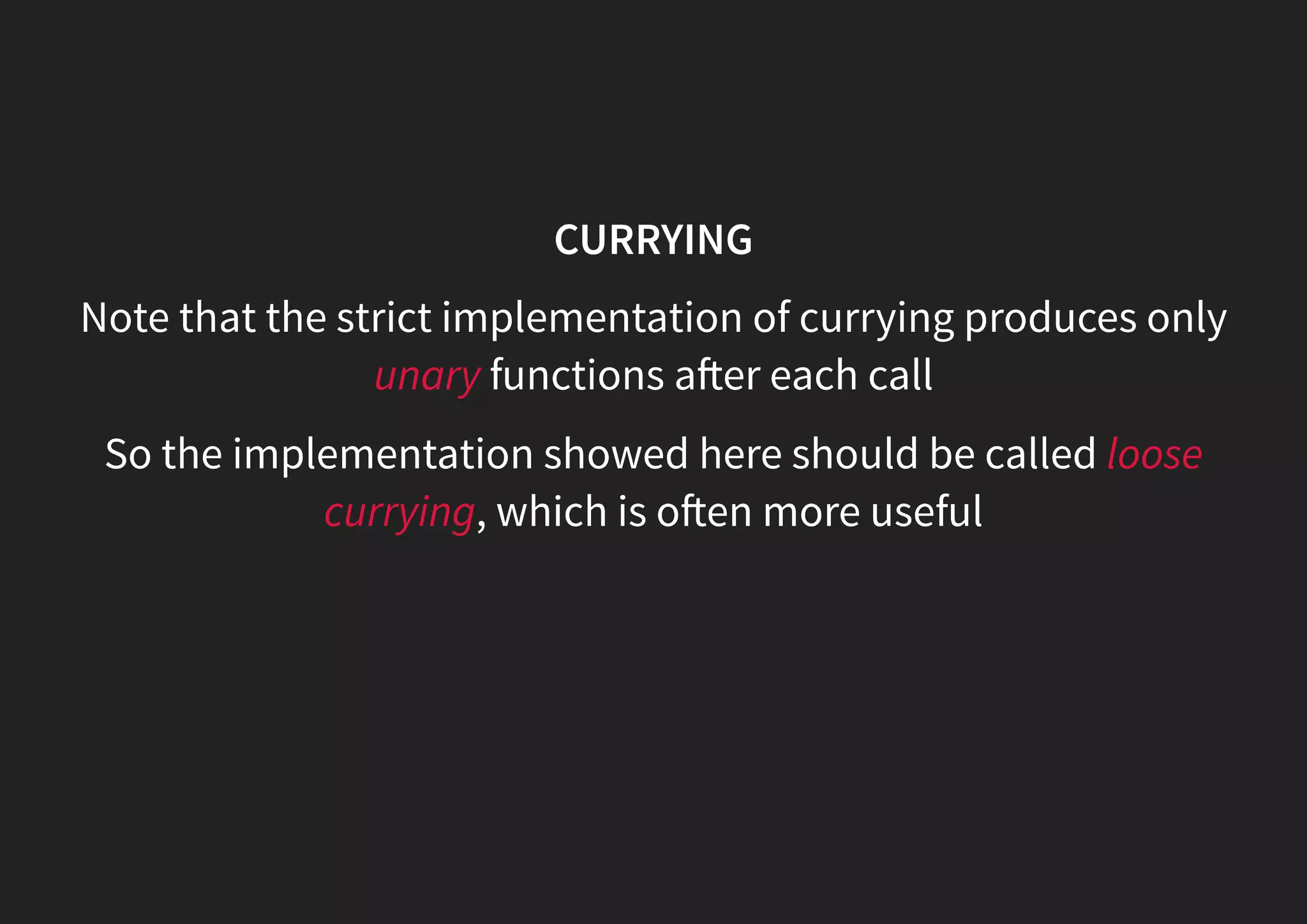
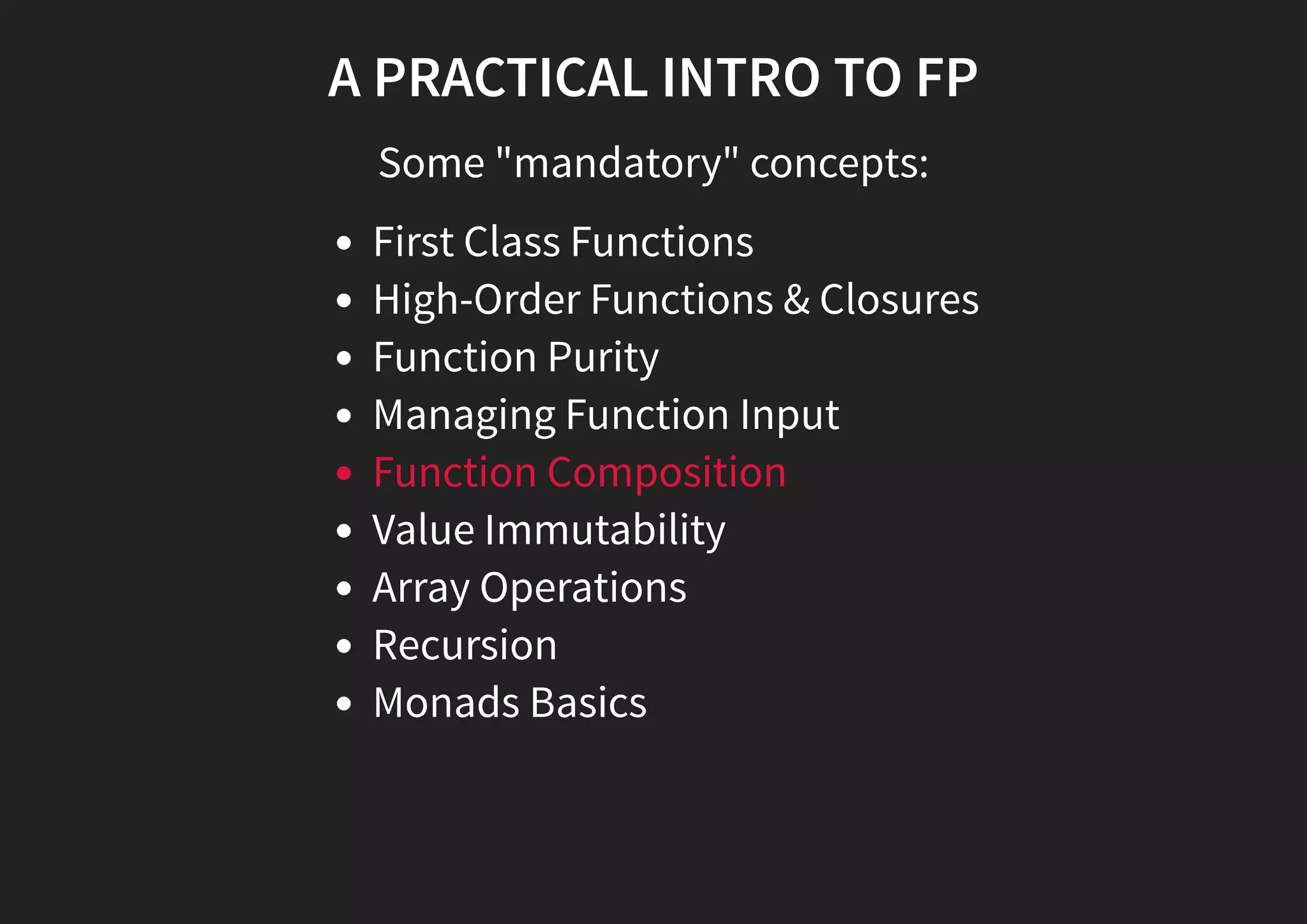

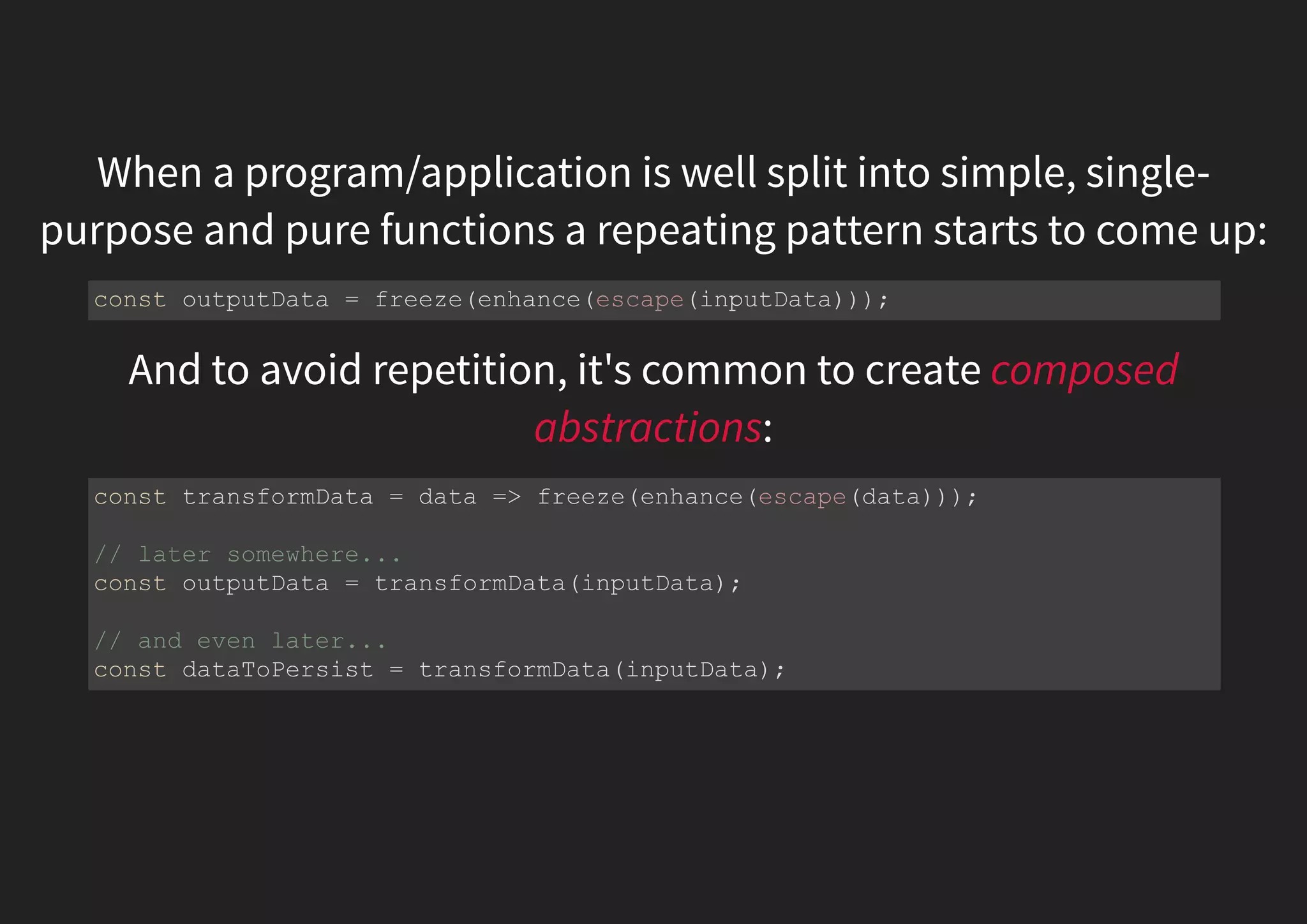
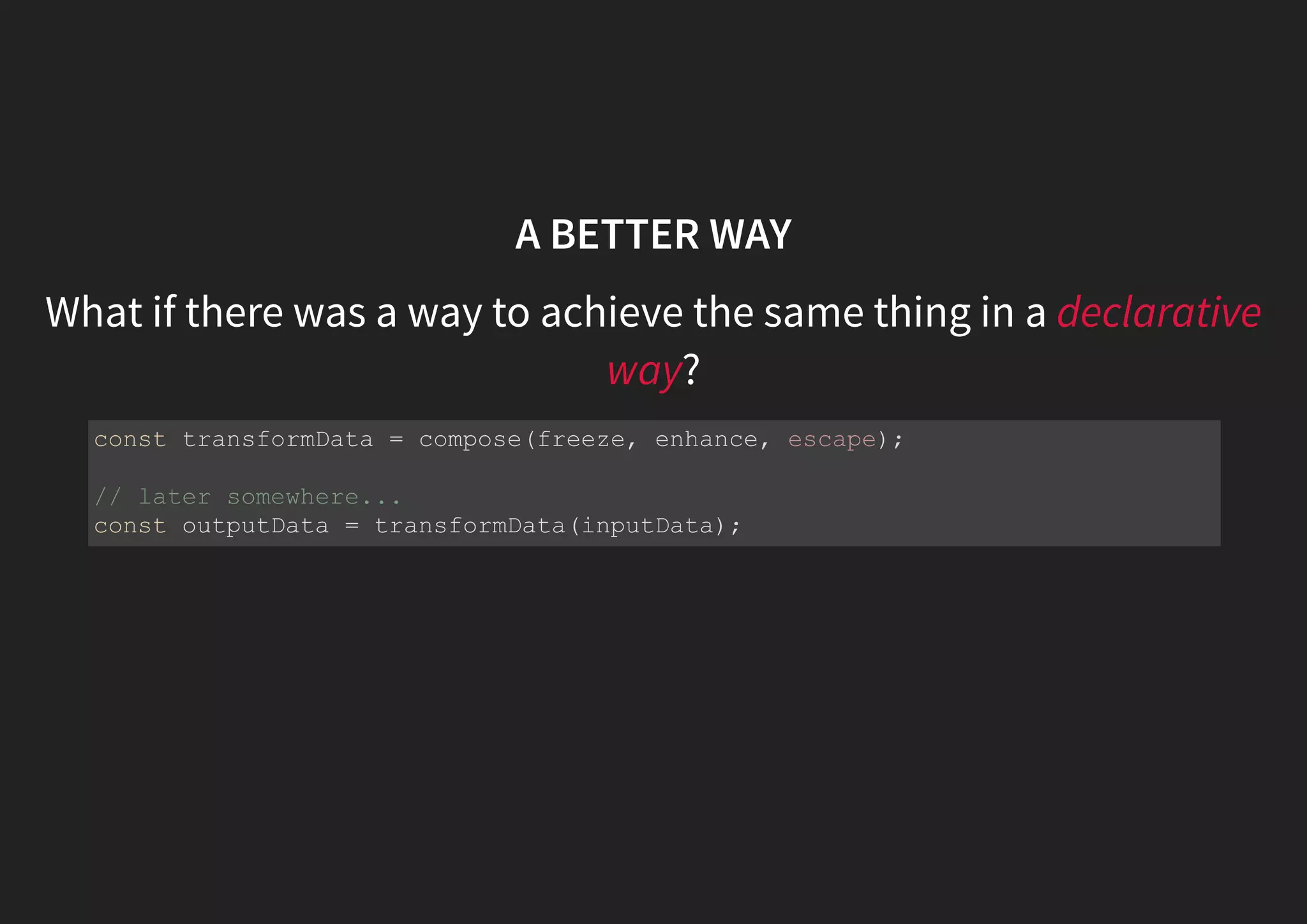
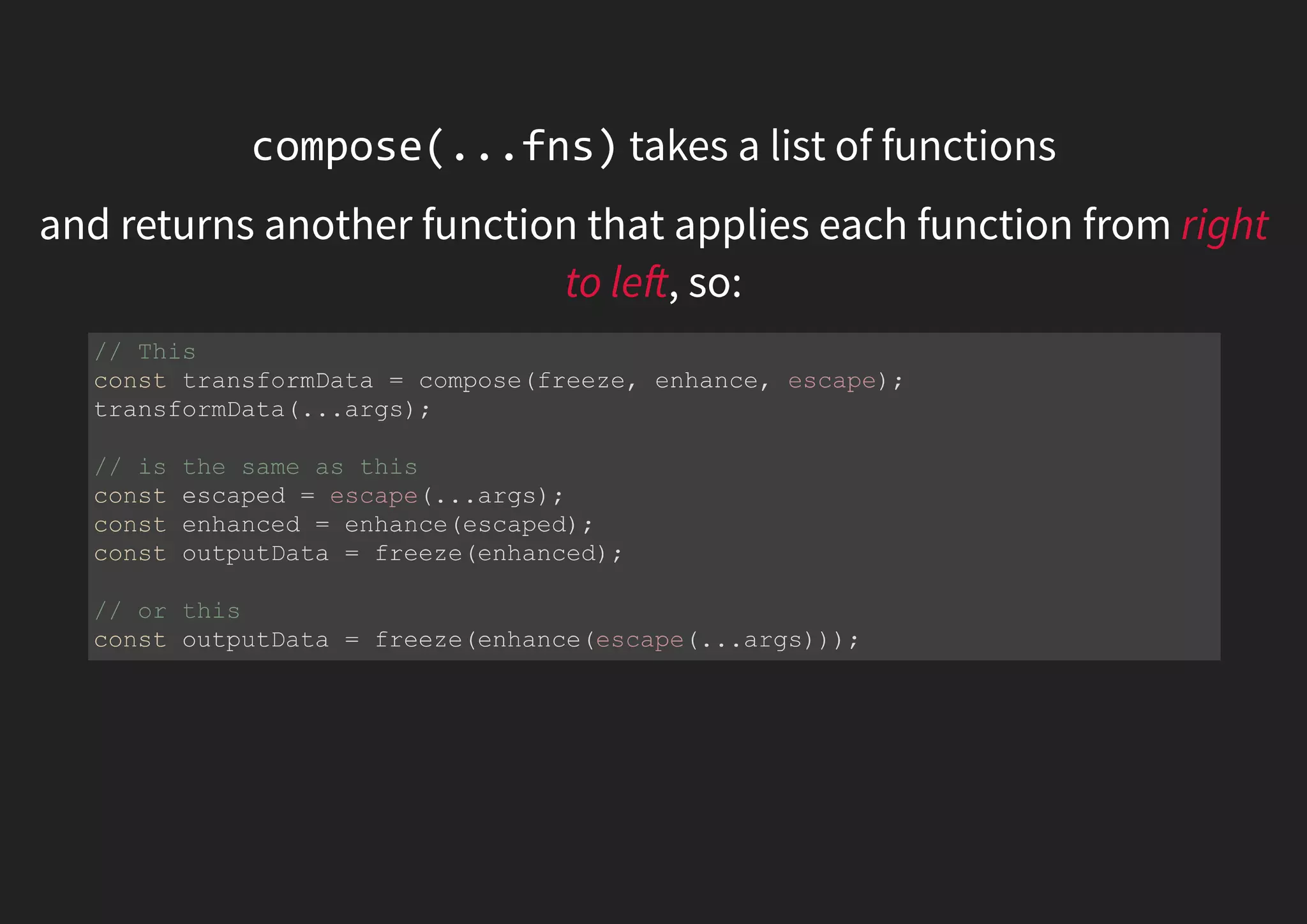
 );](https://image.slidesharecdn.com/fp-intro-presentation-170524023111/75/Introduction-to-Functional-Programming-w-JS-52-2048.jpg)
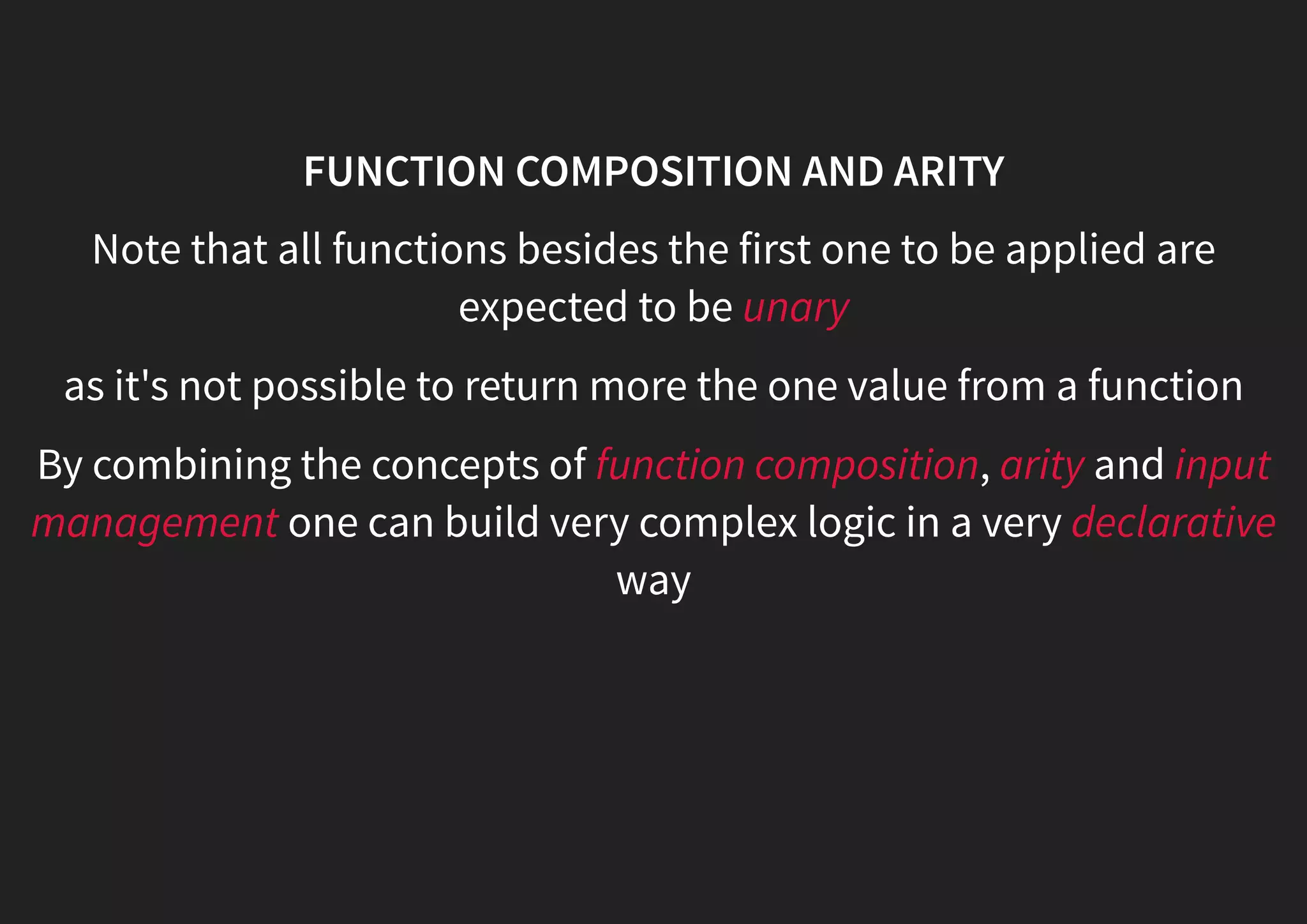
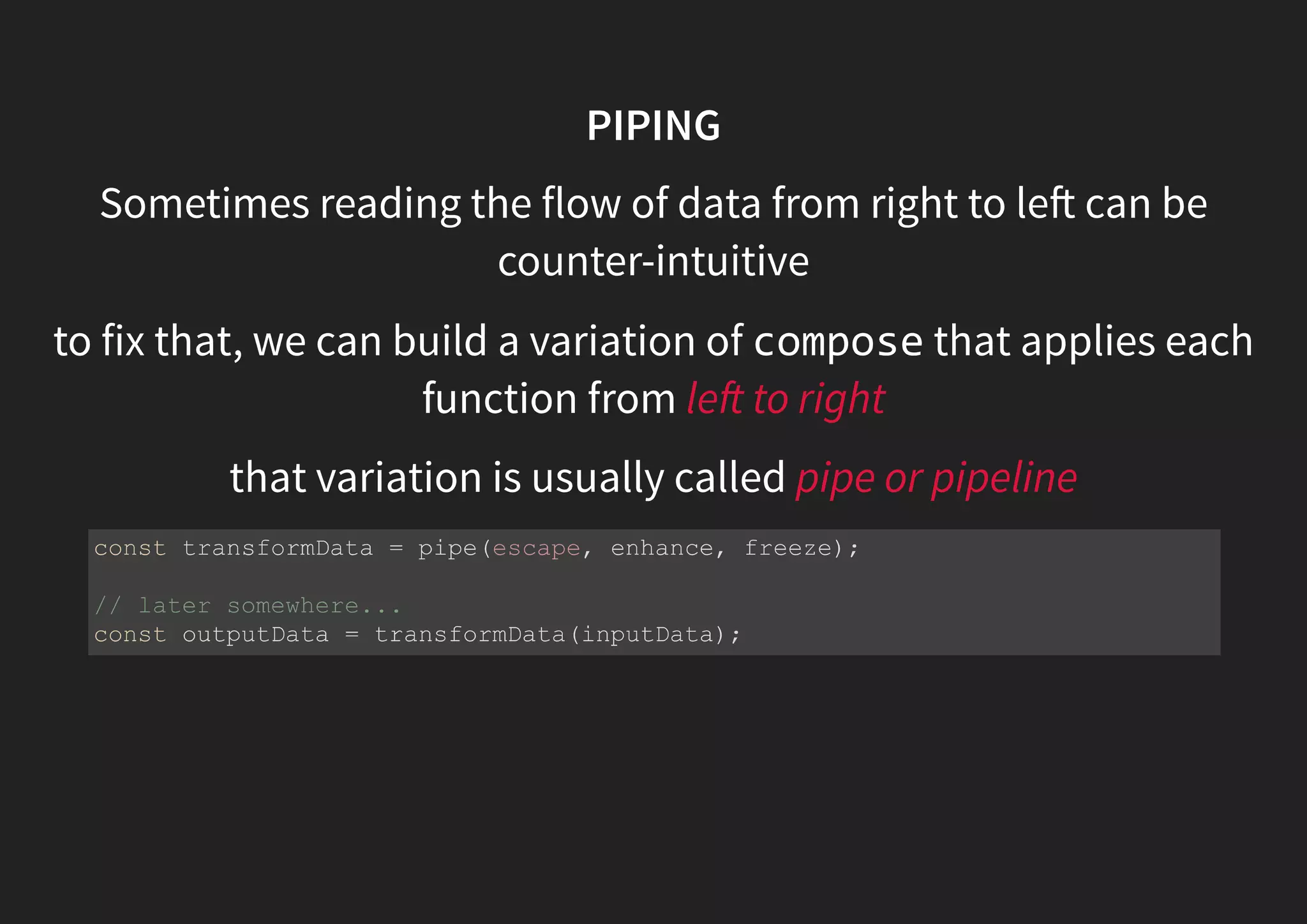
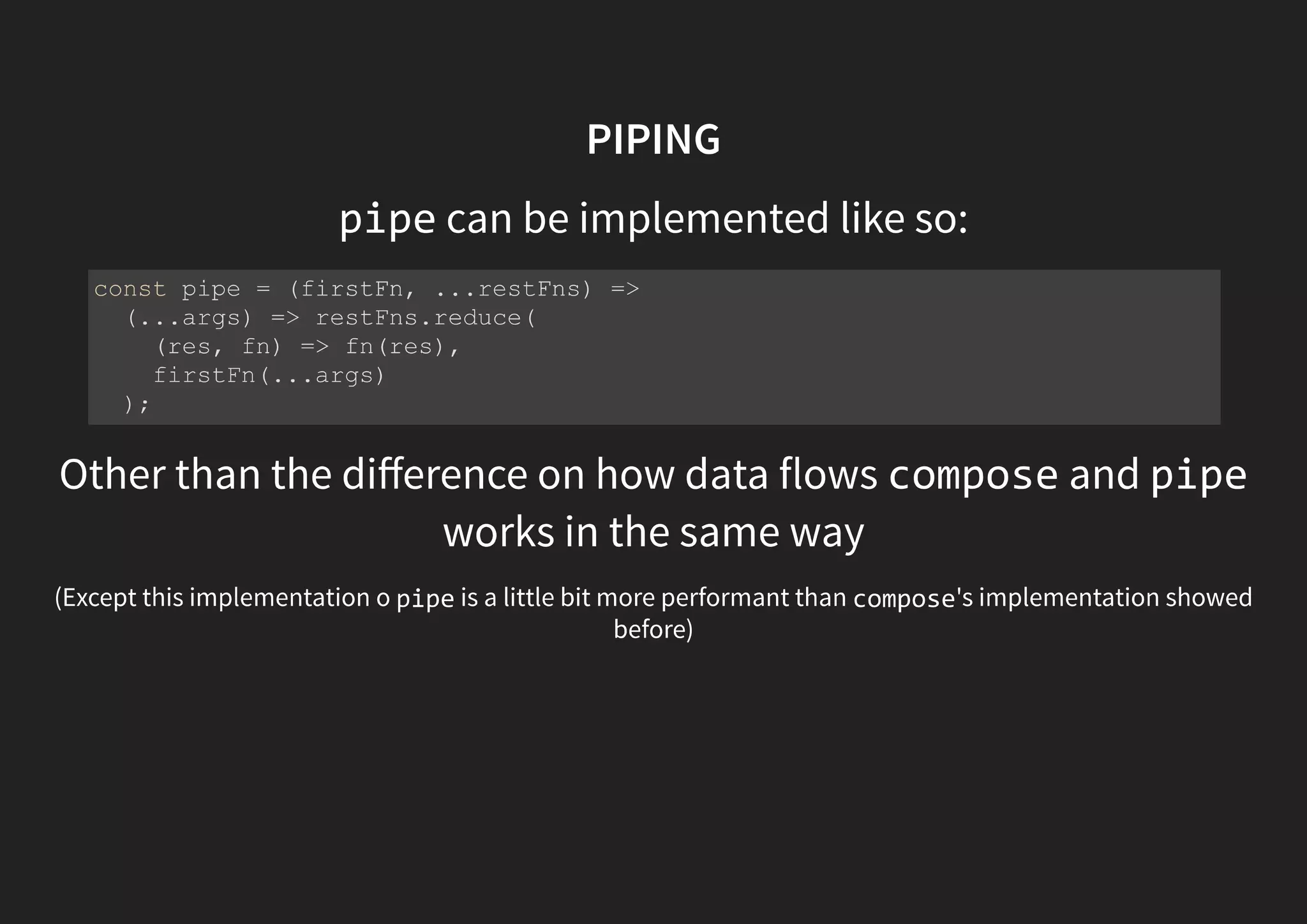
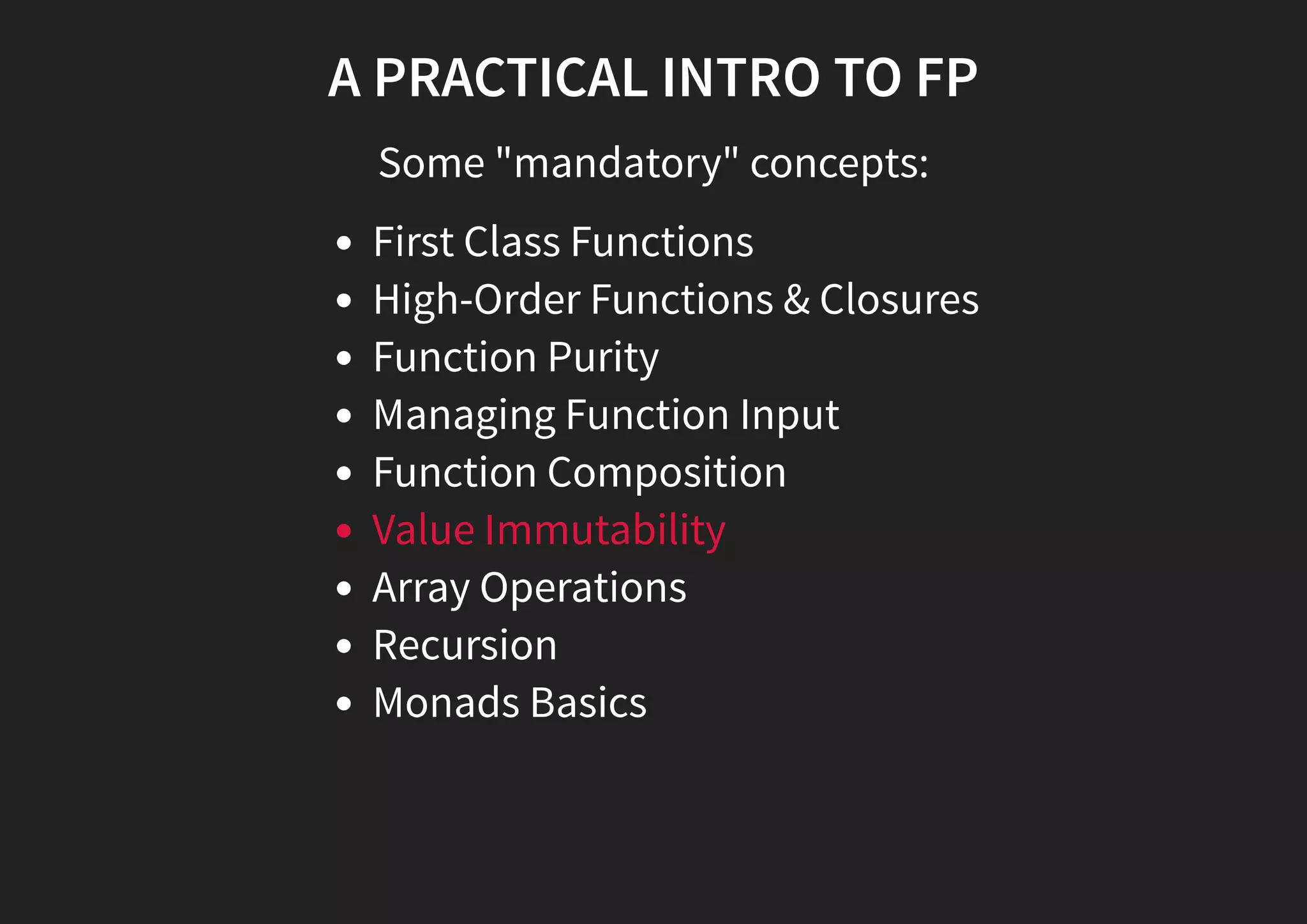

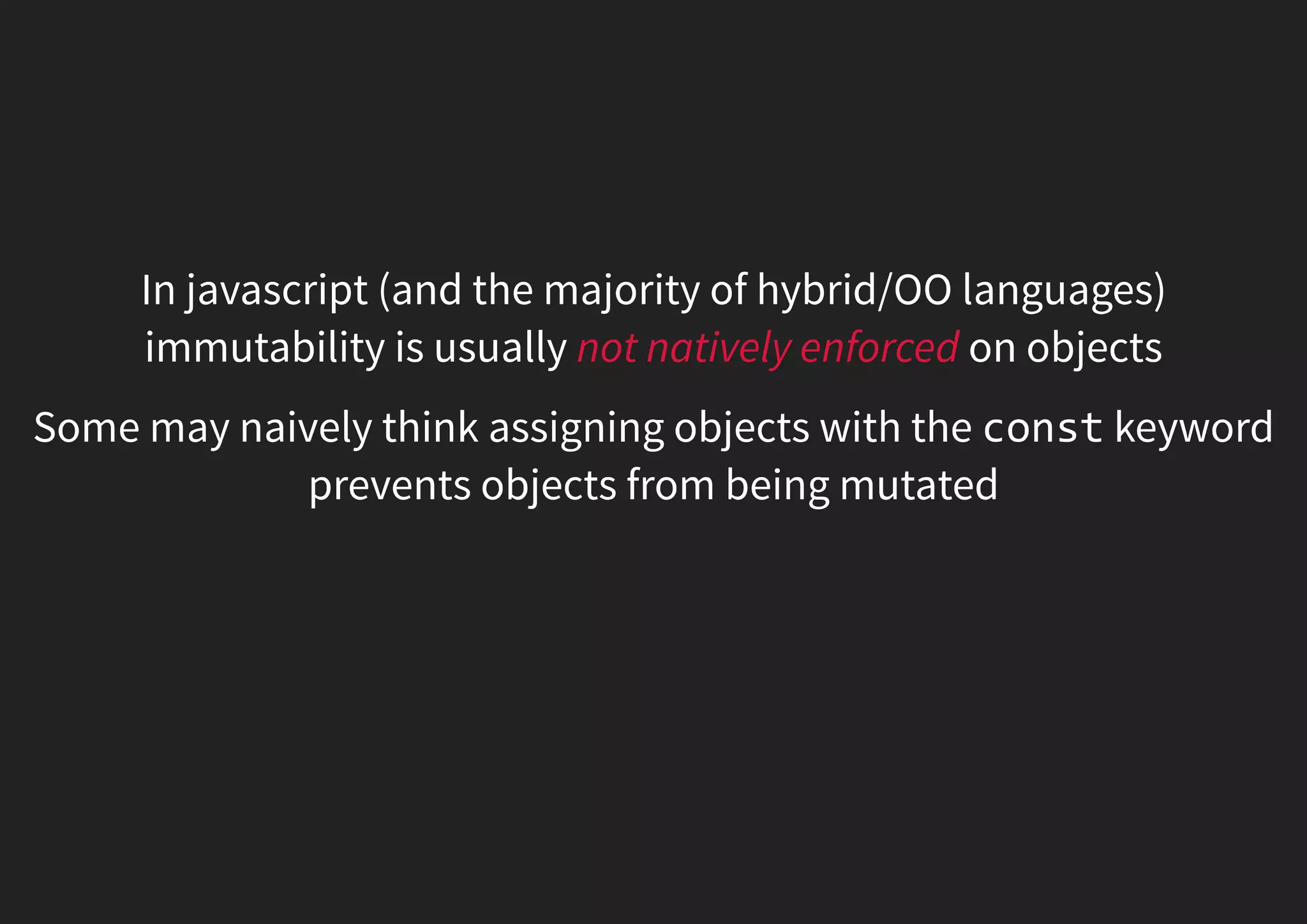
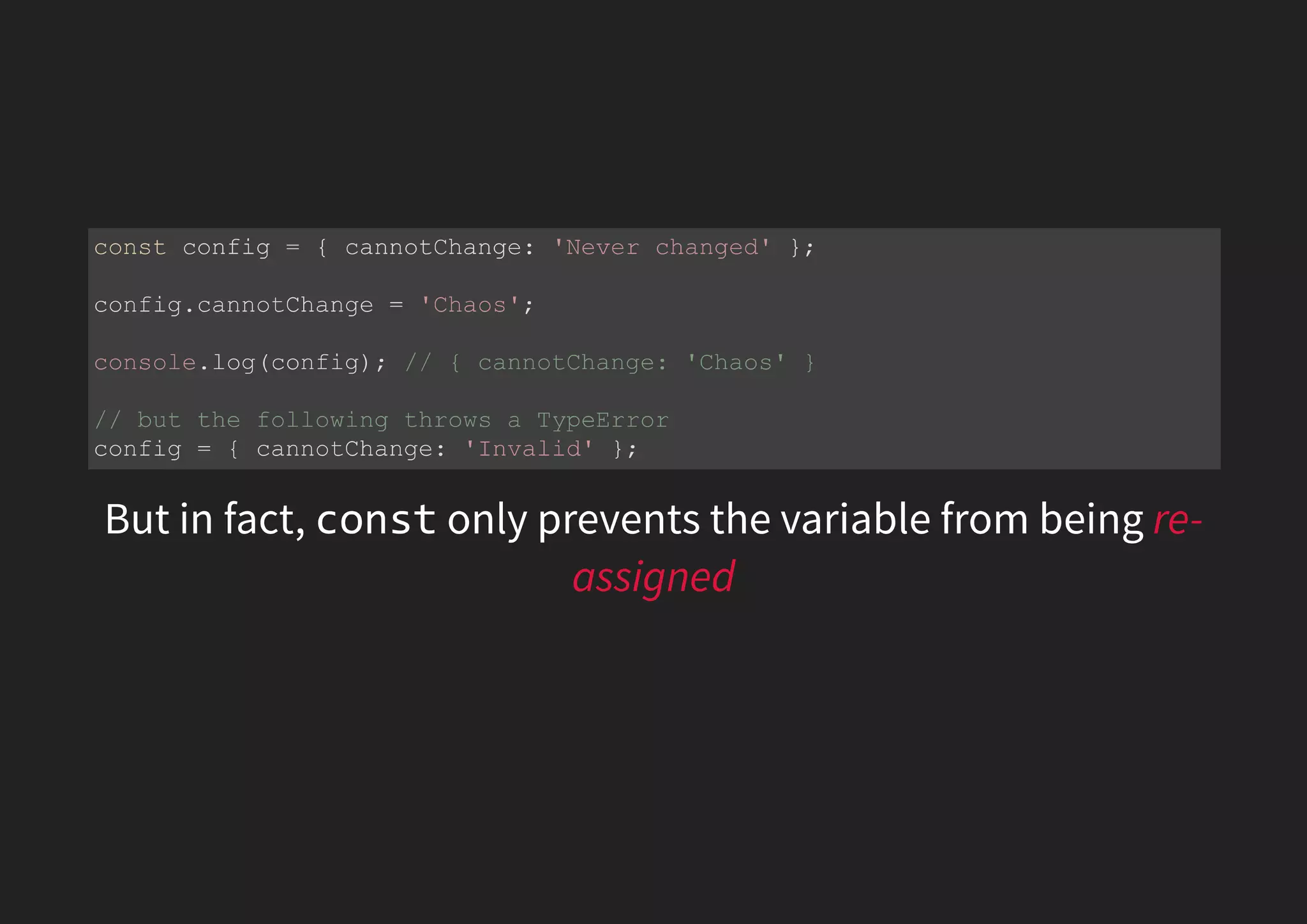
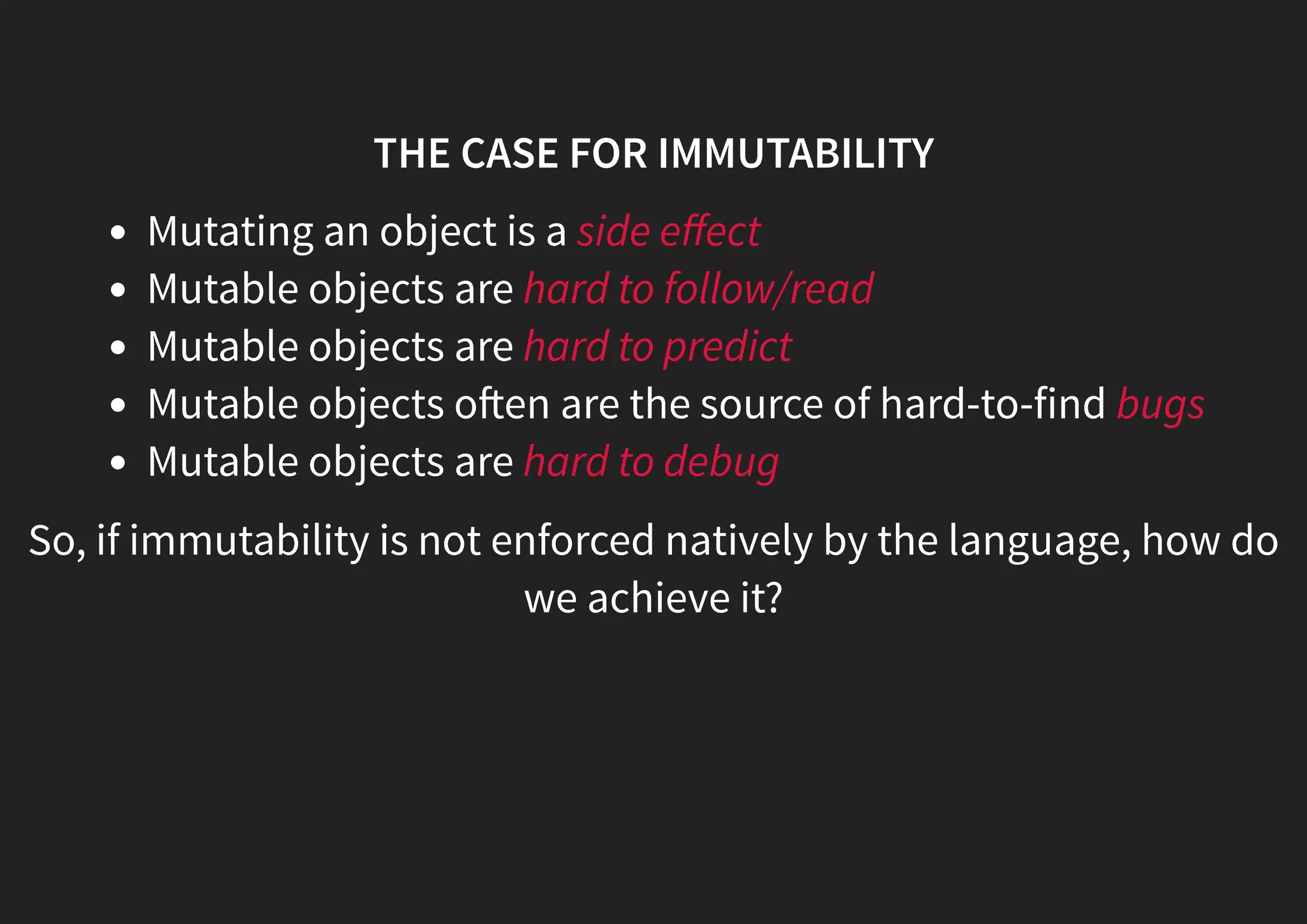
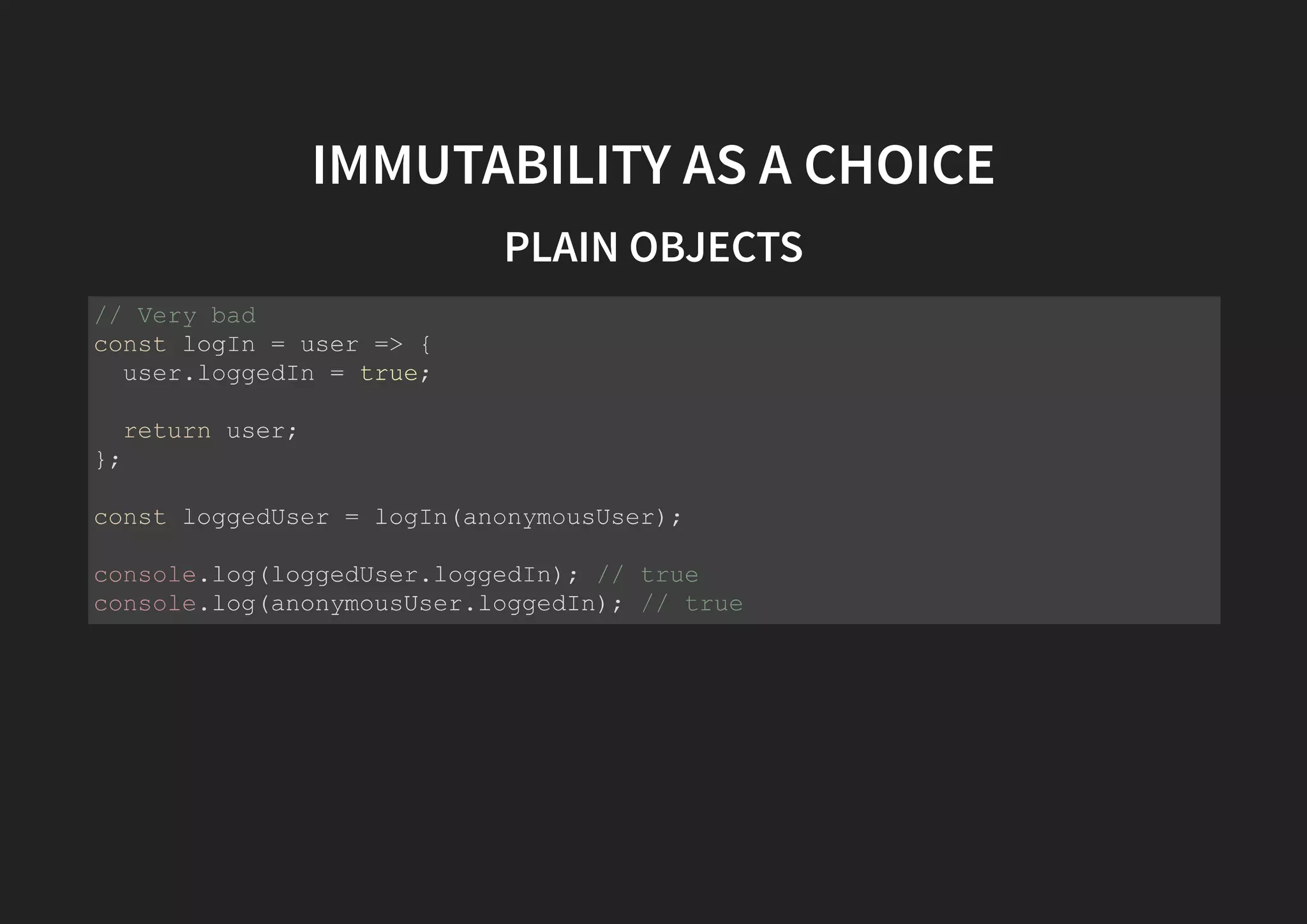
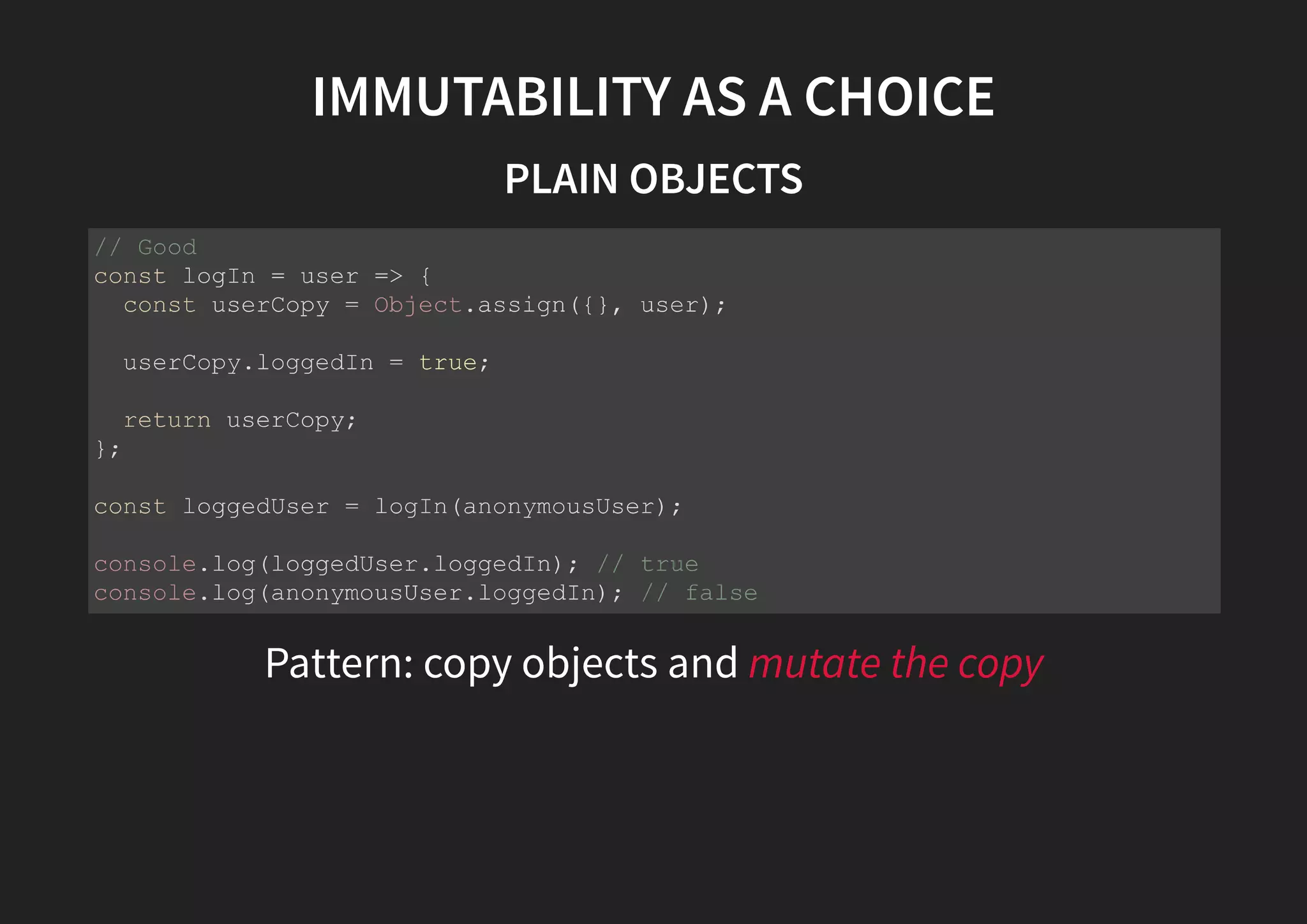
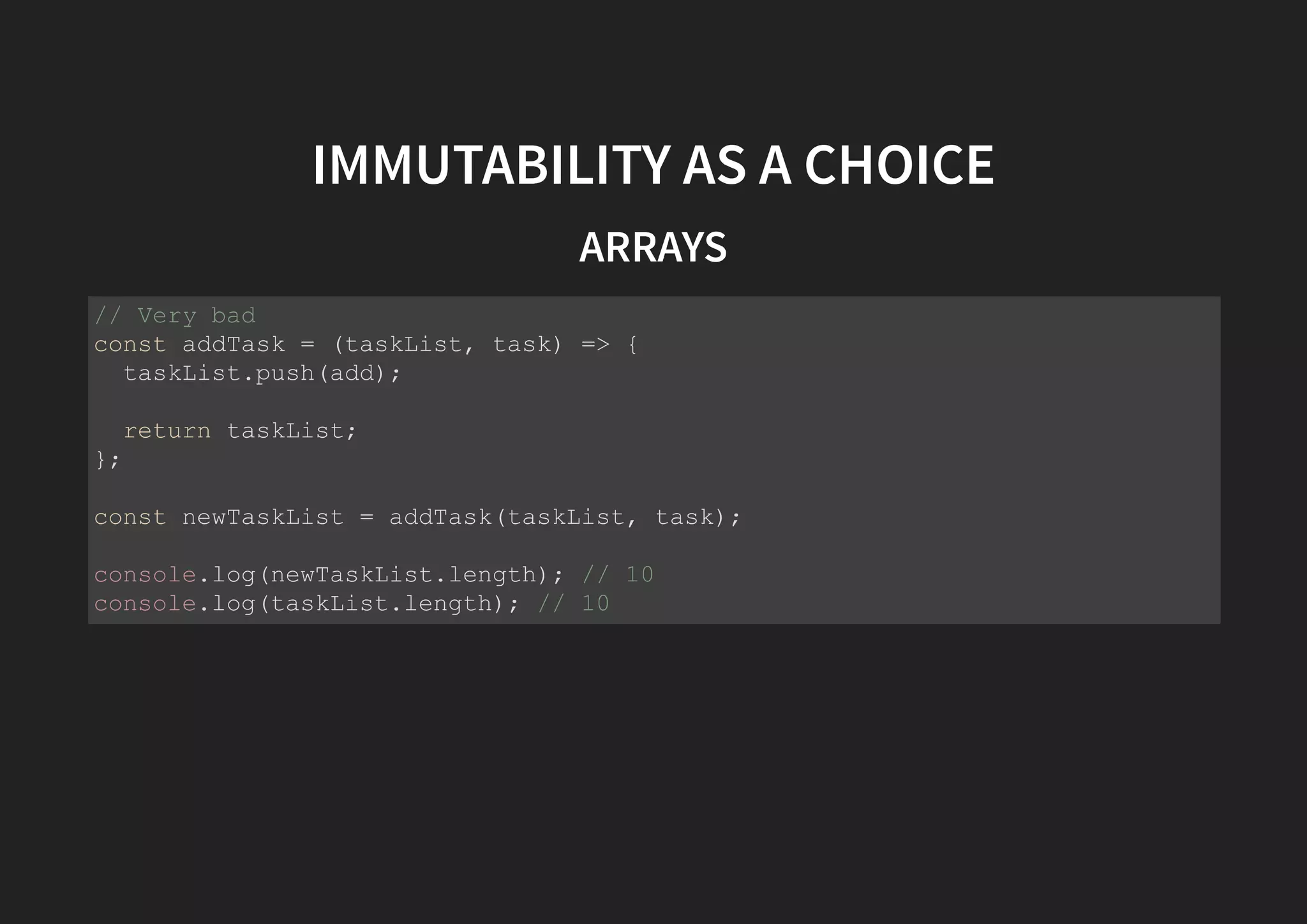
![IMMUTABILITY AS A CHOICE ARRAYS Pattern: avoid mutable methods (push, pop, shi , unshi , splice, sort, fill, reverse) instead use immutable methods (concat, slice, map, filter) or the spread notation // Good const addTask = (taskList, task) => { // or [...taskList, task]; return taskList.concat(task); }; const newTaskList = addTask(taskList, task); console.log(newTaskList.length); // 10 console.log(taskList.length); // 9](https://image.slidesharecdn.com/fp-intro-presentation-170524023111/75/Introduction-to-Functional-Programming-w-JS-64-2048.jpg)
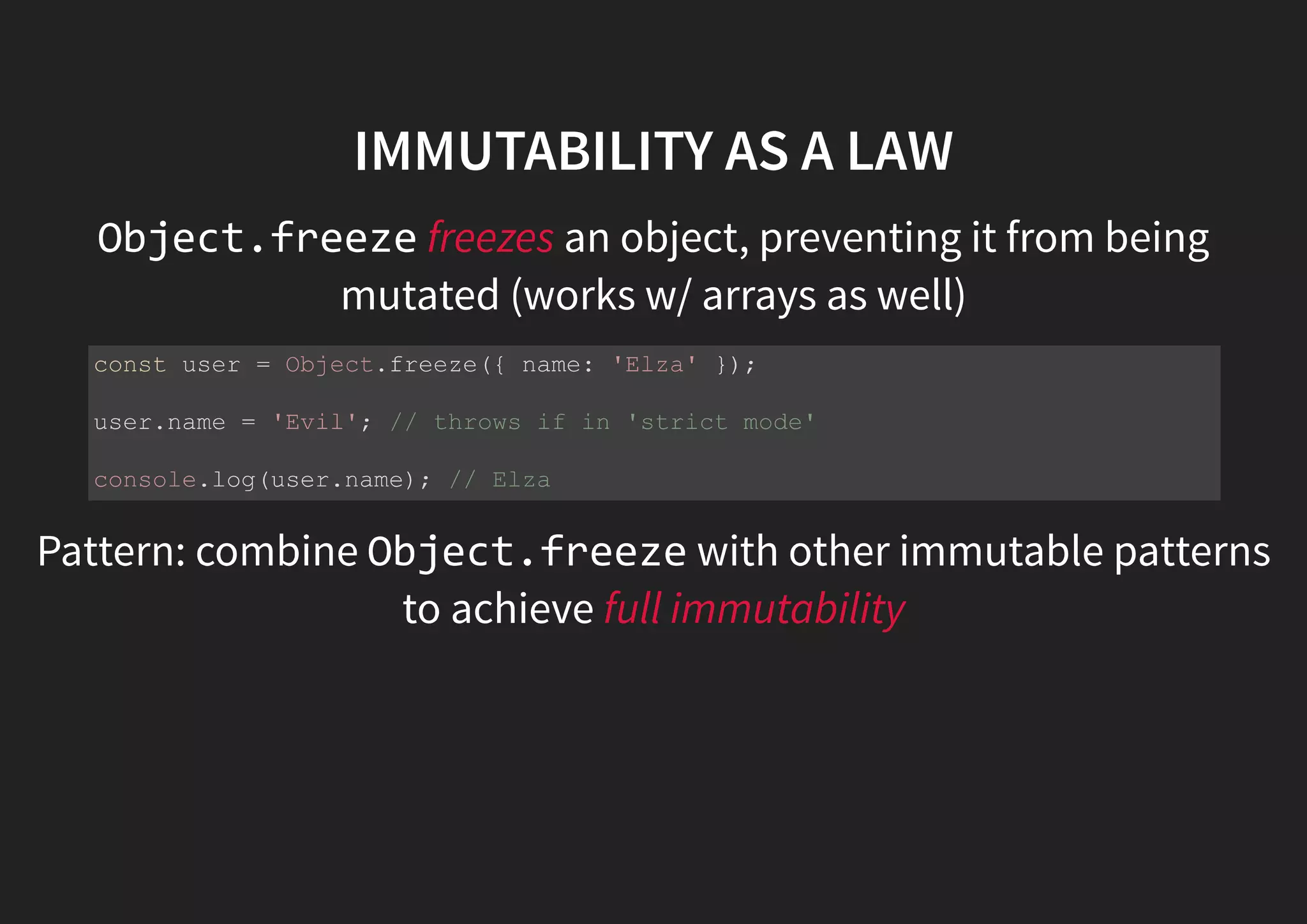
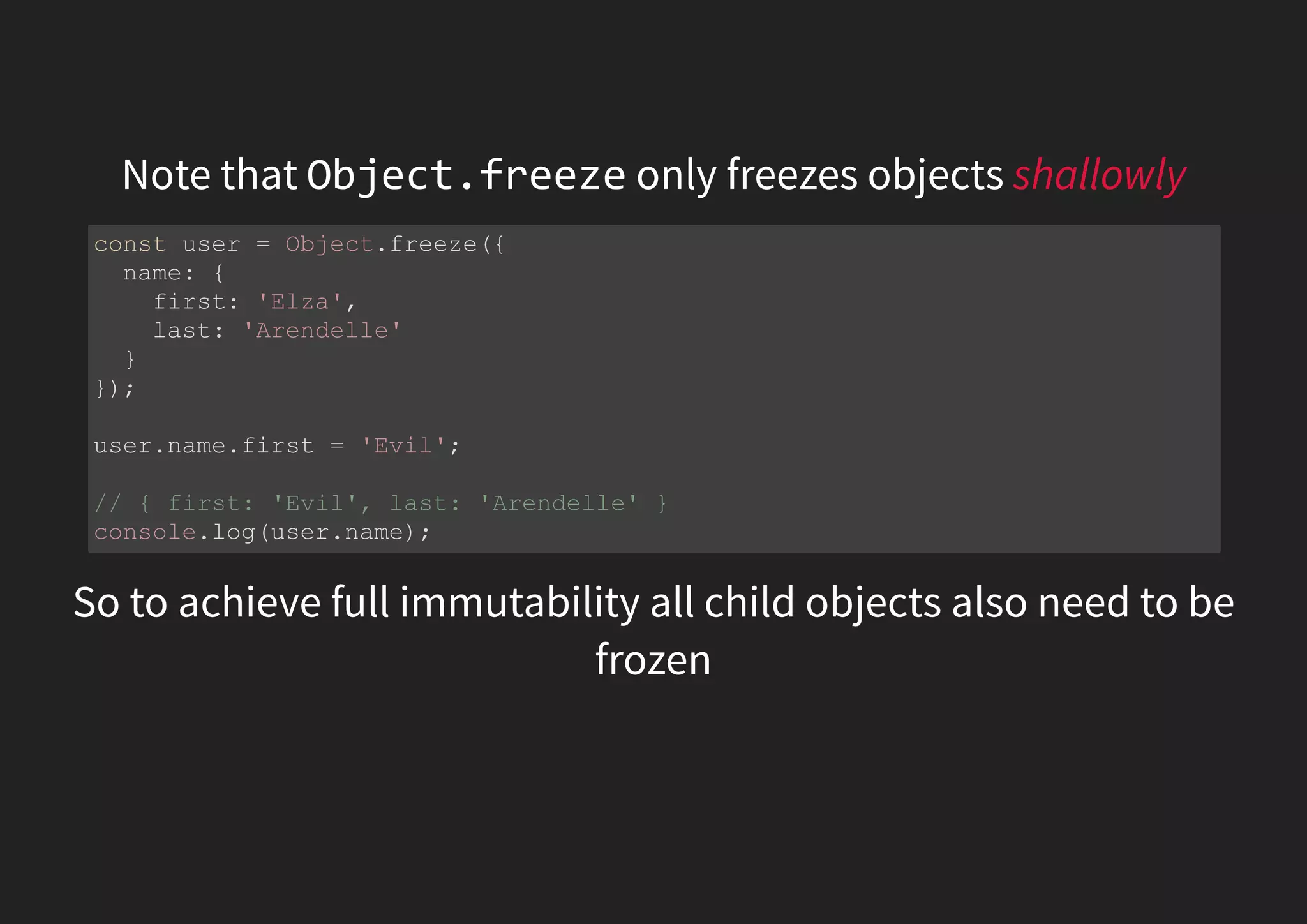
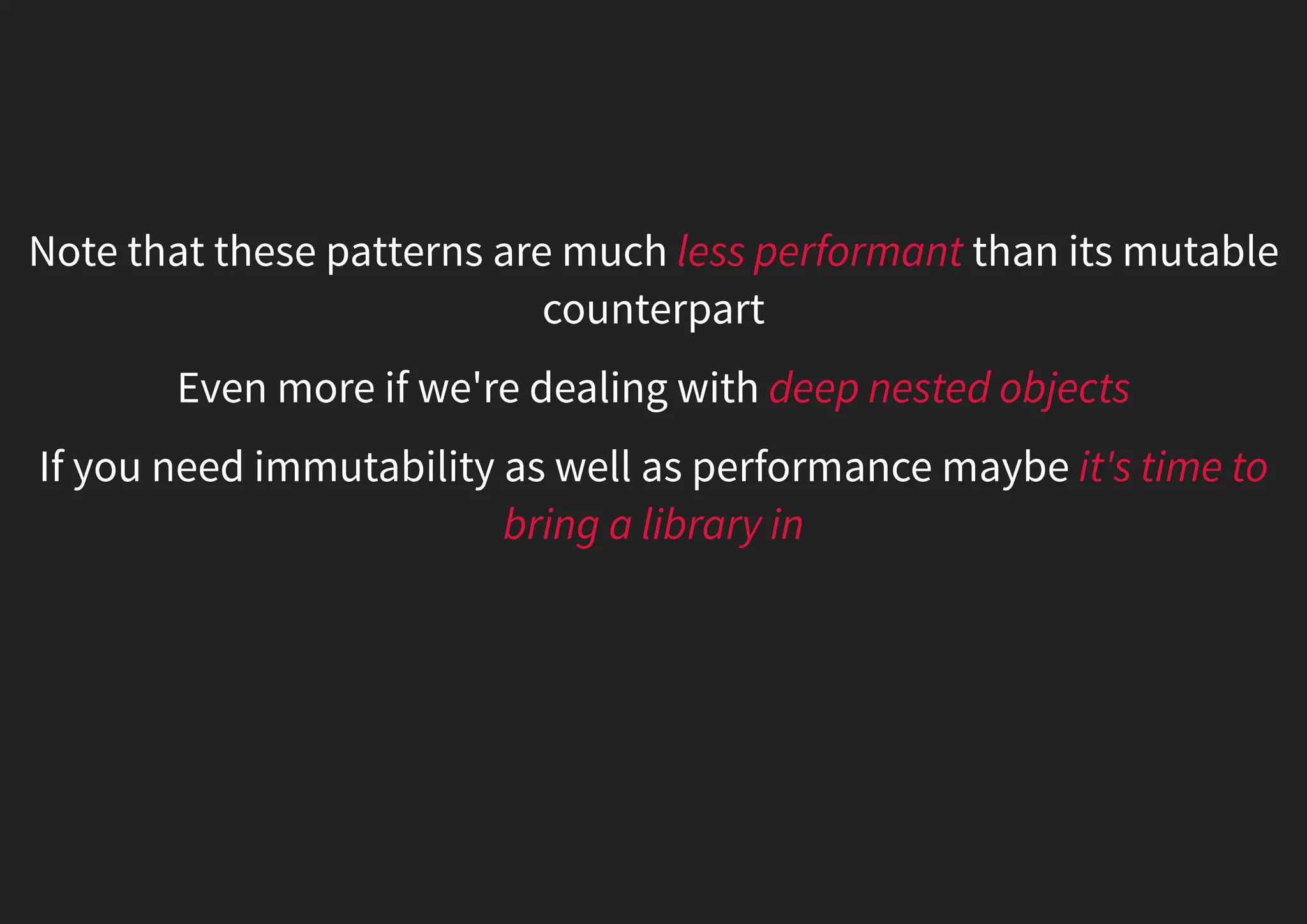
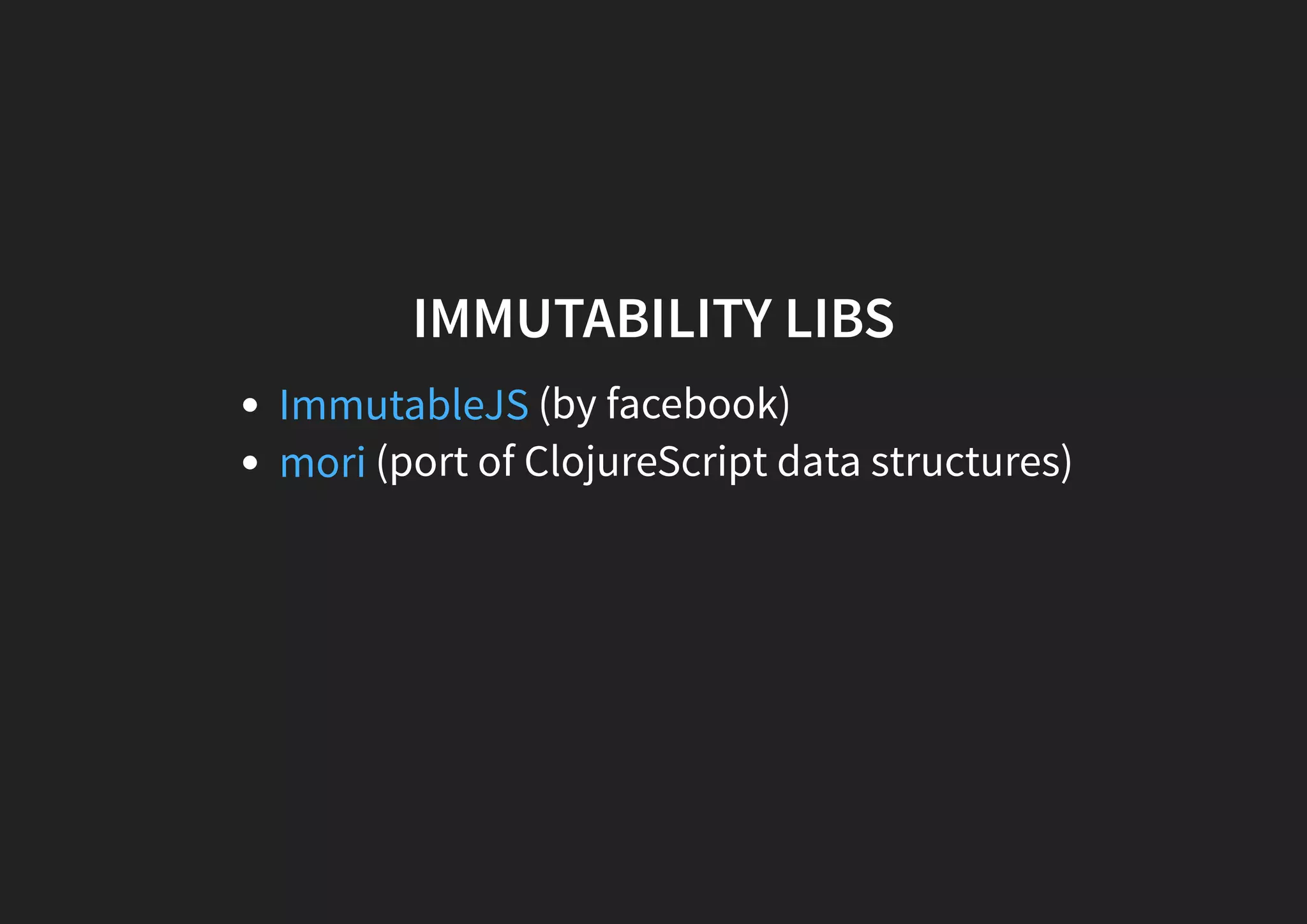
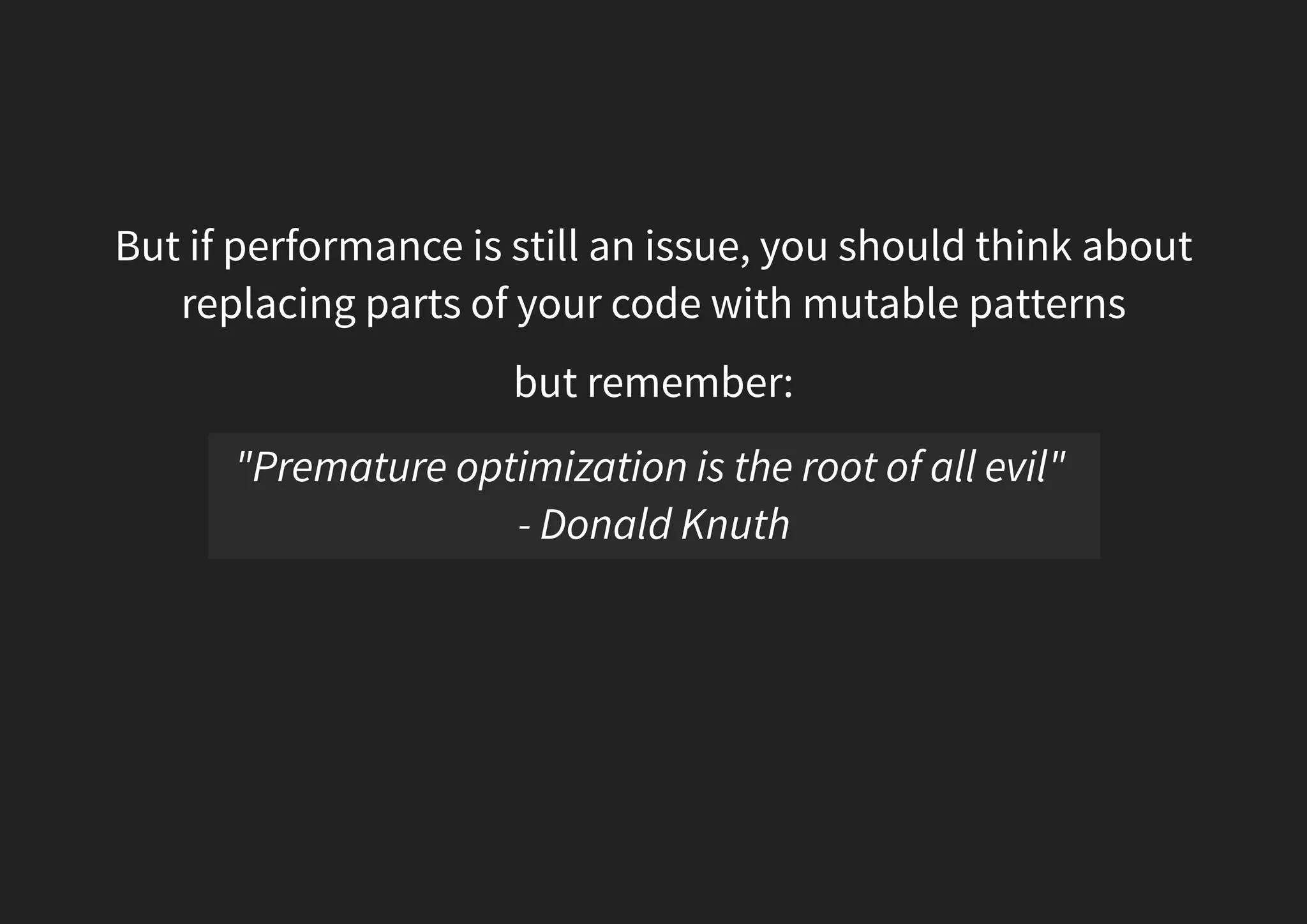
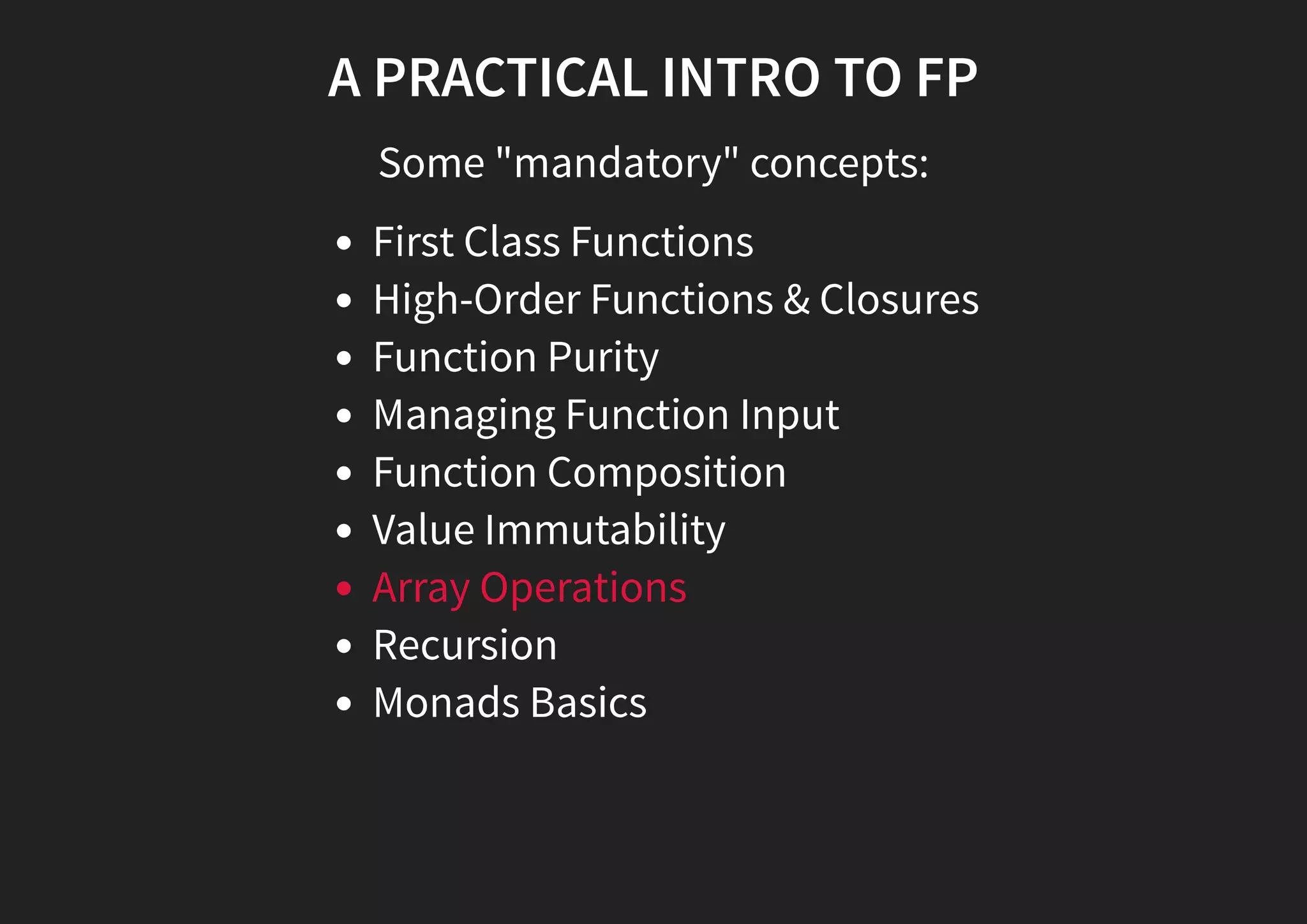

![ARRAY METHODS VS LOOPS const activeItems = []; for (let i = 0; i < arr.length; i++) { if (arr[i].active === true) { activeItems.push(arr[i]); } } // vs const activeItems = arr.filter(item => item.active === true);](https://image.slidesharecdn.com/fp-intro-presentation-170524023111/75/Introduction-to-Functional-Programming-w-JS-72-2048.jpg)
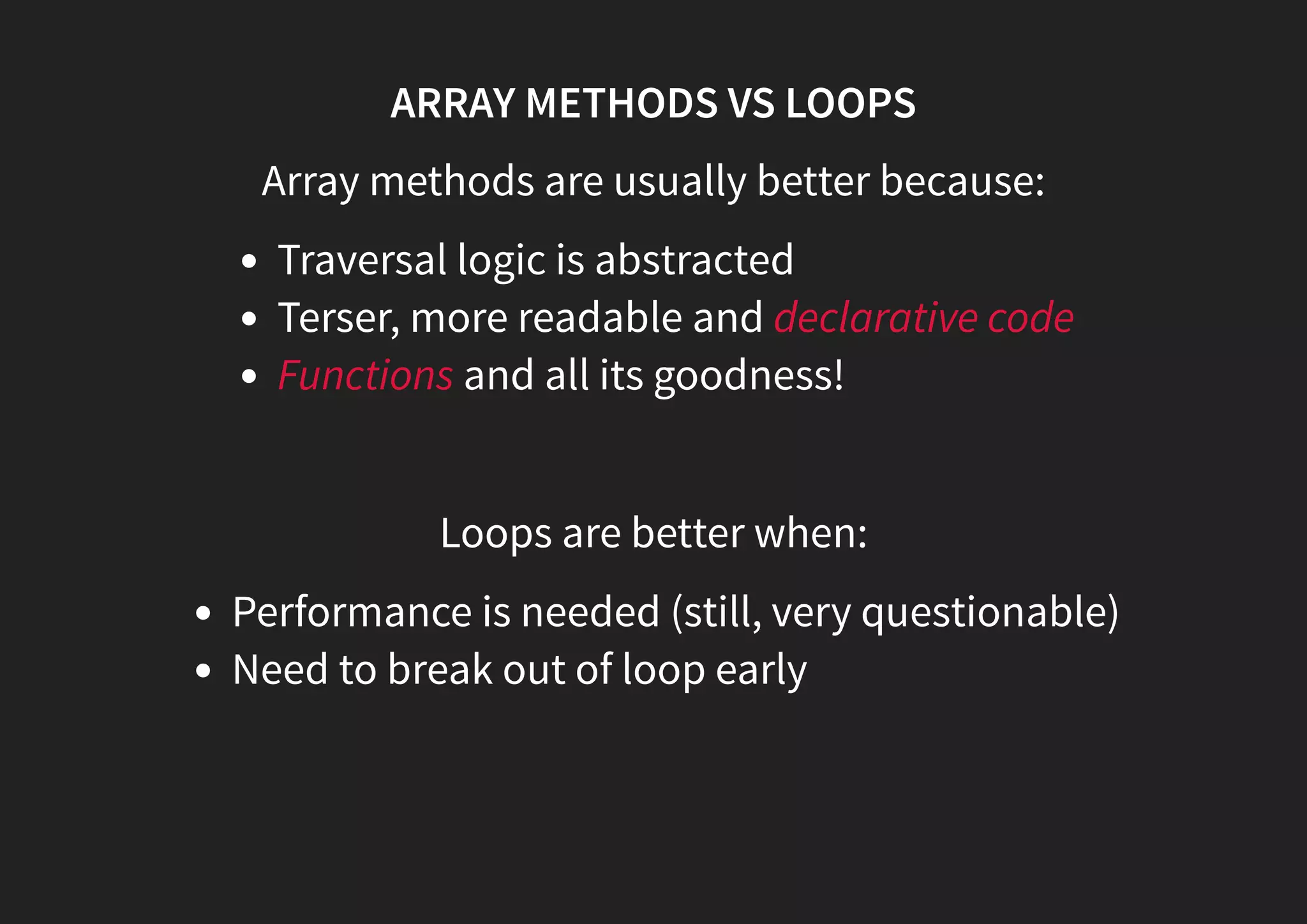
![MAP() Array.prototype.map is a HoF that traverses the list applying the provided operator function to each item and produces a new array with the values returned from each operator call const bananas = [' ', ' ', ' ', ' ', ' ', ' ']; const mix = bananas.map((banana, index) => ( index % 2 === 0 ? ' ' : banana )); console.log(mix); // [' ', ' ', ' ', ' ', ' ', ' ']](https://image.slidesharecdn.com/fp-intro-presentation-170524023111/75/Introduction-to-Functional-Programming-w-JS-74-2048.jpg)
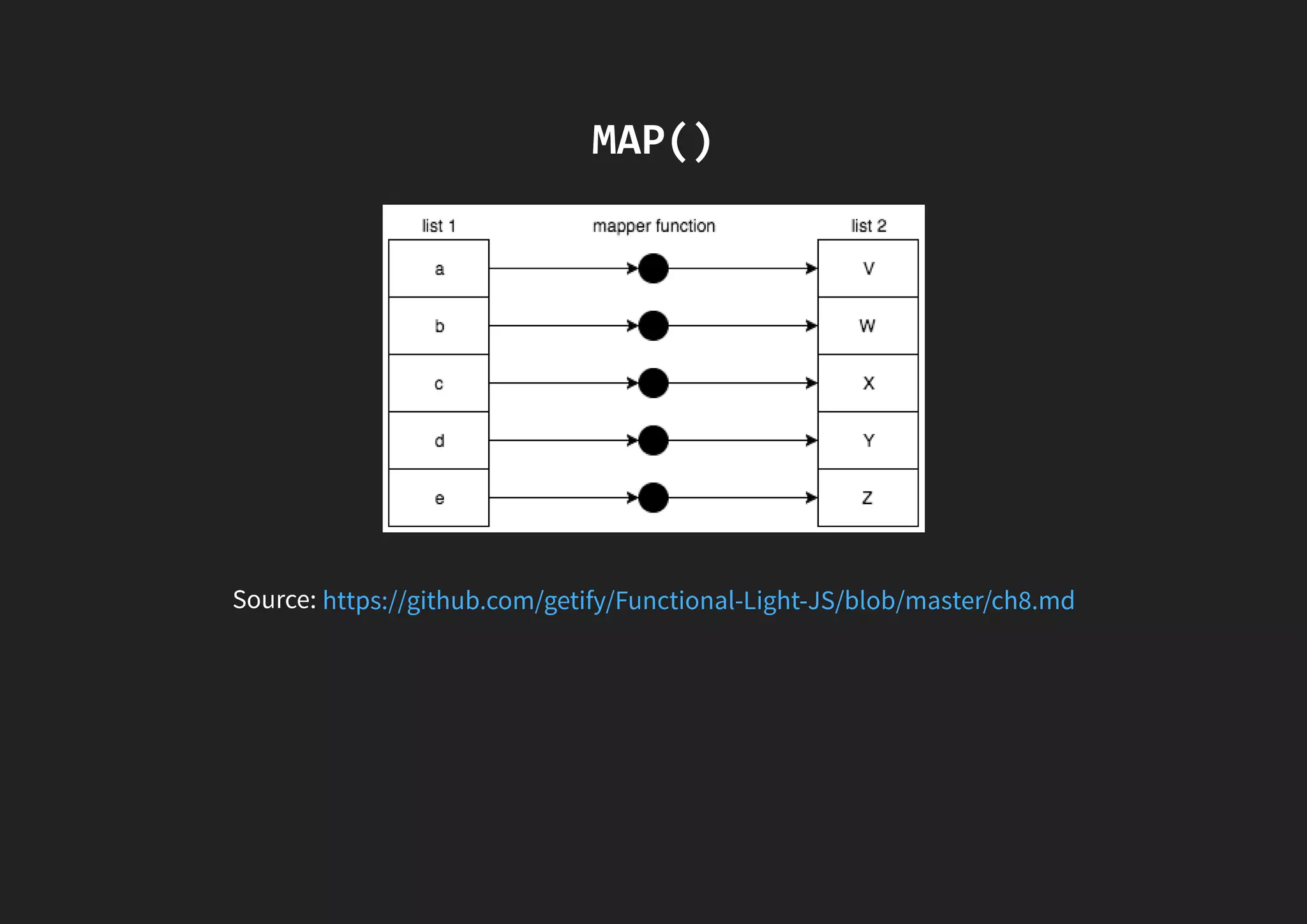
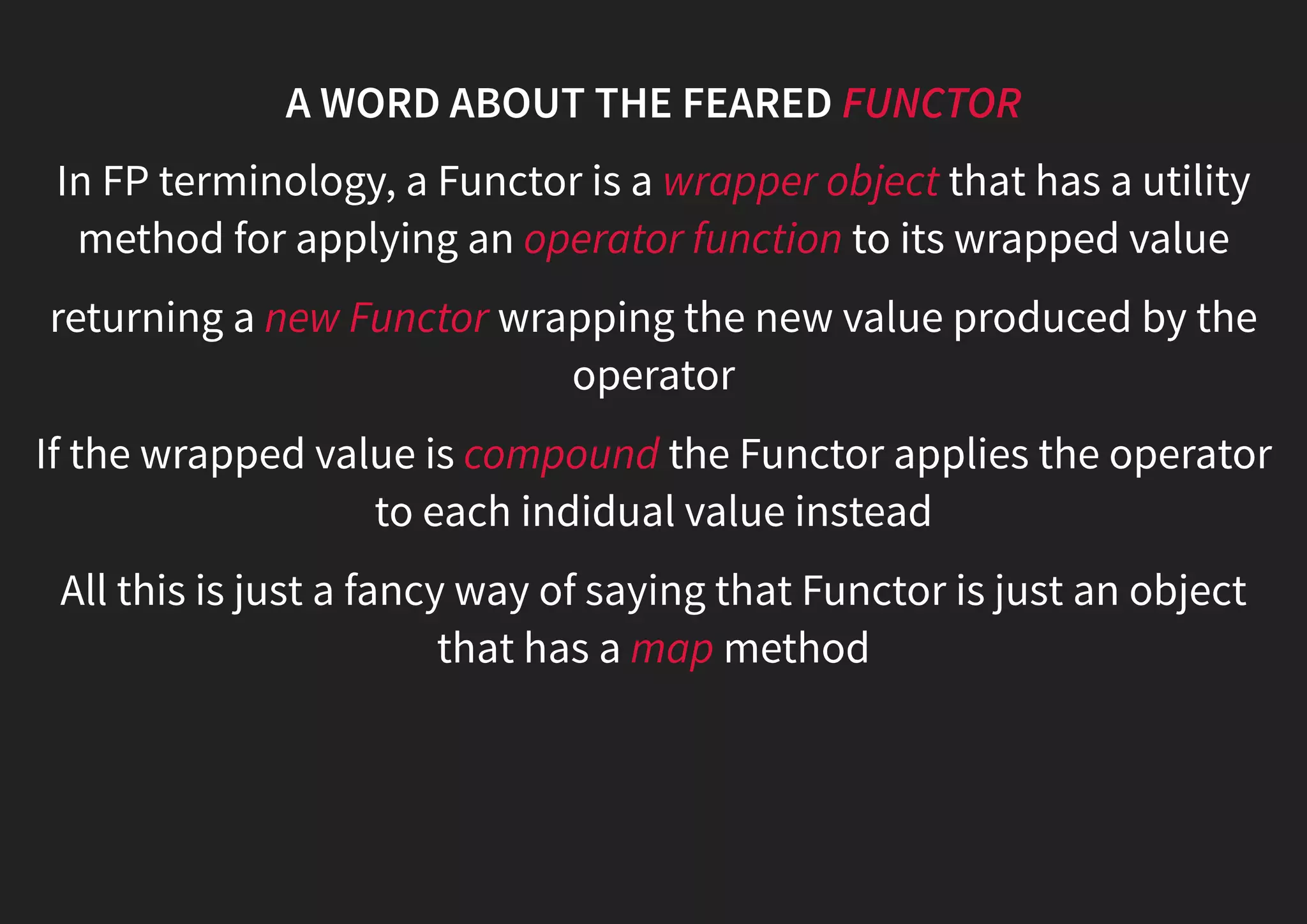
![FILTER() Array.prototype.filter is a HoF that traverses the list applying the provided predicate function to each item and produces a new array with the values of which the predicate function returned truthy const badDiet = [' ', ' ', ' ', ' ', ' ', ' ', ' ', ' ']; const goodDiet = badDiet.filter(food => !food.includes(' ')); console.log(goodDiet); // [' ', ' ', ' ', ' ']](https://image.slidesharecdn.com/fp-intro-presentation-170524023111/75/Introduction-to-Functional-Programming-w-JS-77-2048.jpg)
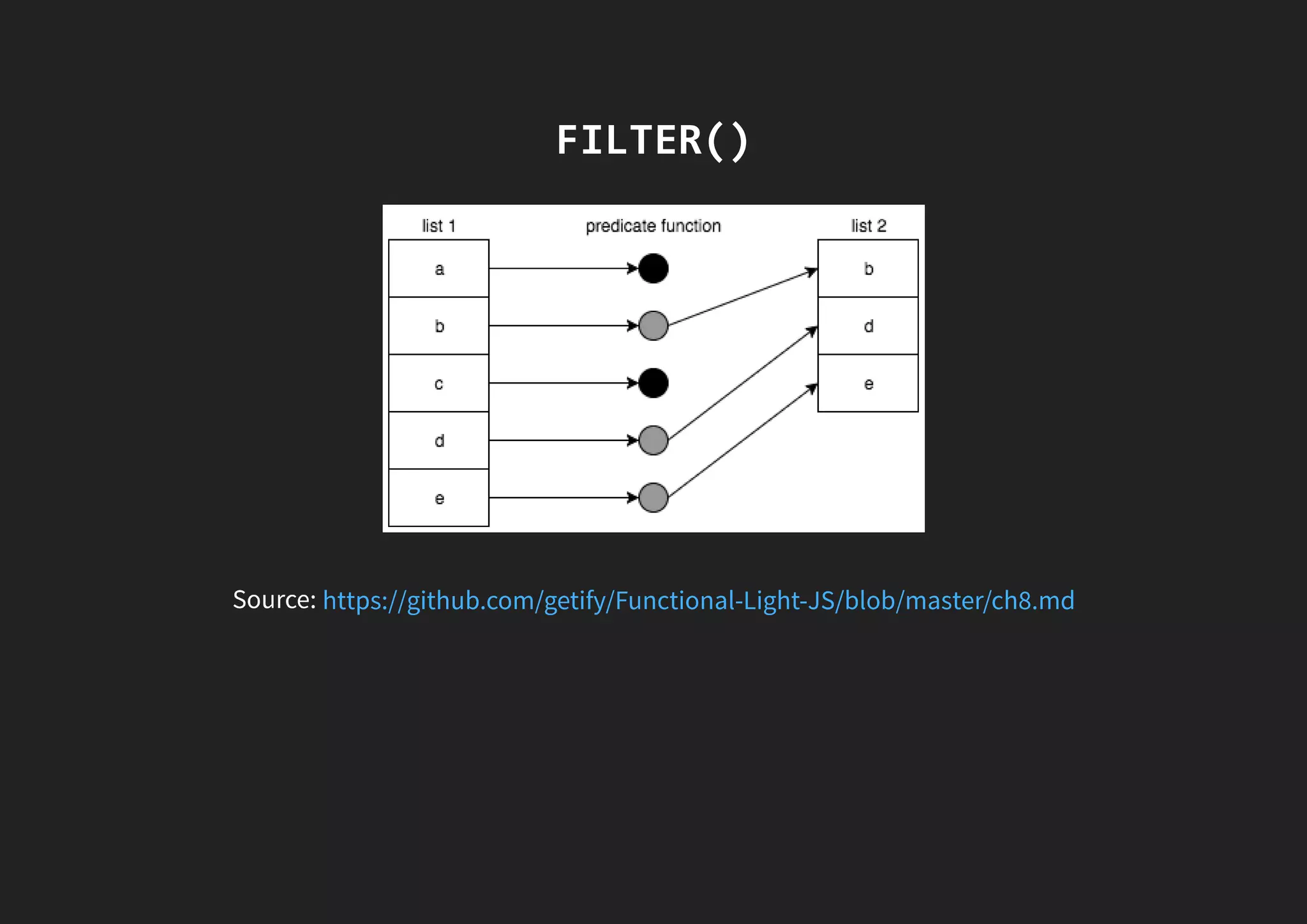
![REDUCE() Array.prototype.reduce is a HoF that traverses the list applying the provided reducer function to the previous returned value and current value And produces whatever the last reducer call returns const people = [' ', ' ', ' ', ' ']; const family = people.reduce((str, person) => ( str === '' ? person : str + 'u200D' + person ), '' /* <- initial value */); console.log(family); // ' '](https://image.slidesharecdn.com/fp-intro-presentation-170524023111/75/Introduction-to-Functional-Programming-w-JS-79-2048.jpg)
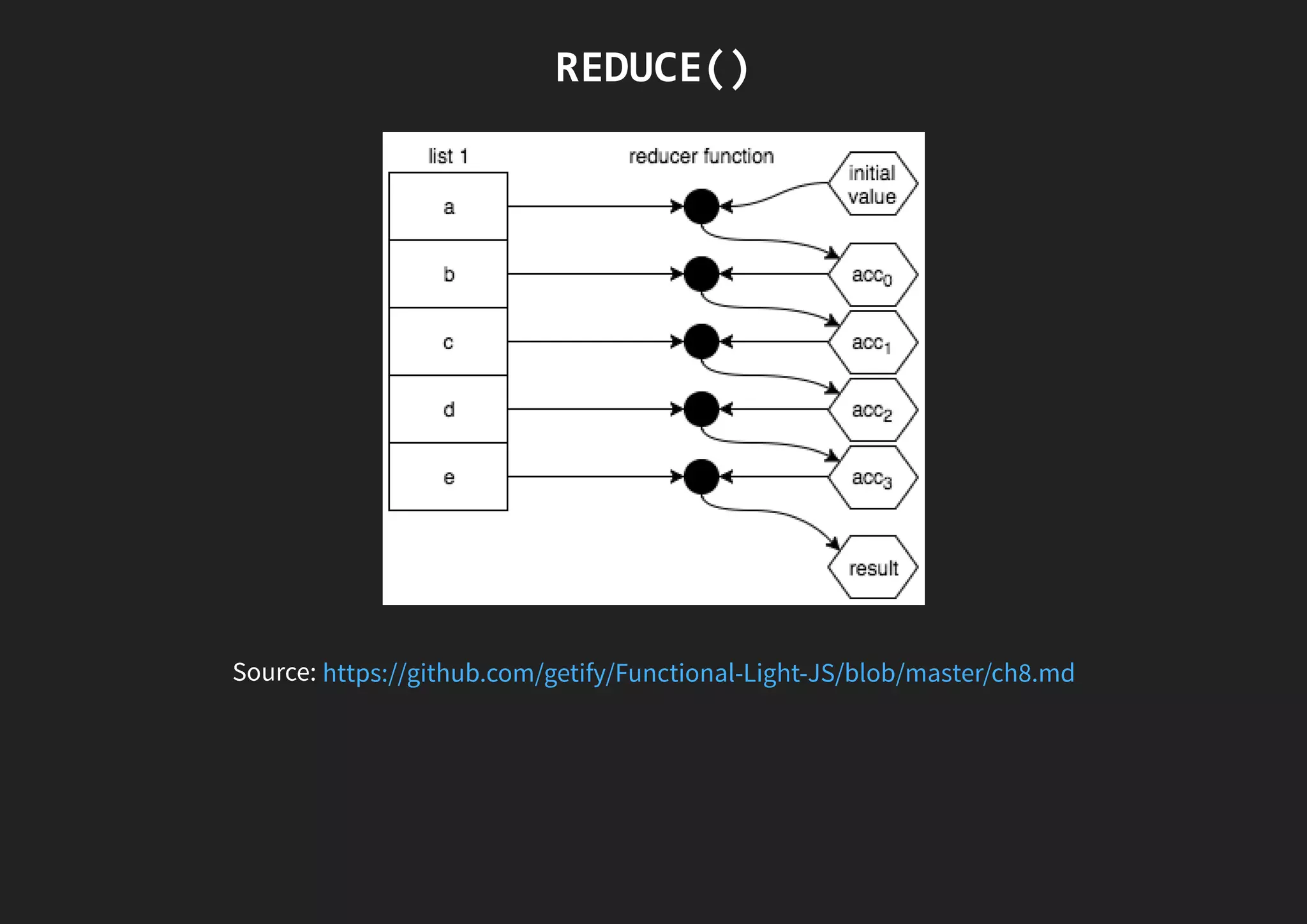
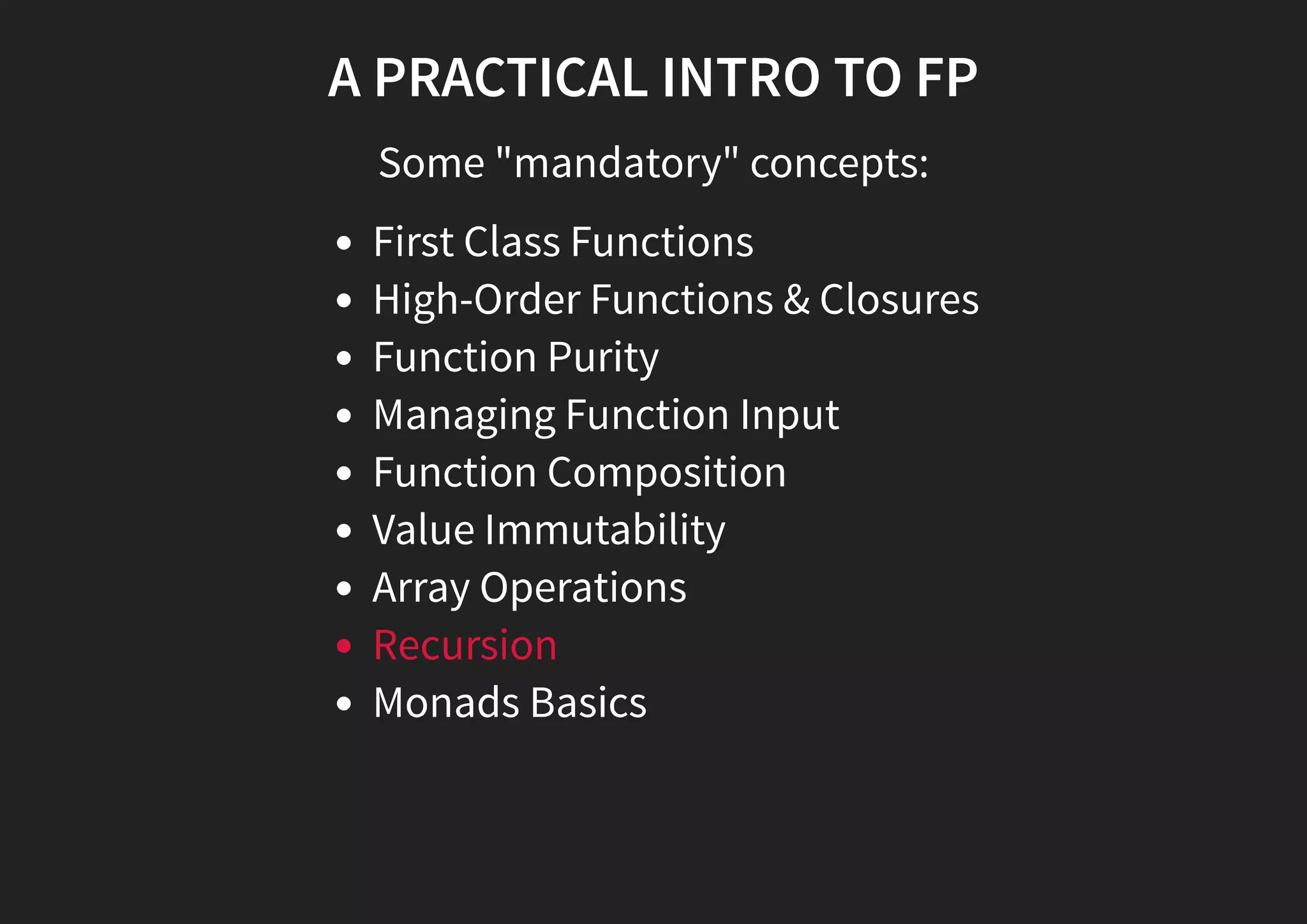

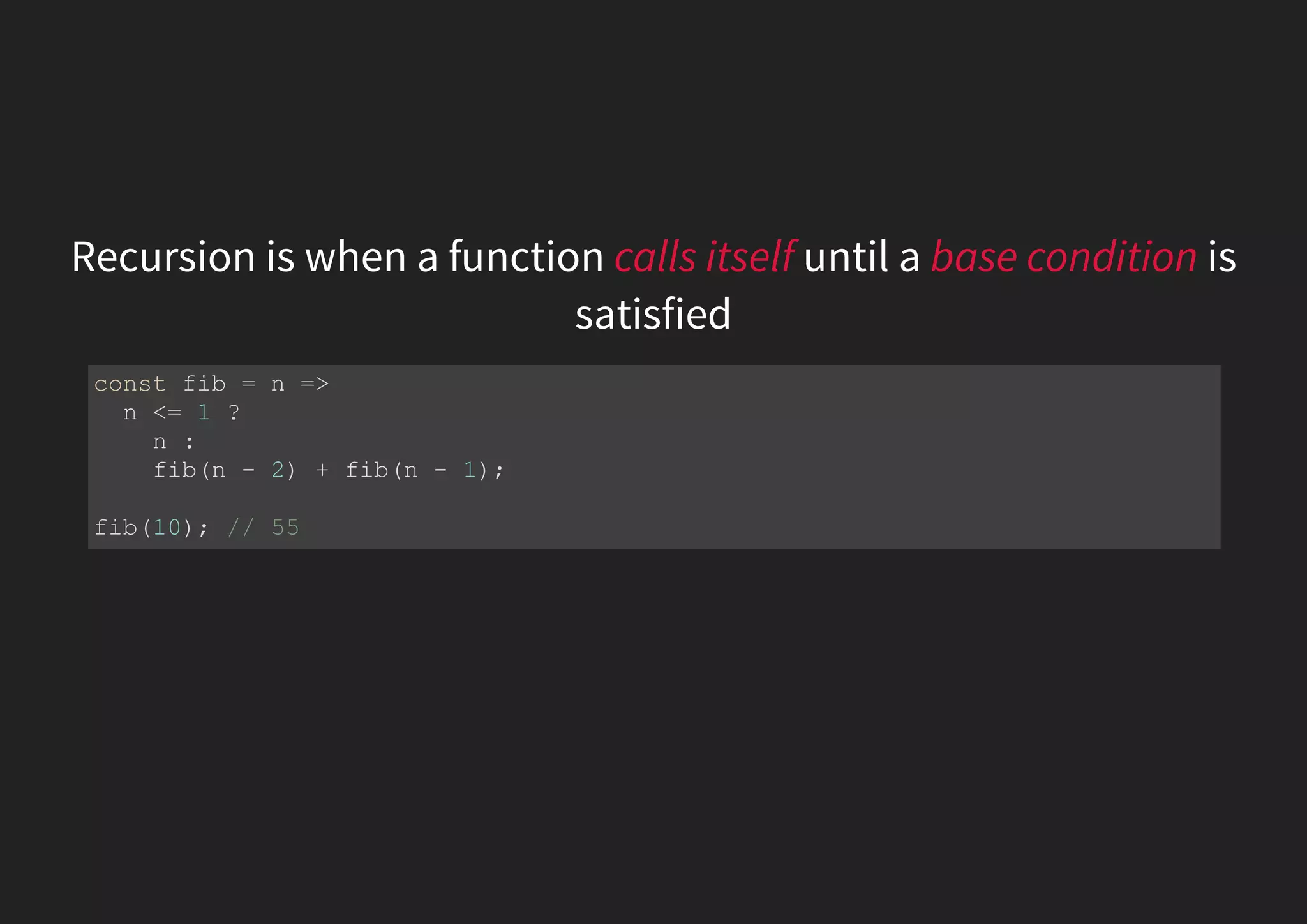
![DECLARATIVE ITERATIONS Although it may be less performant, expressing repetition with recursion is usually more readable because of its declarative nature const sum = (...values) => { let total = 0; for(let i = 0; i < values.length; i++) { total += values[i]; } return total; }; // vs const sum = (firstValue, ...otherValues) => otherValues.length === 0 ? firstValue : firstValue + sum(...otherValues);](https://image.slidesharecdn.com/fp-intro-presentation-170524023111/75/Introduction-to-Functional-Programming-w-JS-84-2048.jpg)

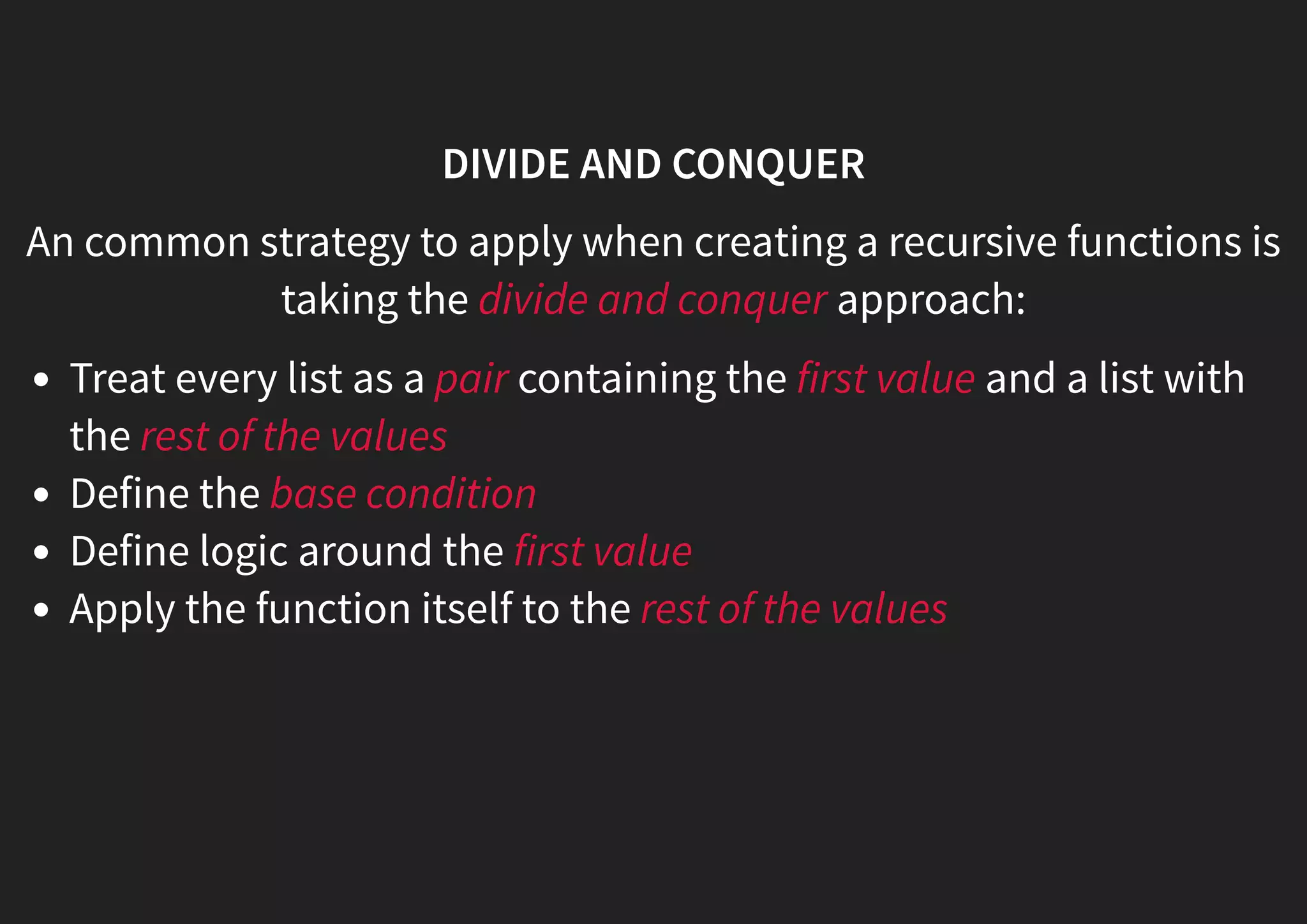
![DIVIDE AND CONQUER Iterative: Recursive: const map = (arr, fn) => { const newArr = []; for (let i = 0; i < arr.length; i++) { newArr.push(fn(arr[i])); } return newArr; }; const map = ([firstVal, ...rest], fn) => firstVal === undefined ? [] : [fn(firstVal), ...map(rest, fn)];](https://image.slidesharecdn.com/fp-intro-presentation-170524023111/75/Introduction-to-Functional-Programming-w-JS-87-2048.jpg)
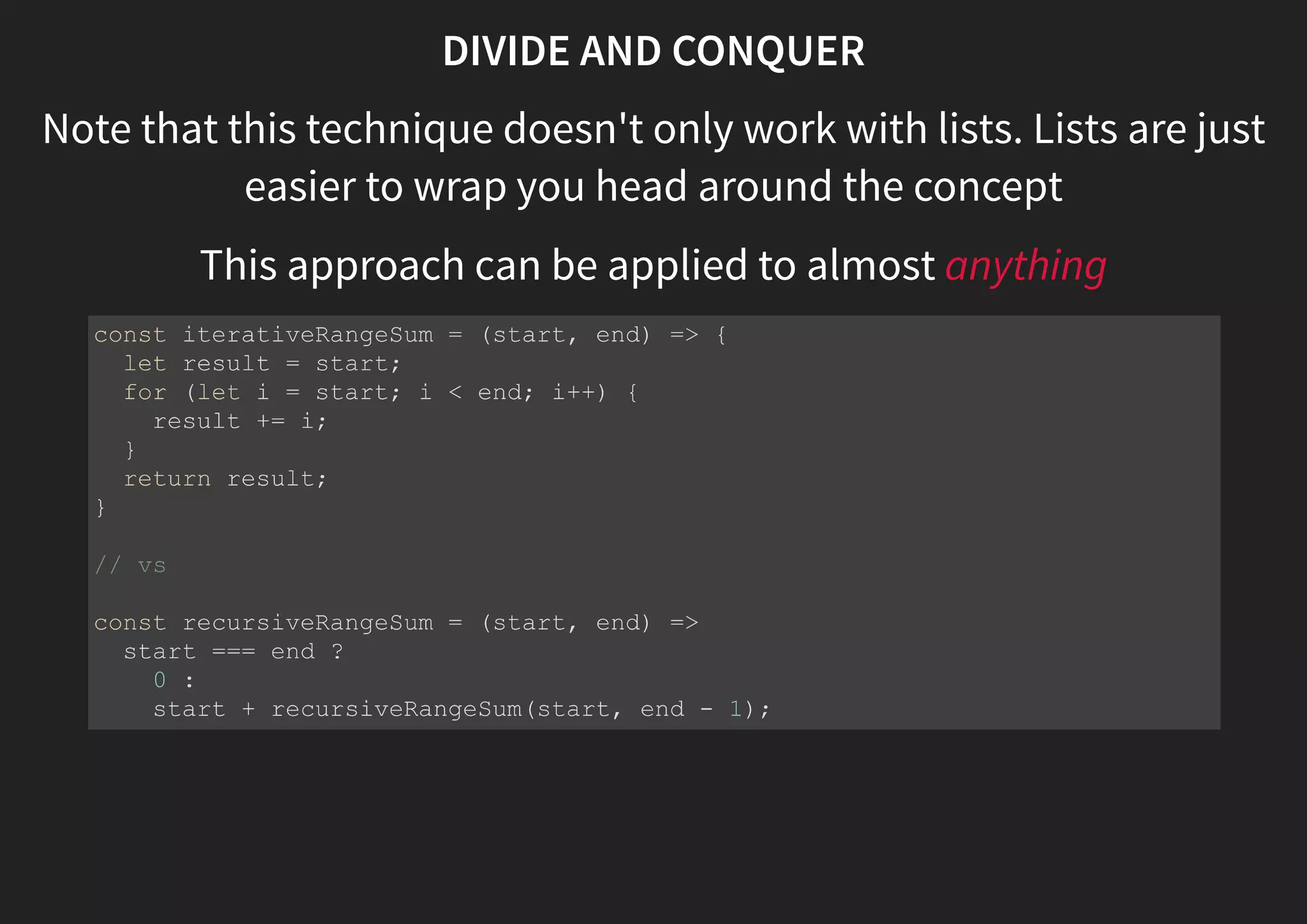
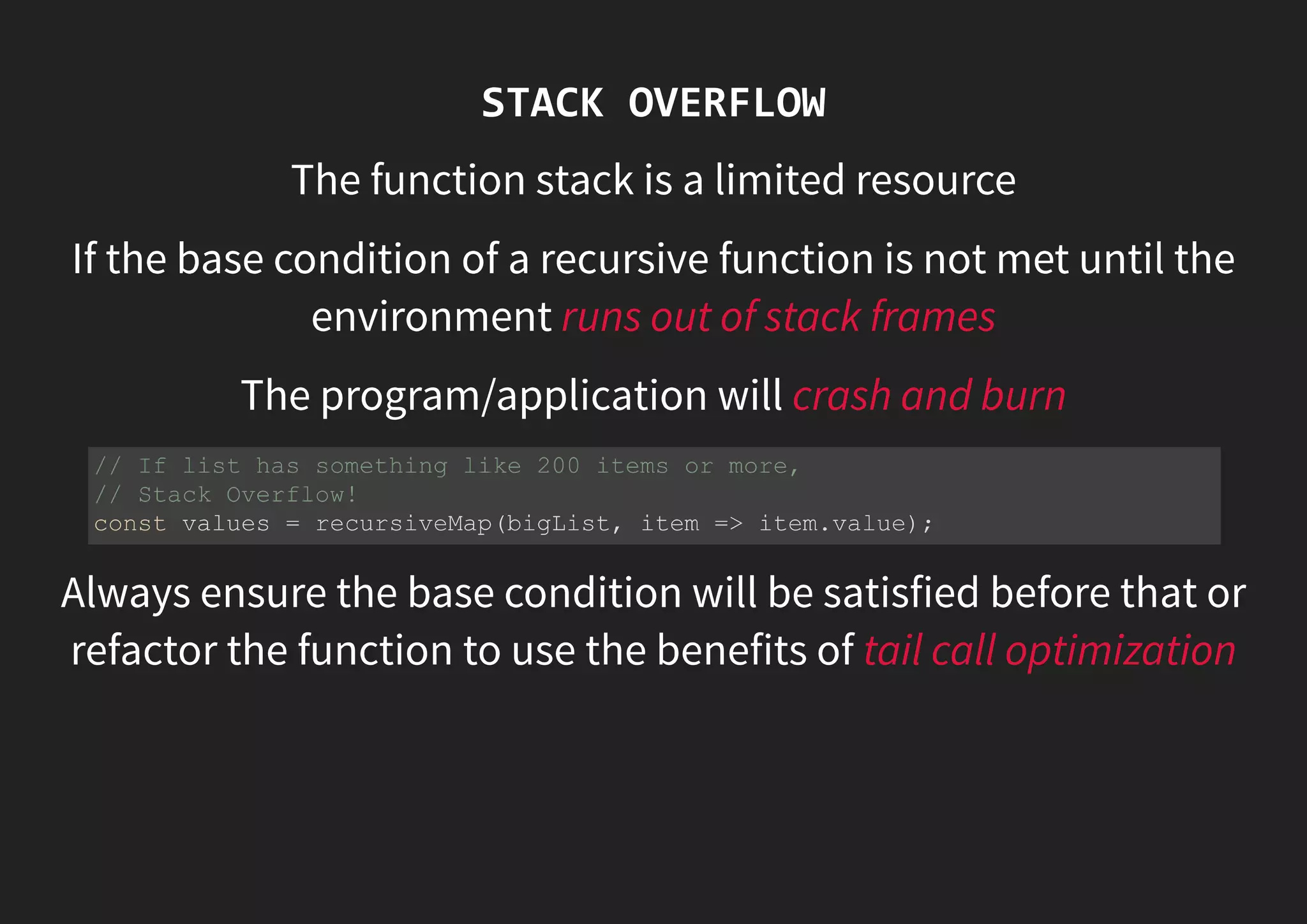
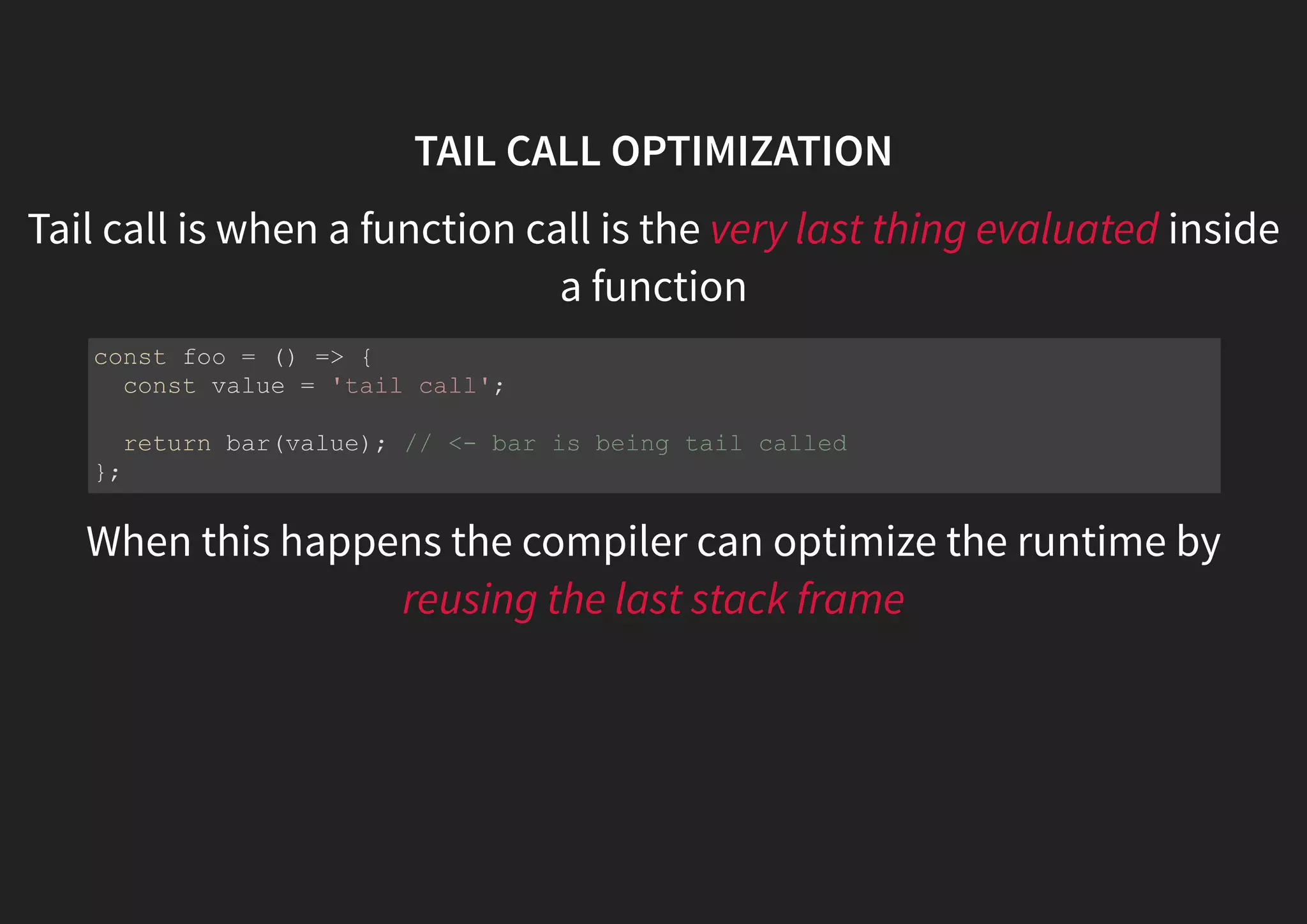
![TAIL CALL OPTIMIZATION By refactoring the recursive map utility from: To use TCO: map() will now support mapping over lists of any size const map = ([firstVal, ...rest], fn) => firstVal === undefined ? [] : [fn(firstVal), ...map(rest, fn)]; const map = ([firstVal, ...rest], fn, result = []) => firstVal === undefined ? result : map(rest, fn, [...result, fn(firstVal)]);](https://image.slidesharecdn.com/fp-intro-presentation-170524023111/75/Introduction-to-Functional-Programming-w-JS-91-2048.jpg)
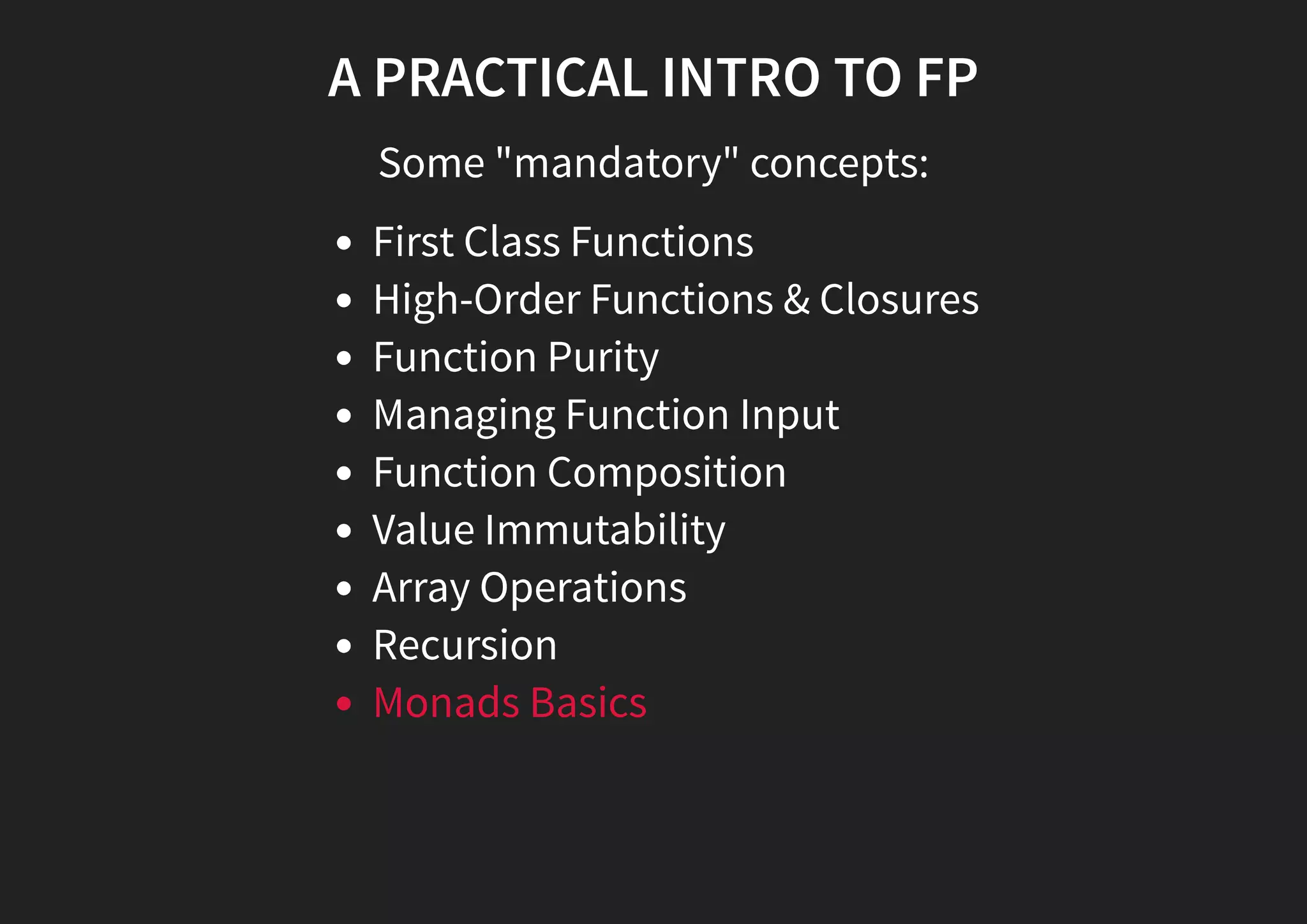


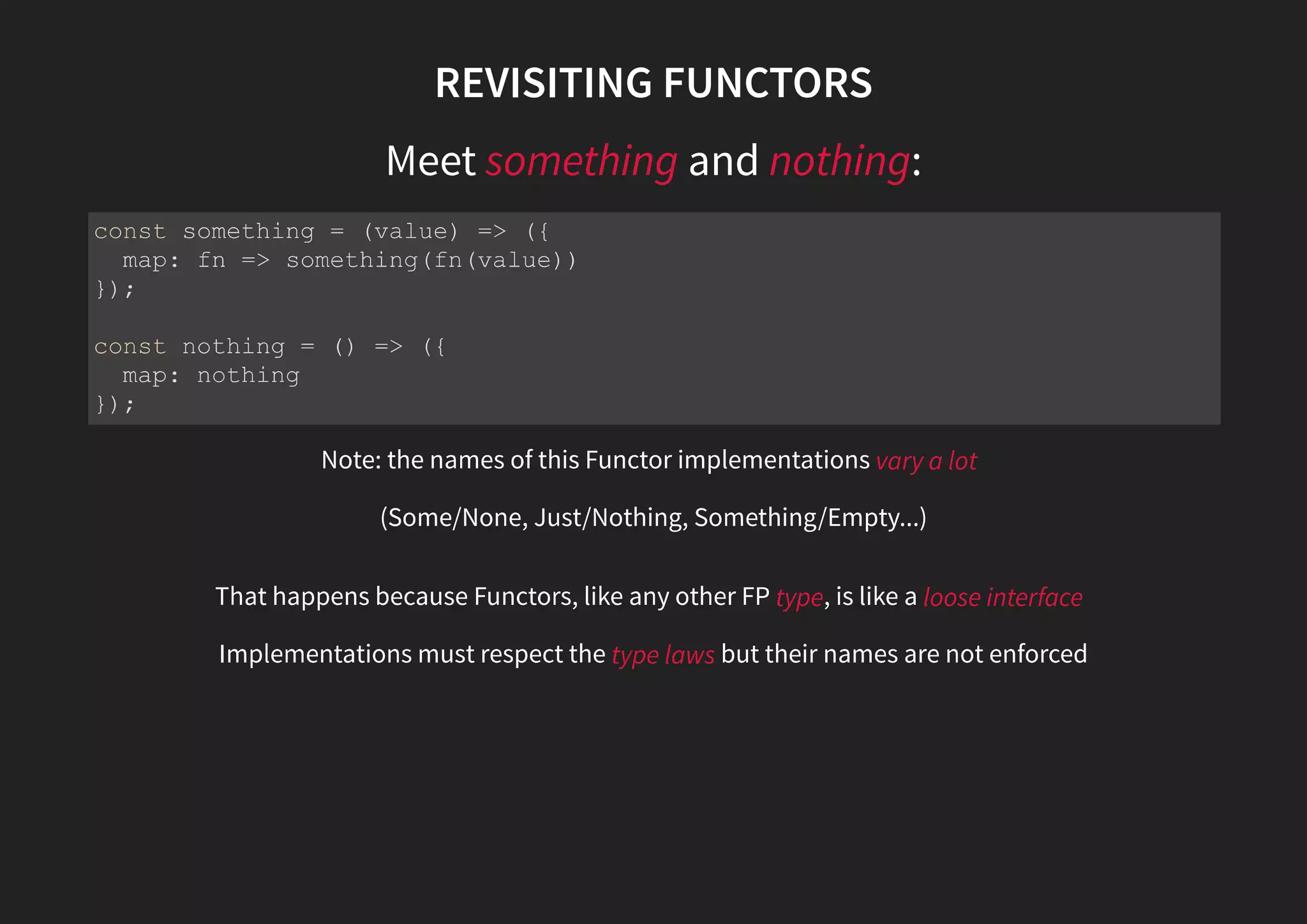
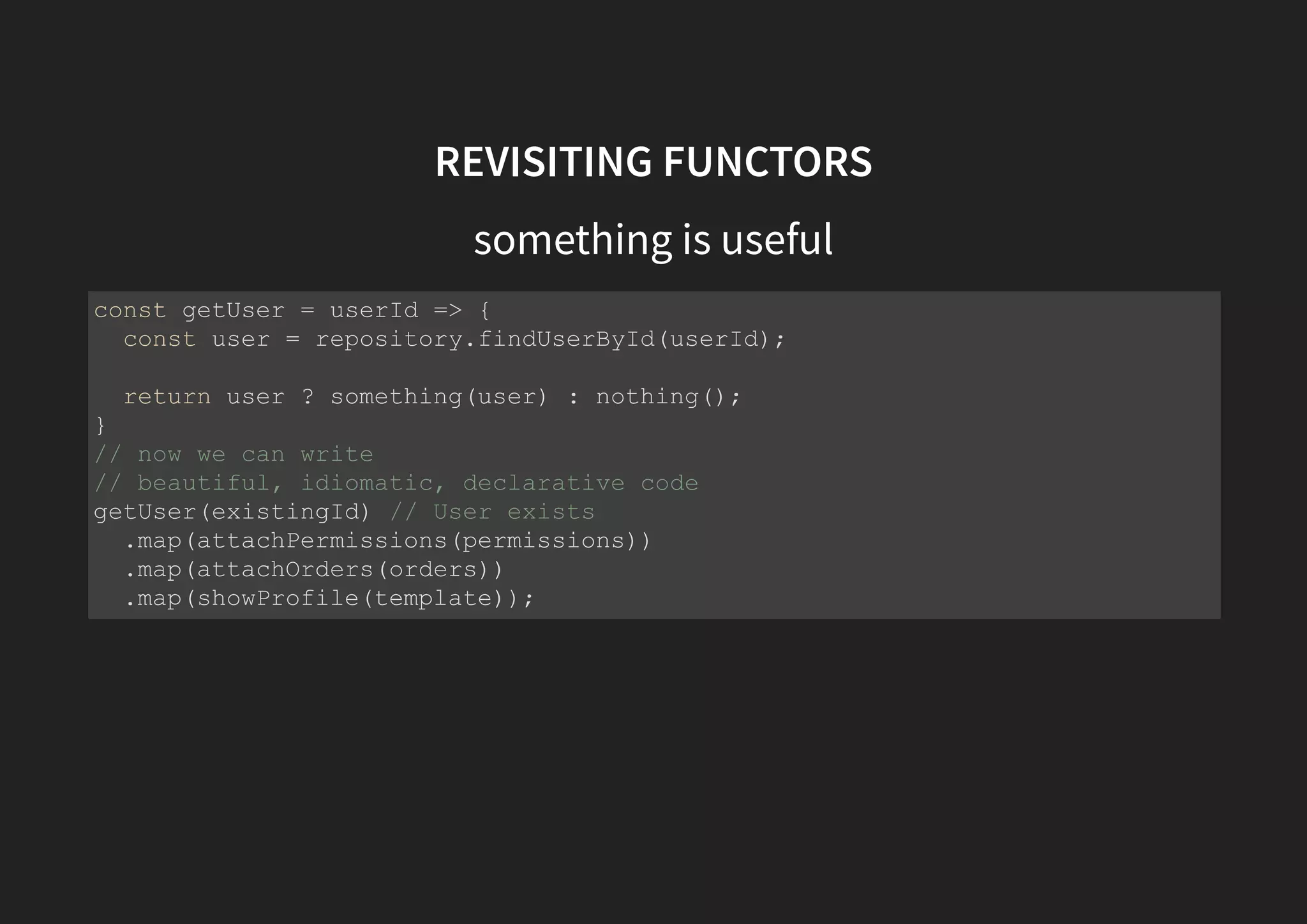
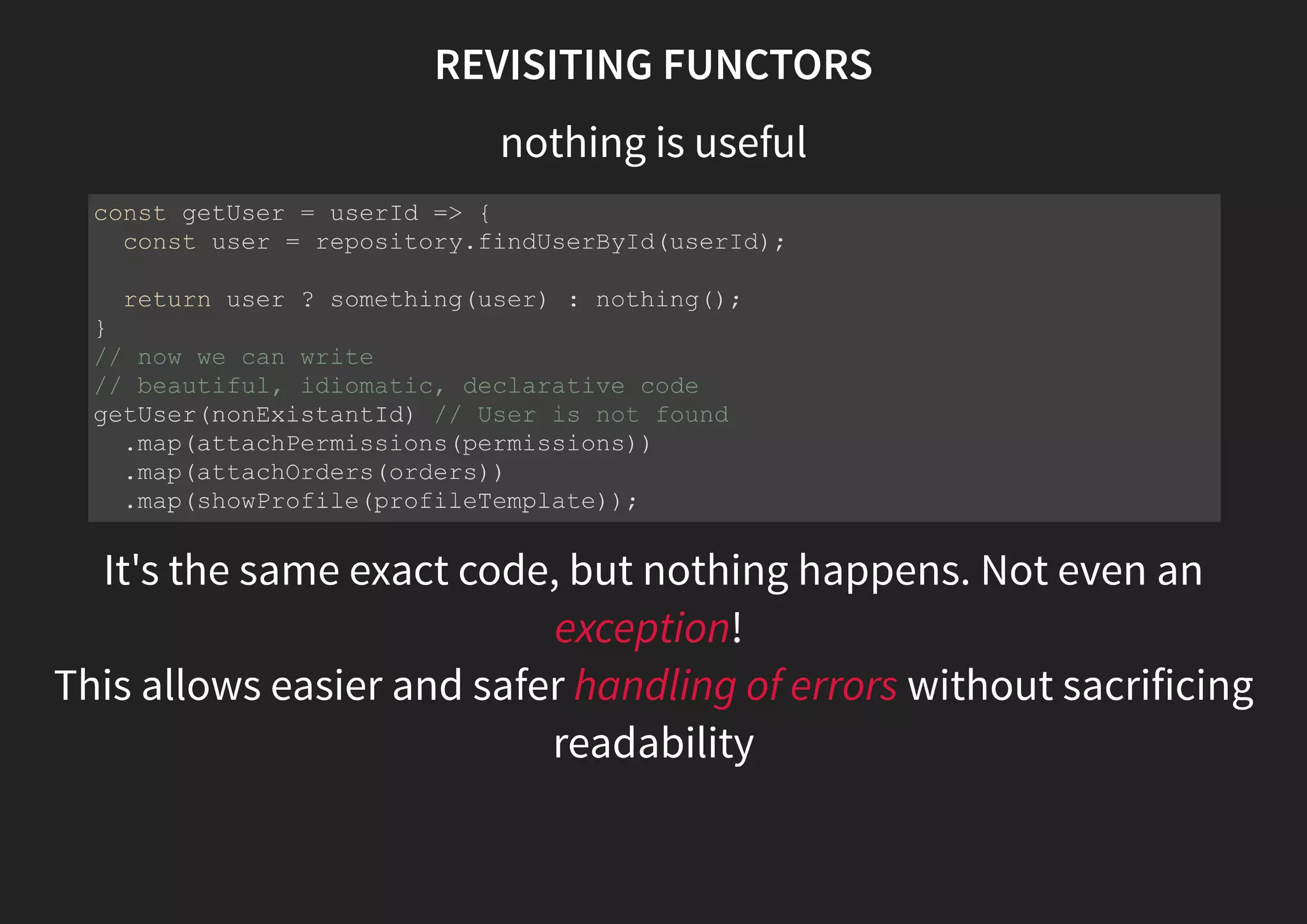
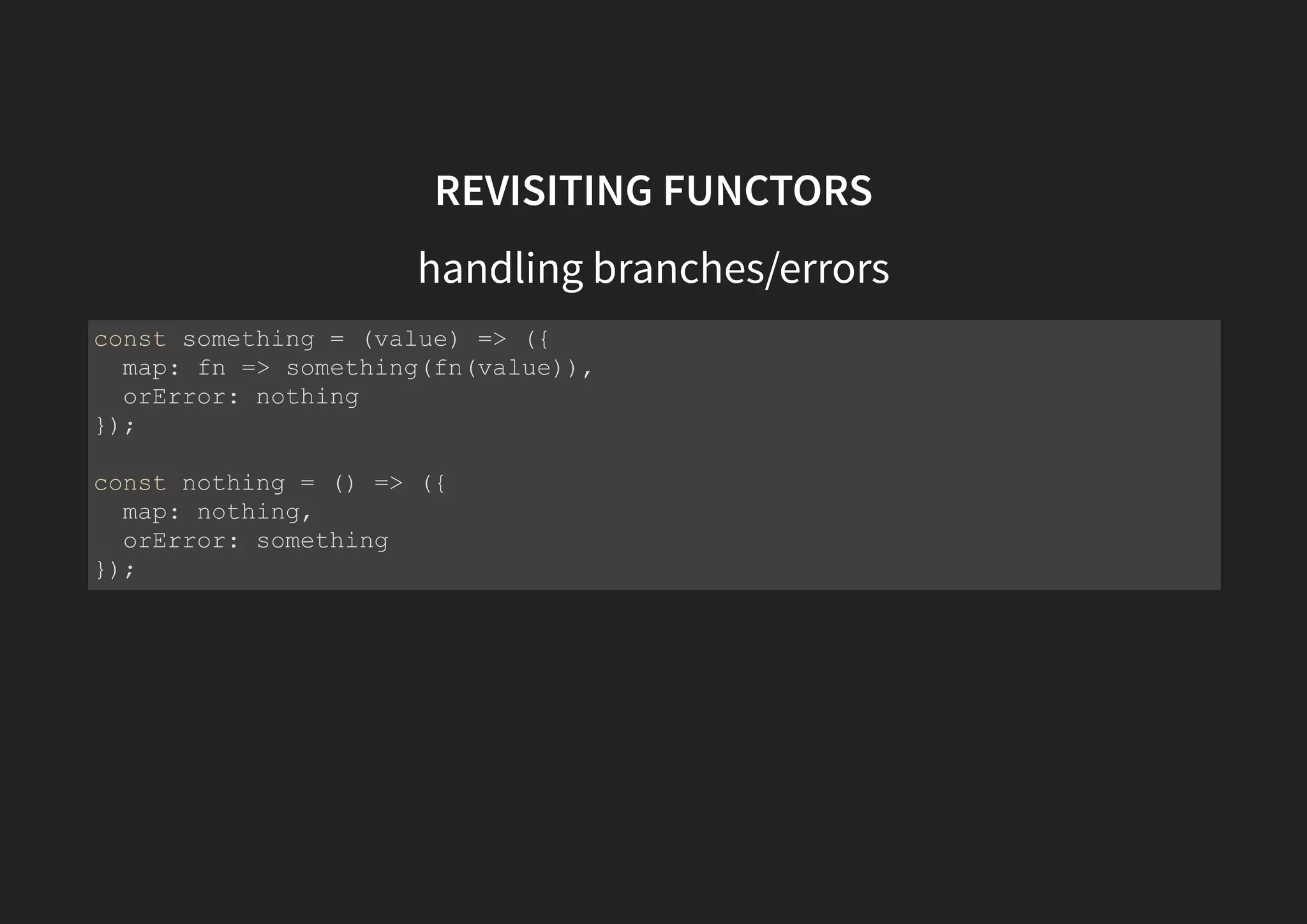
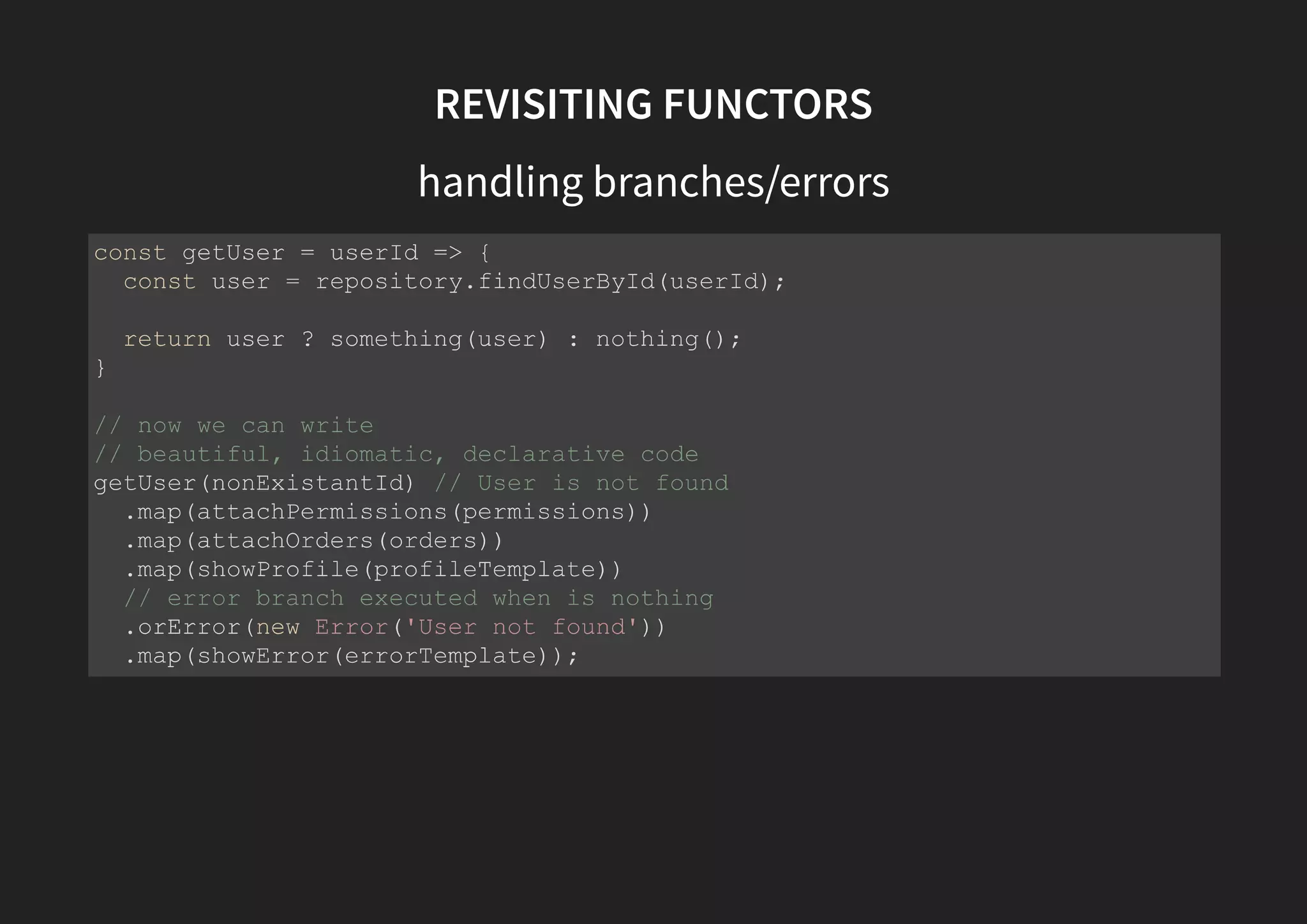
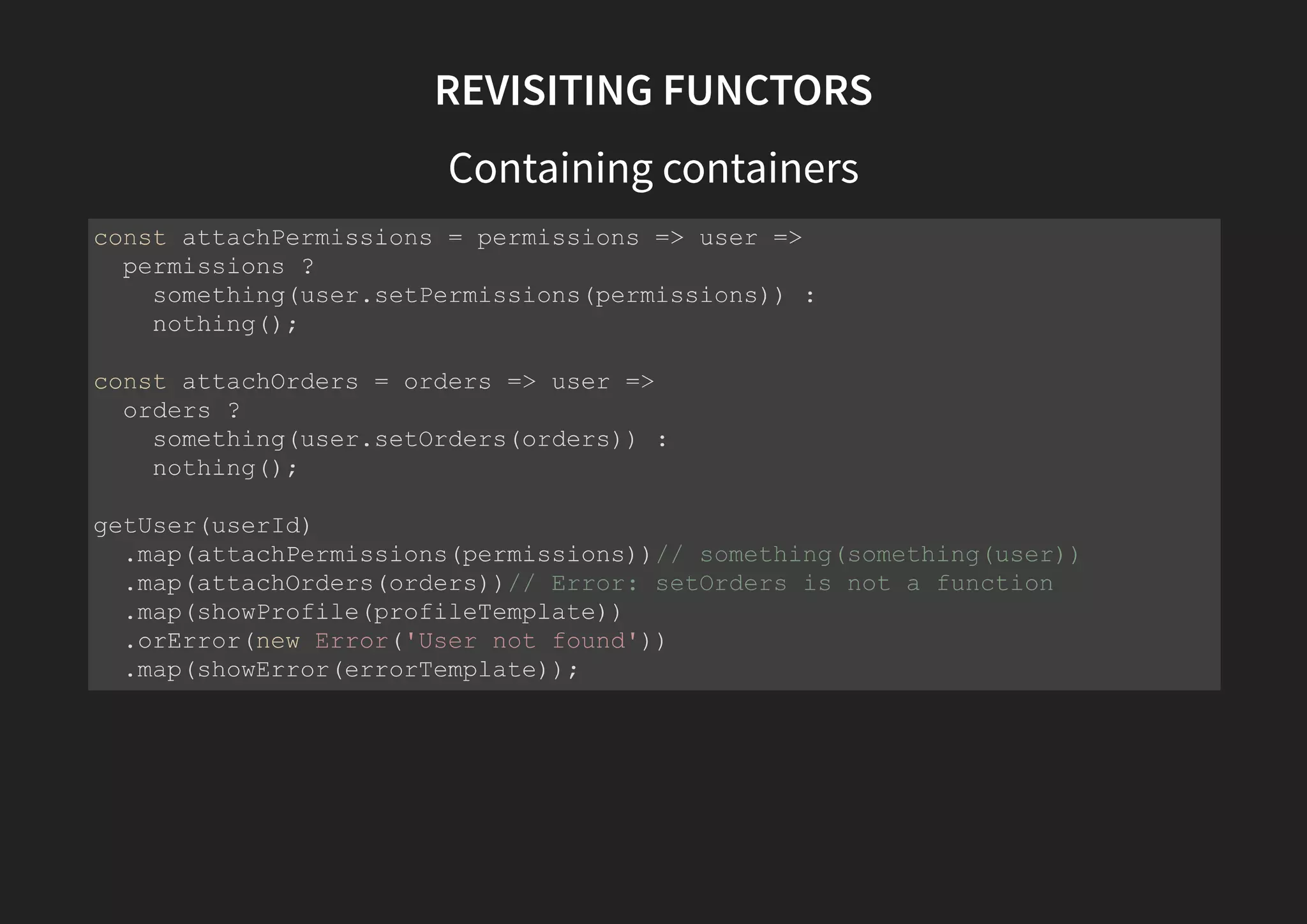
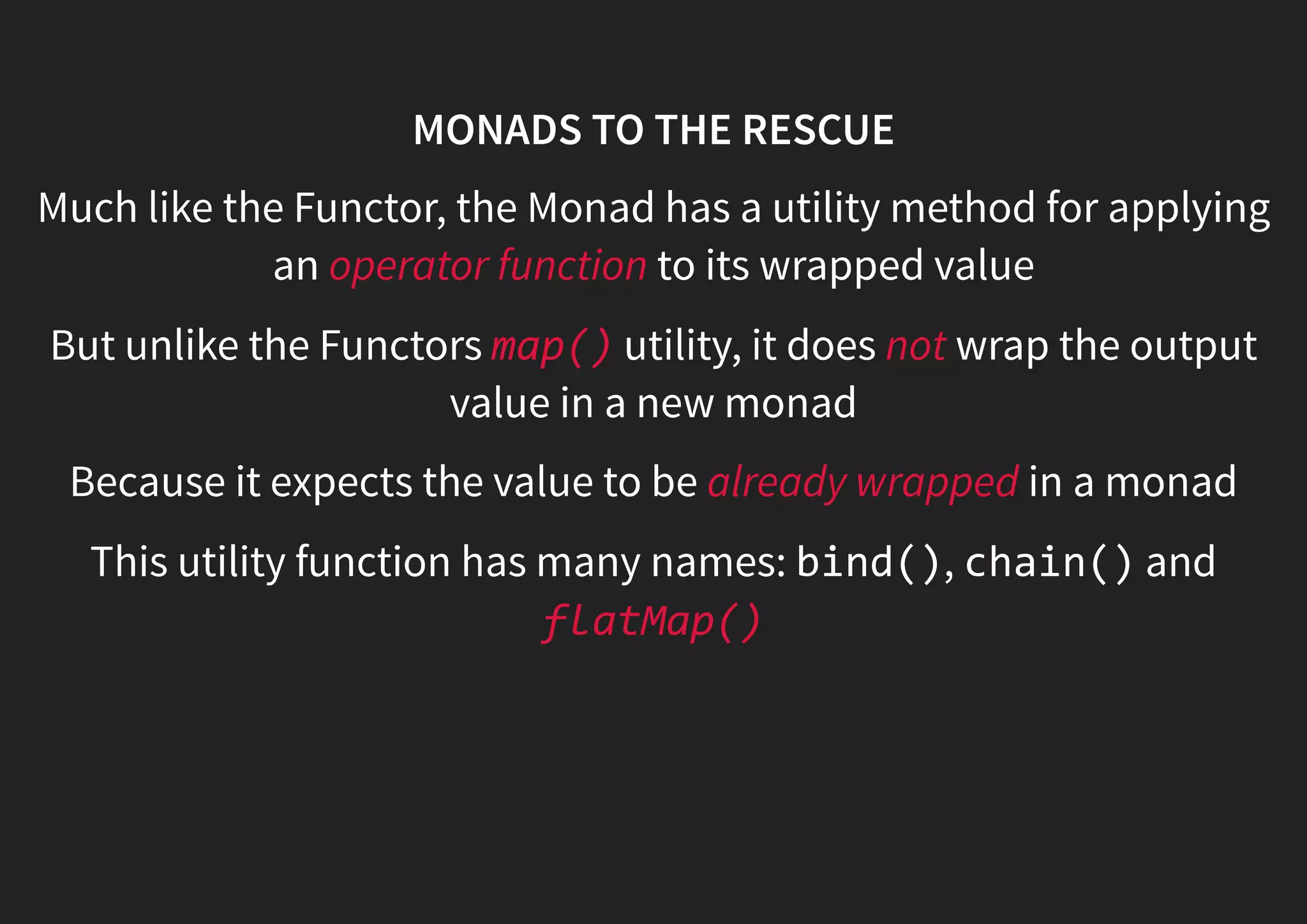
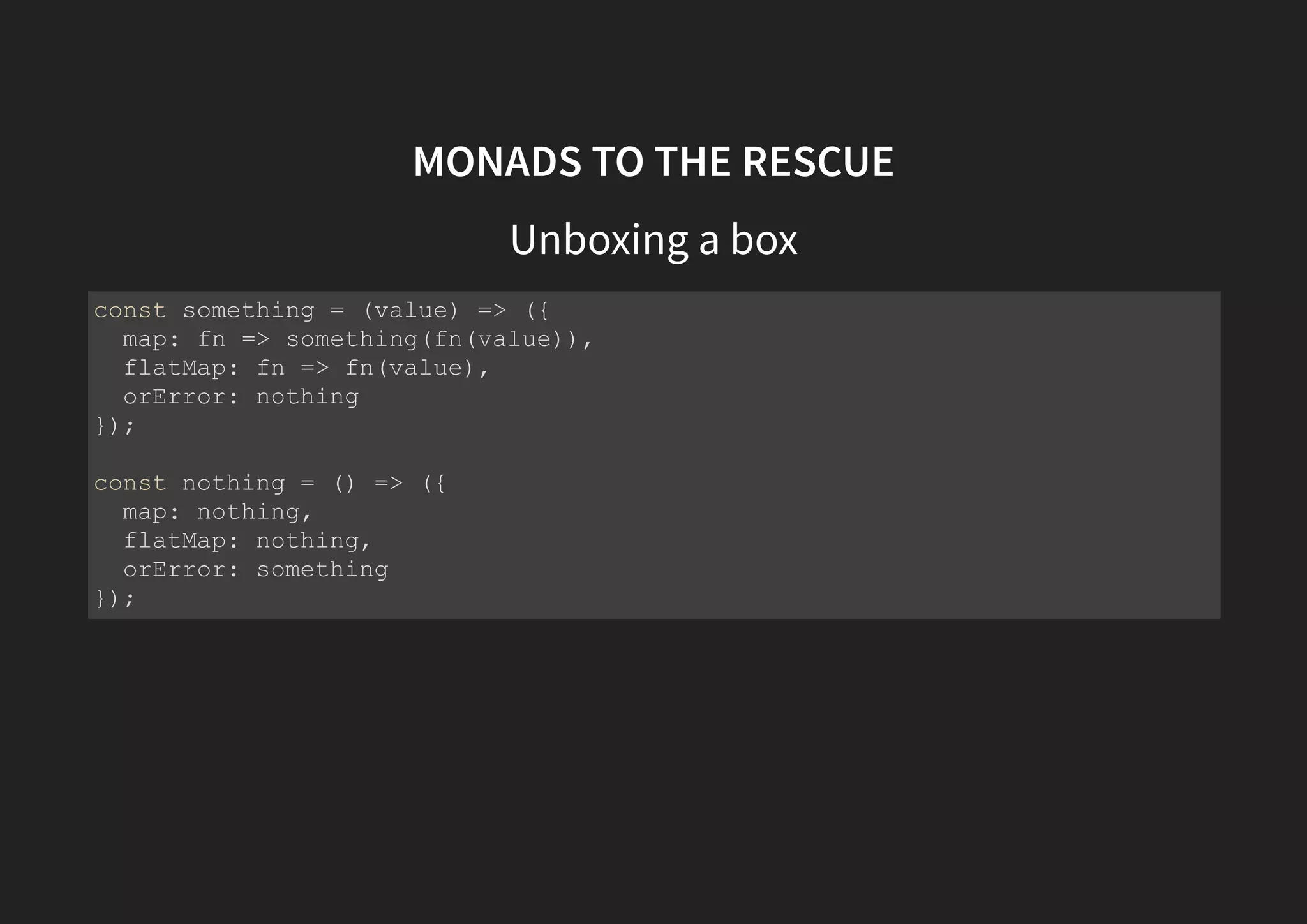
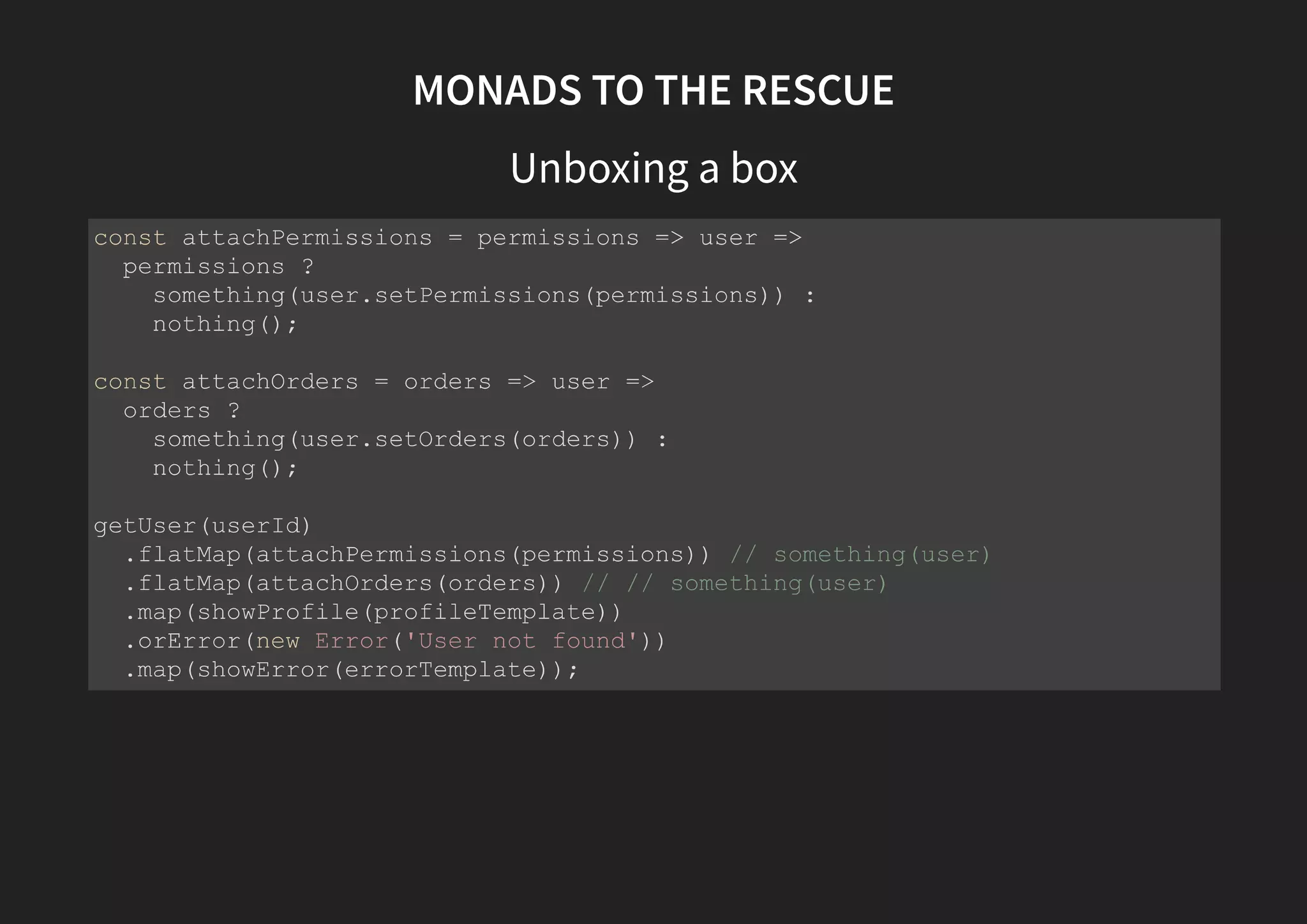
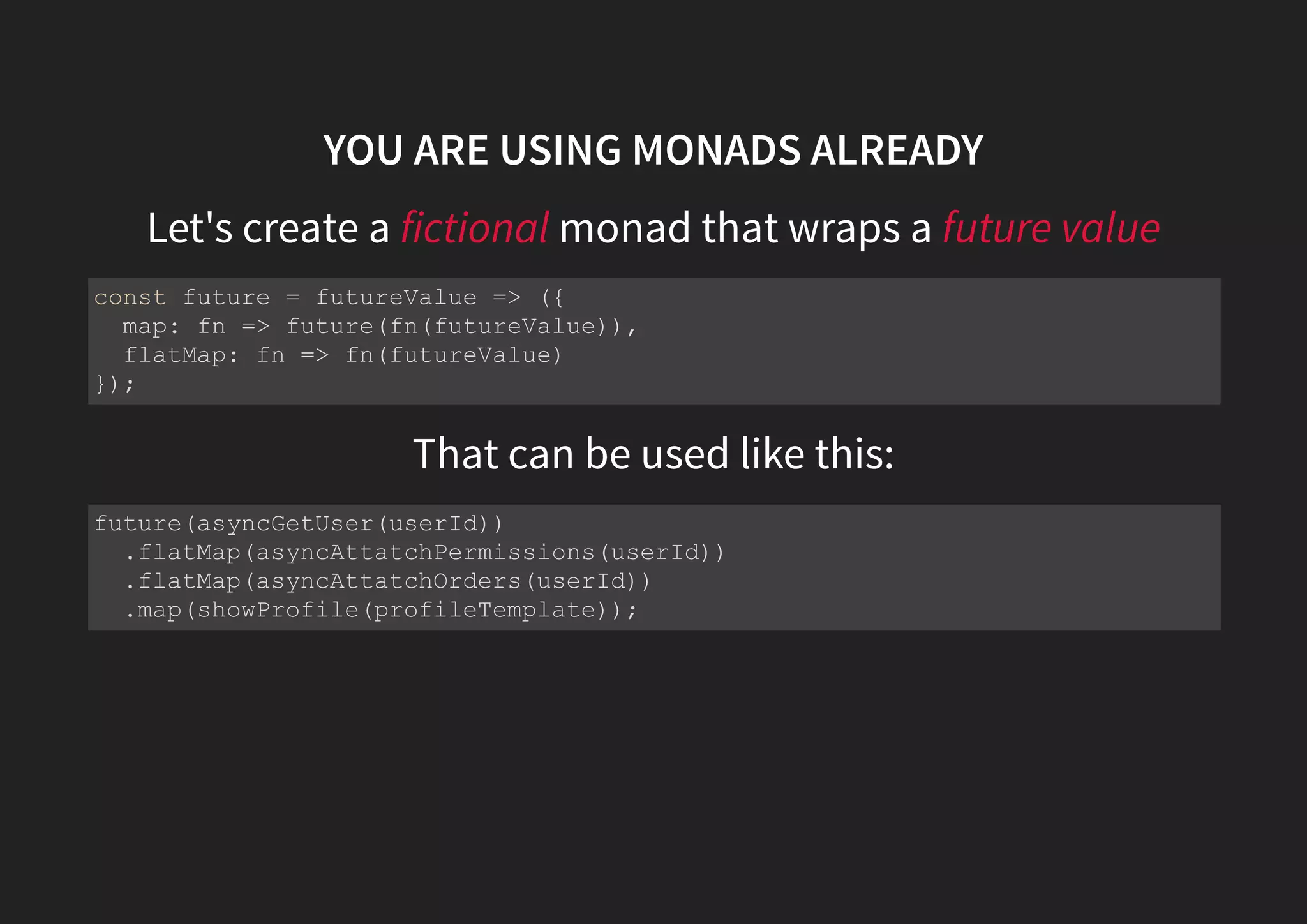
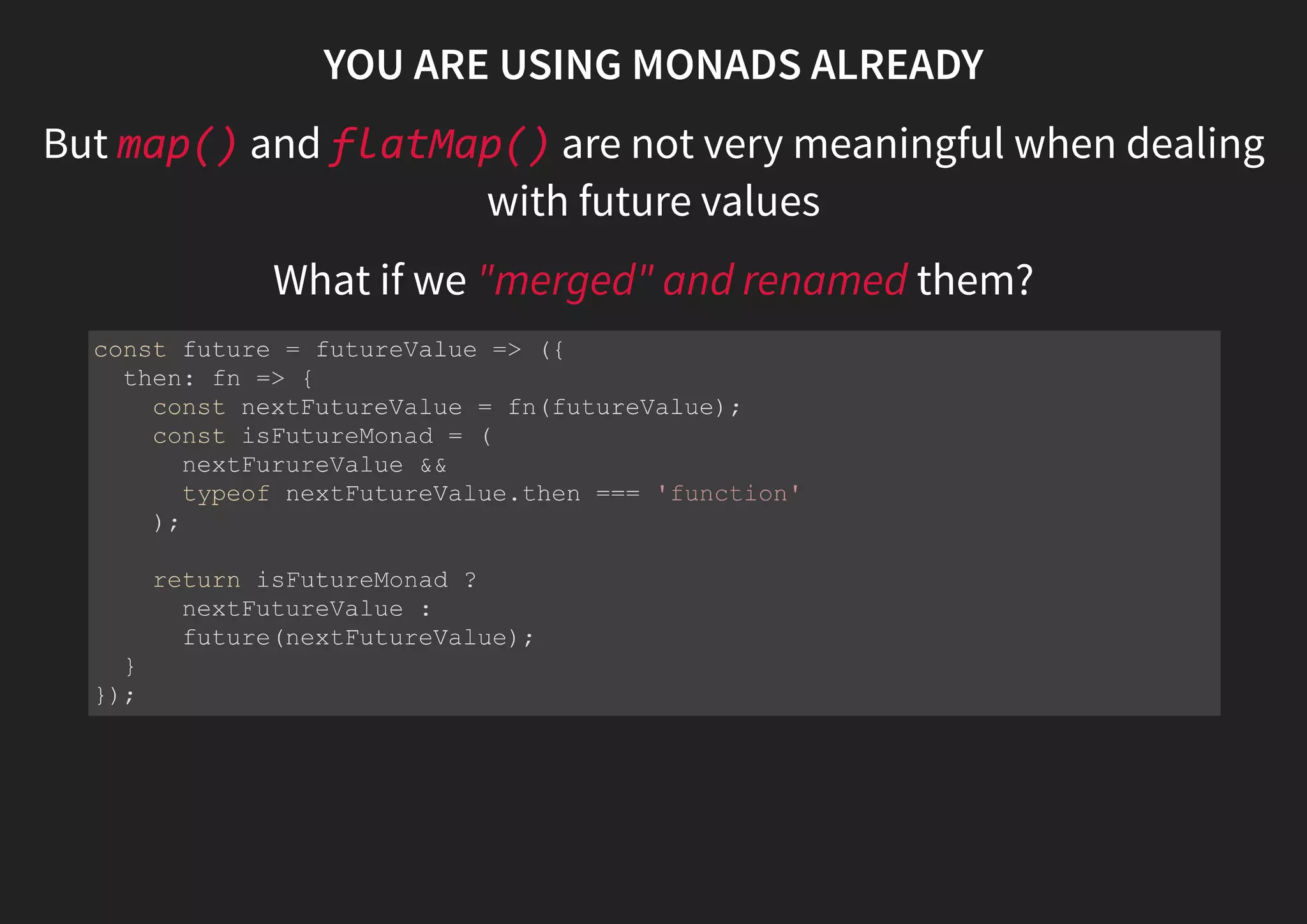
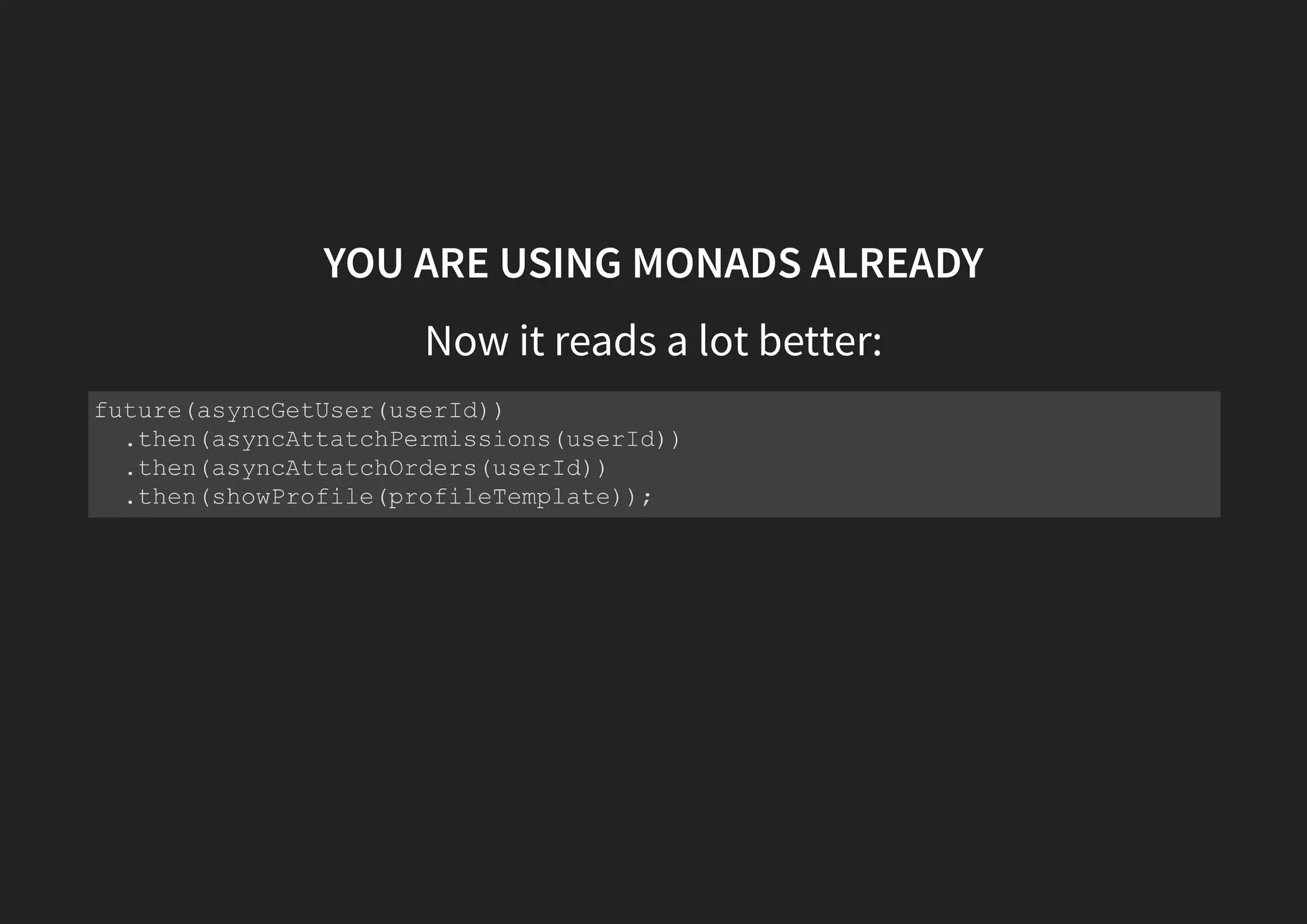


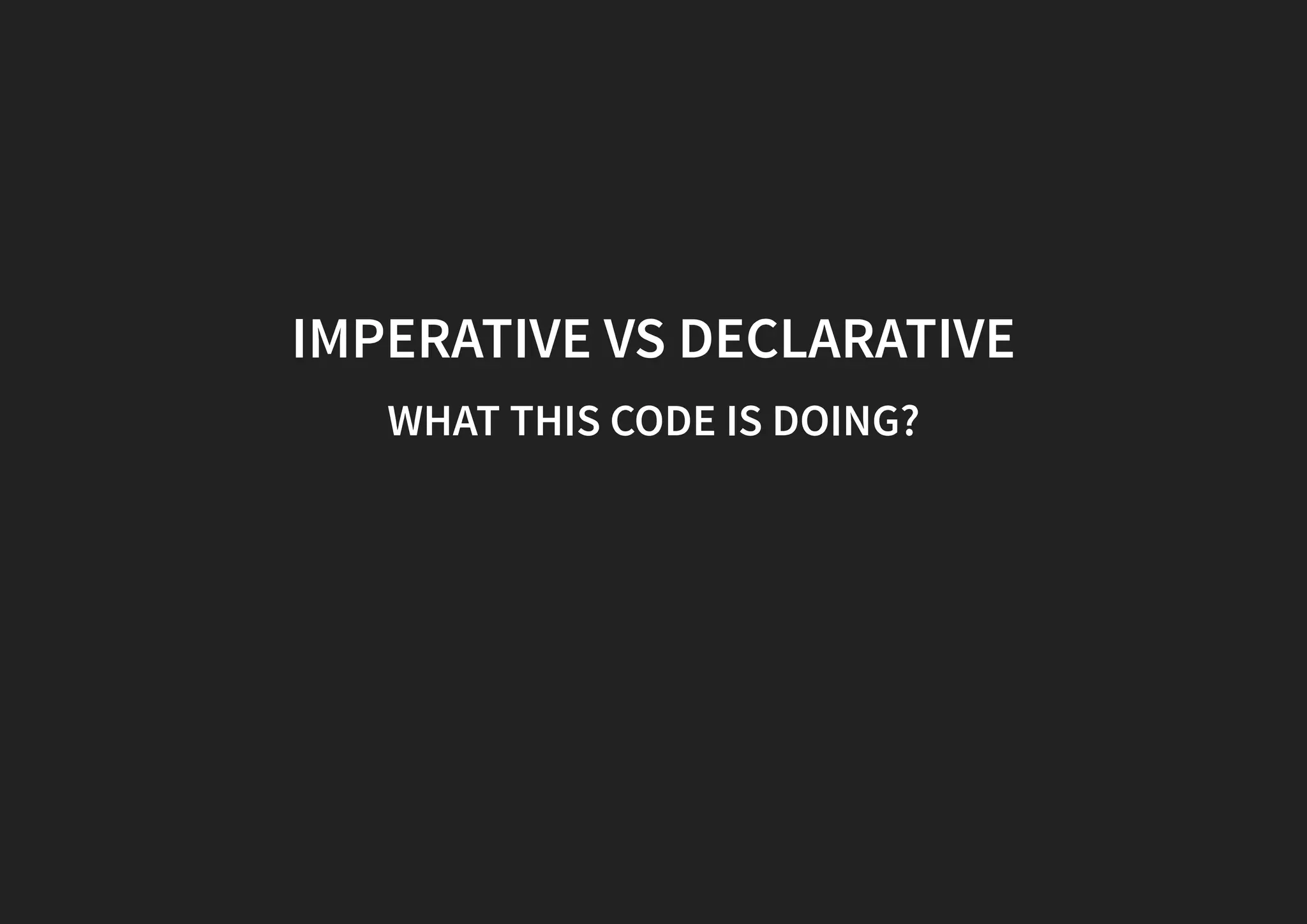
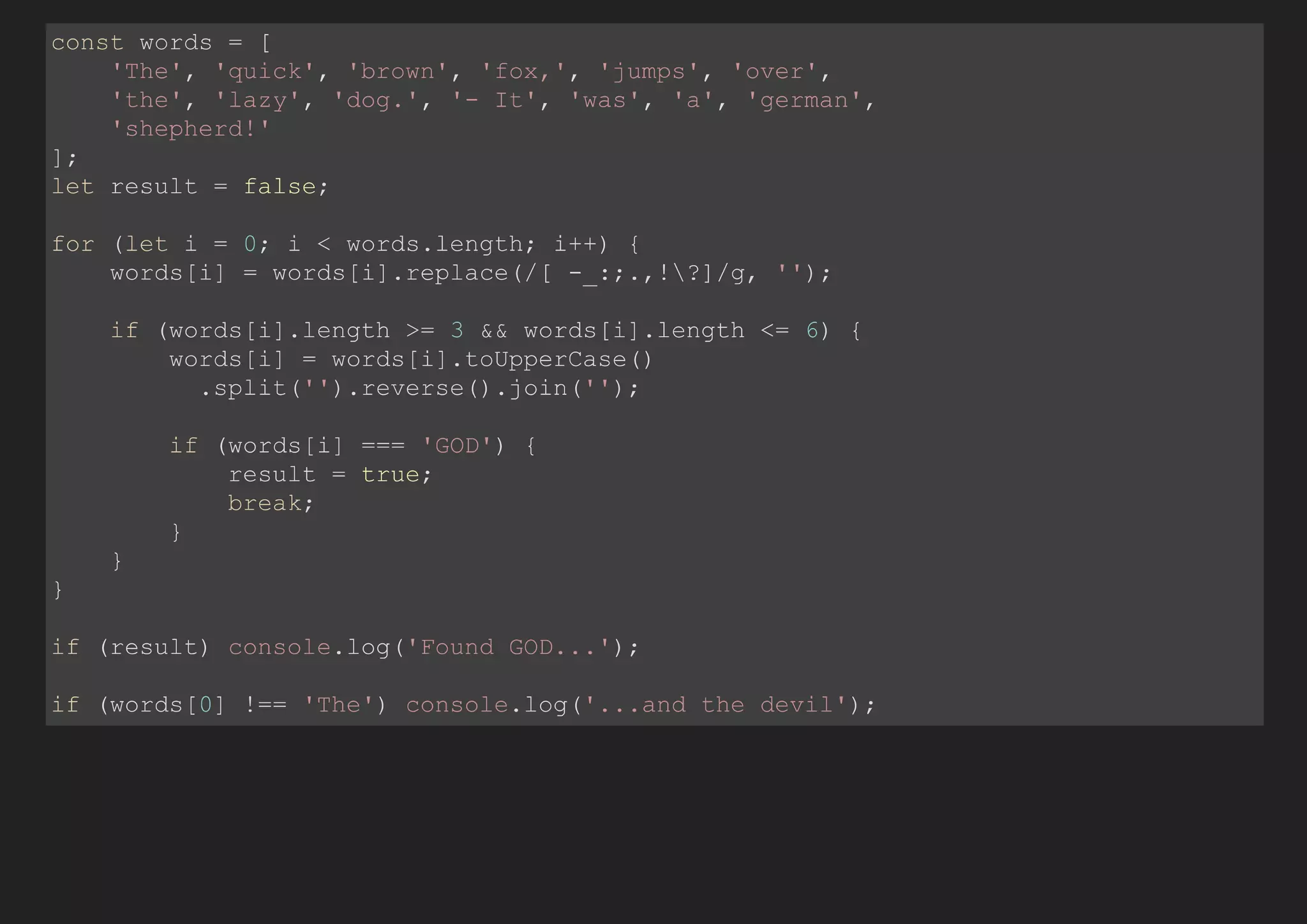

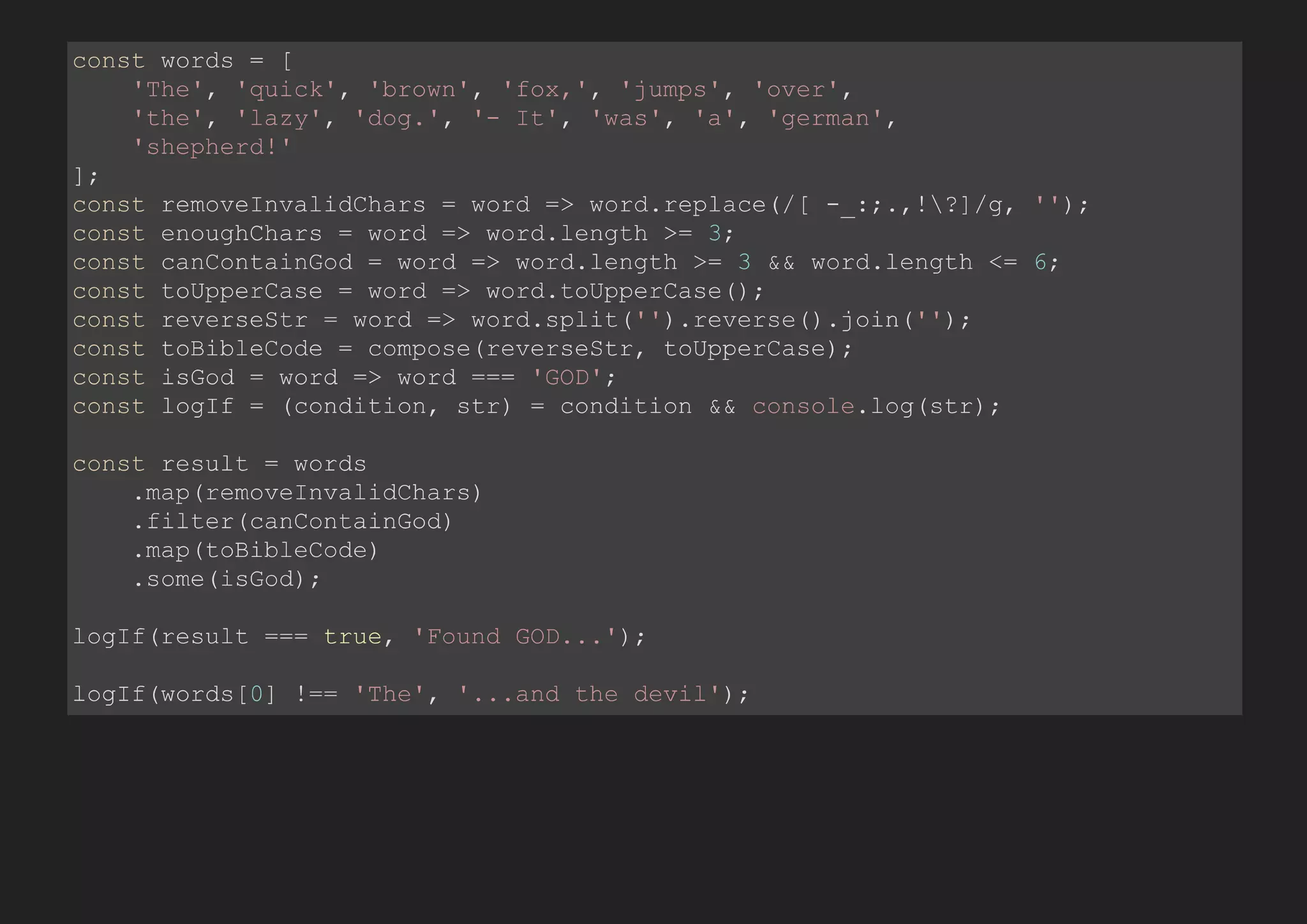
![const words = [ 'The', 'quick', 'brown', 'fox,', 'jumps', 'over', 'the', 'lazy', 'dog.', '- It', 'was', 'a', 'german', 'shepherd!' ]; let result = false; for (let i = 0; i < words.length; i++) { words[i] = words[i].replace(/[ -_:;.,!?]/g, ''); if (words[i].length >= 3 && words[i].length <= 6) { words[i] = words[i].toUpperCase() .split('').reverse().join(''); if (words[i] === 'GOD') { result = true; break; } } } if (result) console.log('Found GOD...'); if (words[0] !== 'The') console.log('...and the devil');](https://image.slidesharecdn.com/fp-intro-presentation-170524023111/75/Introduction-to-Functional-Programming-w-JS-113-2048.jpg)
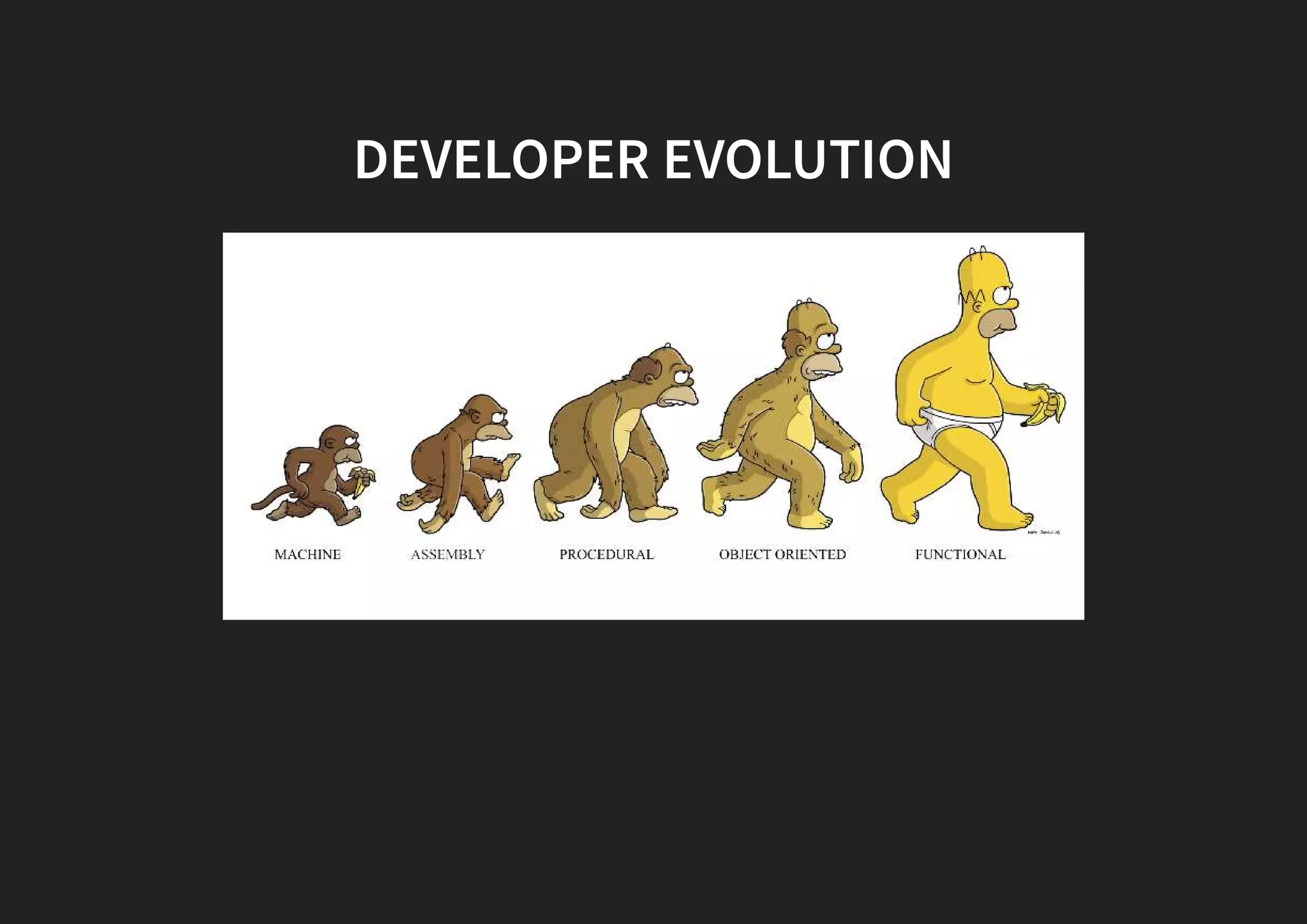
![const words = [ 'The', 'quick', 'brown', 'fox,', 'jumps', 'over', 'the', 'lazy', 'dog.', '- It', 'was', 'a', 'german', 'shepherd!' ]; const removeInvalidChars = word => word.replace(/[ -_:;.,!?]/g, ''); const enoughChars = word => word.length >= 3; const canContainGod = word => word.length >= 3 && word.length <= 6; const toUpperCase = word => word.toUpperCase(); const reverseStr = word => word.split('').reverse().join(''); const toBibleCode = compose(reverseStr, toUpperCase); const isGod = word => word === 'GOD'; const logIf = (condition, str) = condition && console.log(str); const result = words .map(removeInvalidChars) .filter(canContainGod) .map(toBibleCode) .some(isGod); logIf(result === true, 'Found GOD...'); logIf(words[0] !== 'The', '...and the devil');](https://image.slidesharecdn.com/fp-intro-presentation-170524023111/75/Introduction-to-Functional-Programming-w-JS-115-2048.jpg)
